
CHYULU HILLS, AMBOSELLI ECOSYSTEM, KENYA: One-Ton, one of the most iconic tuskers in the world, is seen at a water hole in the Chulu hills. The Amboseli ecosystem, home to the most iconic elephant in the world, is under threat like never before. The Group Ranch system, which governed Maasai land rights and usage, has been dismantled and for the first time in the modern era, individual members have the right to sell their land parcels. The Group Ranches preserved land masses intact, used for both pastoralism as well as wildlife, now those are being fragmented as some Maasai have chosen to sell to outsiders. We now see factories, urban sprawl and large, water hungry agriculture in former elephant habitat. As a result, the Amboseli Ecosystem is being broken up and vital animal corridors are being disturbed and cut off. This affects all migrating animals who need land and water to survive. At this time, one of the solutions is to help local Maasai run their own conservancies and see benefit from tourism as well as maintain their traditional lifestyles. This involves buying land leases, and expensive and complicated process. Straddling southern Kenya and northern Tanzania, Big Life Foundation works to protect over 1.6 million acres in the Amboseli-Tsavo-Kilimanjaro ecosystem. They use innovative conservation strategies that can serve as models elsewhere and collaborate closely with local communities, partner NGOs, national parks, and government agencies, Big Life seeks to protect and sustain East Africa’s wildlife and natural habitats, including one of the world’s best-known elephant populations.

CHYULU HILLS, AMBOSELLI ECOSYSTEM, KENYA: One-Ton, one of the most iconic tuskers in the world, is seen at a water hole in the Chulu hills. The Amboseli ecosystem, home to the most iconic elephant in the world, is under threat like never before. The Group Ranch system, which governed Maasai land rights and usage, has been dismantled and for the first time in the modern era, individual members have the right to sell their land parcels. The Group Ranches preserved land masses intact, used for both pastoralism as well as wildlife, now those are being fragmented as some Maasai have chosen to sell to outsiders. We now see factories, urban sprawl and large, water hungry agriculture in former elephant habitat. As a result, the Amboseli Ecosystem is being broken up and vital animal corridors are being disturbed and cut off. This affects all migrating animals who need land and water to survive. At this time, one of the solutions is to help local Maasai run their own conservancies and see benefit from tourism as well as maintain their traditional lifestyles. This involves buying land leases, and expensive and complicated process. Straddling southern Kenya and northern Tanzania, Big Life Foundation works to protect over 1.6 million acres in the Amboseli-Tsavo-Kilimanjaro ecosystem. They use innovative conservation strategies that can serve as models elsewhere and collaborate closely with local communities, partner NGOs, national parks, and government agencies, Big Life seeks to protect and sustain East Africa’s wildlife and natural habitats, including one of the world’s best-known elephant populations.

CHYULU HILLS, AMBOSELLI ECOSYSTEM, KENYA: One-Ton, one of the most iconic tuskers in the world, is seen at a water hole in the Chulu hills. The Amboseli ecosystem, home to the most iconic elephant in the world, is under threat like never before. The Group Ranch system, which governed Maasai land rights and usage, has been dismantled and for the first time in the modern era, individual members have the right to sell their land parcels. The Group Ranches preserved land masses intact, used for both pastoralism as well as wildlife, now those are being fragmented as some Maasai have chosen to sell to outsiders. We now see factories, urban sprawl and large, water hungry agriculture in former elephant habitat. As a result, the Amboseli Ecosystem is being broken up and vital animal corridors are being disturbed and cut off. This affects all migrating animals who need land and water to survive. At this time, one of the solutions is to help local Maasai run their own conservancies and see benefit from tourism as well as maintain their traditional lifestyles. This involves buying land leases, and expensive and complicated process. Straddling southern Kenya and northern Tanzania, Big Life Foundation works to protect over 1.6 million acres in the Amboseli-Tsavo-Kilimanjaro ecosystem. They use innovative conservation strategies that can serve as models elsewhere and collaborate closely with local communities, partner NGOs, national parks, and government agencies, Big Life seeks to protect and sustain East Africa’s wildlife and natural habitats, including one of the world’s best-known elephant populations.

CHYULU HILLS, AMBOSELLI ECOSYSTEM, KENYA: One-Ton, one of the most iconic tuskers in the world, is seen at a water hole in the Chulu hills. The Amboseli ecosystem, home to the most iconic elephant in the world, is under threat like never before. The Group Ranch system, which governed Maasai land rights and usage, has been dismantled and for the first time in the modern era, individual members have the right to sell their land parcels. The Group Ranches preserved land masses intact, used for both pastoralism as well as wildlife, now those are being fragmented as some Maasai have chosen to sell to outsiders. We now see factories, urban sprawl and large, water hungry agriculture in former elephant habitat. As a result, the Amboseli Ecosystem is being broken up and vital animal corridors are being disturbed and cut off. This affects all migrating animals who need land and water to survive. At this time, one of the solutions is to help local Maasai run their own conservancies and see benefit from tourism as well as maintain their traditional lifestyles. This involves buying land leases, and expensive and complicated process. Straddling southern Kenya and northern Tanzania, Big Life Foundation works to protect over 1.6 million acres in the Amboseli-Tsavo-Kilimanjaro ecosystem. They use innovative conservation strategies that can serve as models elsewhere and collaborate closely with local communities, partner NGOs, national parks, and government agencies, Big Life seeks to protect and sustain East Africa’s wildlife and natural habitats, including one of the world’s best-known elephant populations.

AMBOSELLI ECOSYSTEM, KENYA: The swamps of Amboseli National Park are the vital reservoir for water for the region. As development and population has grown in the area and Maasai have sold off land traditionally utilized in harmony with animals, elephants and other animals find their movement increasingly restricted. and their access to water threatened. Amboseli National Park (government owned and managed) is to the south centre of the ecosystem. It protects the largest permanent water sources in the ecosystem, which are a series of spring fed swamps (water originates on Kilimanjaro). Strictly a wildlife refuge, no settlement allowed, cattle allowed under strict conditions only to access water. (Photo by Brent Stirton/Getty Images for Le Figaro)

AMBOSELLI ECOSYSTEM, KENYA: The swamps of Amboseli National Park are the vital reservoir for water for the region. As development and population has grown in the area and Maasai have sold off land traditionally utilized in harmony with animals, elephants and other animals find their movement increasingly restricted. and their access to water threatened. Amboseli National Park (government owned and managed) is to the south centre of the ecosystem. It protects the largest permanent water sources in the ecosystem, which are a series of spring fed swamps (water originates on Kilimanjaro). Strictly a wildlife refuge, no settlement allowed, cattle allowed under strict conditions only to access water. (Photo by Brent Stirton/Getty Images for Le Figaro)

AMBOSELLI ECOSYSTEM, KENYA: The swamps of Amboseli National Park are the vital reservoir for water for the region. As development and population has grown in the area and Maasai have sold off land traditionally utilized in harmony with animals, elephants and other animals find their movement increasingly restricted. and their access to water threatened. Amboseli National Park (government owned and managed) is to the south centre of the ecosystem. It protects the largest permanent water sources in the ecosystem, which are a series of spring fed swamps (water originates on Kilimanjaro). Strictly a wildlife refuge, no settlement allowed, cattle allowed under strict conditions only to access water. (Photo by Brent Stirton/Getty Images for Le Figaro)

AMBOSELLI ECOSYSTEM, KENYA: A huge cement factory and surrounding labor settlement lies on one side of an elephant corridor whill on the other lie agricultural farms and the homes of pastoralists. As population has grown in the area and Maasai have sold off land traditionally utilized in harmony with animals, elephants and other animals find their movement increasingly restricted. (Photo by Brent Stirton/Getty Images for Le Figaro)

AMBOSELLI ECOSYSTEM, KENYA: Ngoing Veg is a large agricultural development in the middle of what is known as the elephant garden on the slopes of Mt Kilimanjaro. When the Group Ranch system of land management recently ended and all Maasai members became individual land owners, some of those Maasai sold their land to outside developers. Many of these people are politiically powerful and have taken far more than they are allowed. Ngong Veg owners have an EIA for 120 acres but have taken 580 acres. Their 3 boreholes suck water away from animals and pastoralists. Human wildlife conflict has always existed in Amboseli but as development and population has grown in the area and Maasai group ranch memebers have sold off land traditionally utilized in harmony with animals, elephants and other animals find their movement increasingly restricted and their access to water and grazing threatened. (Photo by Brent Stirton/Getty Images for Le Figaro)

AMBOSELLI ECOSYSTEM, KENYA: Ngoing Veg is a large agricultural development in the middle of what is known as the elephant garden on the slopes of Mt Kilimanjaro. When the Group Ranch system of land management recently ended and all Maasai members became individual land owners, some of those Maasai sold their land to outside developers. Many of these people are politiically powerful and have taken far more than they are allowed. Ngong Veg owners have an EIA for 120 acres but have taken 580 acres. Their 3 boreholes suck water away from animals and pastoralists. Human wildlife conflict has always existed in Amboseli but as development and population has grown in the area and Maasai group ranch memebers have sold off land traditionally utilized in harmony with animals, elephants and other animals find their movement increasingly restricted and their access to water and grazing threatened. (Photo by Brent Stirton/Getty Images for Le Figaro)

AMBOSELLI ECOSYSTEM, KENYA: Elephant paths lead out of Amboseli National Park directly to a mudhole at a pastoralist settlement. Human wildlife conflict has always existed in Amboseli but as development and population has grown in the area and Maasai group ranch memebers have sold off land traditionally utilized in harmony with animals, elephants and other animals find their movement increasingly restricted and their access to water and grazing threatened. (Photo by Brent Stirton/Getty Images for Le Figaro)

AMBOSELLI ECOSYSTEM, KENYA: Umoja is one of a new generation of Emerging tuskers in the ecosystem. (Photo by Brent Stirton/Getty Images for Le Figaro)

AMBOSELLI ECOSYSTEM, KENYA: Umoja is one of a new generation of Emerging tuskers in the ecosystem. (Photo by Brent Stirton/Getty Images for Le Figaro)

AMBOSELLI ECOSYSTEM, KENYA: Umoja is one of a new generation of Emerging tuskers in the ecosystem. (Photo by Brent Stirton/Getty Images for Le Figaro)

AMBOSELLI ECOSYSTEM, KENYA: Umoja is one of a new generation of Emerging tuskers in the ecosystem. (Photo by Brent Stirton/Getty Images for Le Figaro)

AMBOSELLI ECOSYSTEM, KENYA: Purka Lakooya, 65, and one of his wives Naisanti Purka, 51 have a son in the Big Life NGO ranger training program. Big Life is attempting to address the threat of development on Maasai land by long term lease deals with Maasai landowners as well employment , education and clinics in the region. Purka Lakooya disagrees with the idea of Maasai selling their land, he sees it as a threat to their culture and the way they have lived with animals for centuries. He beleives the solution must be managed communally. He and Naisanti are grateful for the incomce their son's ranger job will provide and are hoping two other son's can enter the program. (Photo by Brent Stirton/Getty Images for Le Figaro)

AMBOSELI ECOSYSTEM, KENYA: Njoroke ole Mpere, Vice Chairman, Nairrabala Conservancy. 80% of his community has decided to form their own conservancy, managing land use for a traditional way of life but also trying to take advantage of tourism as well as the land lease deal offered by conservation NGO Big Life. Mpere believes in the benefits to be gained from protecting their land for wildlife and he believes in protecting the land for his children's future. Maasai do not hunt bushmeat and understand how to live with animals better than other Kenyan people. He would like to see more compensation as he believes they are people who actually live with wildllife. (Photo by Brent Stirton/Getty Images)

AMBOSELI ECOSYSTEM, KENYA: Njoroke ole Mpere, Vice Chairman, Nairrabala Conservancy. 80% of his community has decided to form their own conservancy, managing land use for a traditional way of life but also trying to take advantage of tourism as well as the land lease deal offered by conservation NGO Big Life. Mpere believes in the benefits to be gained from protecting their land for wildlife and he believes in protecting the land for his children's future. Maasai do not hunt bushmeat and understand how to live with animals better than other Kenyan people. He would like to see more compensation as he believes they are people who actually live with wildllife. (Photo by Brent Stirton/Getty Images)

AMBOSELI ECOSYSTEM, KENYA: Njoroke ole Mpere, Vice Chairman, Nairrabala Conservancy. 80% of his community has decided to form their own conservancy, managing land use for a traditional way of life but also trying to take advantage of tourism as well as the land lease deal offered by conservation NGO Big Life. Mpere believes in the benefits to be gained from protecting their land for wildlife and he believes in protecting the land for his children's future. Maasai do not hunt bushmeat and understand how to live with animals better than other Kenyan people. He would like to see more compensation as he believes they are people who actually live with wildllife. (Photo by Brent Stirton/Getty Images)

AMBOSELI ECOSYSTEM, KENYA: Njoroke ole Mpere, Vice Chairman, Nairrabala Conservancy. 80% of his community has decided to form their own conservancy, managing land use for a traditional way of life but also trying to take advantage of tourism as well as the land lease deal offered by conservation NGO Big Life. Mpere believes in the benefits to be gained from protecting their land for wildlife and he believes in protecting the land for his children's future. Maasai do not hunt bushmeat and understand how to live with animals better than other Kenyan people. He would like to see more compensation as he believes they are people who actually live with wildllife. (Photo by Brent Stirton/Getty Images)

AMBOSELI ECOSYSTEM, KENYA: Njoroke ole Mpere, Vice Chairman, Nairrabala Conservancy. 80% of his community has decided to form their own conservancy, managing land use for a traditional way of life but also trying to take advantage of tourism as well as the land lease deal offered by conservation NGO Big Life. Mpere believes in the benefits to be gained from protecting their land for wildlife and he believes in protecting the land for his children's future. Maasai do not hunt bushmeat and understand how to live with animals better than other Kenyan people. He would like to see more compensation as he believes they are people who actually live with wildllife. (Photo by Brent Stirton/Getty Images)

AMBOSELLI ECOSYSTEM, KENYA: Saningo Temuka, 26, is a Maasai man who works as a day labourer on other people's land. Saningo's father sold his land and thereby took away Saningo's heritage and ability to live in the Maasai way. Recently there have been more and more sales of Maasai land, as the Group Ranch system has been done away with and members become individual land owners. Some Maasai have been tempted by quick money but at the expense of their way of life and a larger threat to the coexistence of pastoralists and wild animals. (Photo by Brent Stirton/Getty Images for Le Figaro)

AMBOSELLI ECOSYSTEM, KENYA: Big Life ranger Daniel Kutata speaks with Maasai waiting to water their cattle and goats at a new temporary water hole that is only available seasonally. These Maasai say that with all the development in the areas there is no longer guaranteed water. The swamps of Amboseli National Park are the vital reservoir for water for the region. As development and population has grown in the area and Maasai have sold off land traditionally utilized in harmony with animals, elephants and other animals find their movement increasingly restricted. and their access to water threatened. Amboseli National Park (government owned and managed) is to the south centre of the ecosystem. It protects the largest permanent water sources in the ecosystem, which are a series of spring fed swamps (water originates on Kilimanjaro). Strictly a wildlife refuge, no settlement allowed, cattle allowed under strict conditions only to access water. (Photo by Brent Stirton/Getty Images for Le Figaro)

AMBOSELLI ECOSYSTEM, KENYA: Big Life ranger Daniel Kutata speaks with Maasai waiting to water their cattle and goats at a new temporary water hole that is only available seasonally. These Maasai say that with all the development in the areas there is no longer guaranteed water. The swamps of Amboseli National Park are the vital reservoir for water for the region. As development and population has grown in the area and Maasai have sold off land traditionally utilized in harmony with animals, elephants and other animals find their movement increasingly restricted. and their access to water threatened. Amboseli National Park (government owned and managed) is to the south centre of the ecosystem. It protects the largest permanent water sources in the ecosystem, which are a series of spring fed swamps (water originates on Kilimanjaro). Strictly a wildlife refuge, no settlement allowed, cattle allowed under strict conditions only to access water. (Photo by Brent Stirton/Getty Images for Le Figaro)

AMBOSELLI ECOSYSTEM, KENYA: Big Life ranger Daniel Kutata speaks with Maasai waiting to water their cattle and goats at a new temporary water hole that is only available seasonally. These Maasai say that with all the development in the areas there is no longer guaranteed water. The swamps of Amboseli National Park are the vital reservoir for water for the region. As development and population has grown in the area and Maasai have sold off land traditionally utilized in harmony with animals, elephants and other animals find their movement increasingly restricted. and their access to water threatened. Amboseli National Park (government owned and managed) is to the south centre of the ecosystem. It protects the largest permanent water sources in the ecosystem, which are a series of spring fed swamps (water originates on Kilimanjaro). Strictly a wildlife refuge, no settlement allowed, cattle allowed under strict conditions only to access water. (Photo by Brent Stirton/Getty Images for Le Figaro)

AMBOSELLI ECOSYSTEM, KENYA: Big Life ranger Daniel Kutata speaks with Maasai waiting to water their cattle and goats at a new temporary water hole that is only available seasonally. These Maasai say that with all the development in the areas there is no longer guaranteed water. The swamps of Amboseli National Park are the vital reservoir for water for the region. As development and population has grown in the area and Maasai have sold off land traditionally utilized in harmony with animals, elephants and other animals find their movement increasingly restricted. and their access to water threatened. Amboseli National Park (government owned and managed) is to the south centre of the ecosystem. It protects the largest permanent water sources in the ecosystem, which are a series of spring fed swamps (water originates on Kilimanjaro). Strictly a wildlife refuge, no settlement allowed, cattle allowed under strict conditions only to access water. (Photo by Brent Stirton/Getty Images for Le Figaro)

AMBOSELLI ECOSYSTEM, KENYA: Zebras lie dead in a recently fenced off piece of land that used to be part of communal Maasai Land but which has been sold and recently fenced. The owner fenced without consideration for animals and their access to water. These zebras and other aninals died of thirst before conservation NGO Big Life were able to cut the fence and let the animals out. There is speculation that the owner fenced the area so he can graze his animals in time of drough and keep other pastoralists out. This is the anthithesis of Maasai traditional culture, which has no fences and has allowed for the free movement of both cattle and wild animals. (Photo by Brent Stirton/Getty Images for Le Figaro)

AMBOSELLI ECOSYSTEM, KENYA: Zebras lie dead in a recently fenced off piece of land that used to be part of communal Maasai Land but which has been sold and recently fenced. The owner fenced without consideration for animals and their access to water. These zebras and other aninals died of thirst before conservation NGO Big Life were able to cut the fence and let the animals out. There is speculation that the owner fenced the area so he can graze his animals in time of drough and keep other pastoralists out. This is the anthithesis of Maasai traditional culture, which has no fences and has allowed for the free movement of both cattle and wild animals. (Photo by Brent Stirton/Getty Images for Le Figaro)

AMBOSELLI ECOSYSTEM, KENYA: A Big Life ranger points to where his team had to cut the fence on a recently fenced off piece of land that used to be part of communal Maasai Land but which has been sold and recently fenced. The owner fenced without consideration for animals and their access to water. 4 zebras and other animals died of thirst before conservation NGO Big Life were able to cut the fence and let the animals out. There is speculation that the owner fenced the area so he can graze his animals in time of drough and keep other pastoralists out. This is the anthithesis of Maasai traditional culture, which has no fences and has allowed for the free movement of both cattle and wild animals. (Photo by Brent Stirton/Getty Images for Le Figaro)

AMBOSELLI ECOSYSTEM, KENYA: Amboseli National Park is famous for its elephants and is major source fo revenue for the Kenyan Government. Recently there are talks about reparations to the Maasai who's land was taken for the park. Local conservancy members are asking for 40%, which if handled correctly, could ensure limited development and the land for animals as a priority. (Photo by Brent Stirton/Getty Images for Le Figaro)

AMBOSELLI ECOSYSTEM, KENYA: Amboseli National Park is famous for its elephants and is major source fo revenue for the Kenyan Government. Recently there are talks about reparations to the Maasai who's land was taken for the park. Local conservancy members are asking for 40%, which if handled correctly, could ensure limited development and the land for animals as a priority. (Photo by Brent Stirton/Getty Images for Le Figaro)

AMBOSELLI ECOSYSTEM, KENYA: Amboseli National Park is famous for its elephants and is major source fo revenue for the Kenyan Government. Recently there are talks about reparations to the Maasai who's land was taken for the park. Local conservancy members are asking for 40%, which if handled correctly, could ensure limited development and the land for animals as a priority. (Photo by Brent Stirton/Getty Images for Le Figaro)

AMBOSELLI ECOSYSTEM, KENYA: Amboseli National Park is famous for its elephants and is major source fo revenue for the Kenyan Government. Recently there are talks about reparations to the Maasai who's land was taken for the park. Local conservancy members are asking for 40%, which if handled correctly, could ensure limited development and the land for animals as a priority. (Photo by Brent Stirton/Getty Images for Le Figaro)

AMBOSELLI ECOSYSTEM, KENYA: Amboseli National Park is famous for its elephants and is major source fo revenue for the Kenyan Government. Recently there are talks about reparations to the Maasai who's land was taken for the park. Local conservancy members are asking for 40%, which if handled correctly, could ensure limited development and the land for animals as a priority. (Photo by Brent Stirton/Getty Images for Le Figaro)

AMBOSELLI ECOSYSTEM, KENYA: Ruben Saitoti, head of ranger training at the Big Life training center. Part of Big Life's conservation strategy is local recruitment of Maasai to preserve nature and also to win local hearts and minds.. (Photo by Brent Stirton/Getty Images for Le Figaro)

AMBOSELLI ECOSYSTEM, KENYA: Paul Wambi, KWS Chief Warden of Amboseli National Park. The park is famous for its elephants and is major source fo revenue for the Kenyan Government. Wildlife corridors are key to this, there are currently 22 Maasai conservancies in the ecosytem and Wambi feels the inconnectivity of those is threatened by the sale of land from used to be intact Maasai Group Ranches. Wambi says this has serious impacts on animal migration and increases human wildlife conflict. He sees these sales as bad for the Maasia and says most sales end badly for the seller and for Maasai culture. He adds that Kenyan Wildlife Service has put the word out that if you buy land in certain areas, they will not allow you to develop it. Wambi feels that at a critical point KWS must step in and safeguard the land for animals. He sees Big Life's land leaseing scheme as part of the solution. The other is finding a solution to powerful buyers who are policially connected. He feels you have to comare the economic value of the land in terms of both conservation and development. Wambi sees animals such as lions and elephants as hugely more profitable than cattle or agriculture. (Photo by Brent Stirton/Getty Images for Le Figaro)

AMBOSELLI ECOSYSTEM, KENYA: Images of training at Big Life's ranger training academy. Part of Big Life's conservation strategy is local recruitment of Maasai to preserve nature and also to win local hearts and minds.. (Photo by Brent Stirton/Getty Images for Le Figaro)

AMBOSELLI ECOSYSTEM, KENYA: Images of training at Big Life's ranger training academy. Part of Big Life's conservation strategy is local recruitment of Maasai to preserve nature and also to win local hearts and minds.. (Photo by Brent Stirton/Getty Images for Le Figaro)

AMBOSELLI ECOSYSTEM, KENYA: Images of training at Big Life's ranger training academy. Part of Big Life's conservation strategy is local recruitment of Maasai to preserve nature and also to win local hearts and minds.. (Photo by Brent Stirton/Getty Images for Le Figaro)

AMBOSELLI ECOSYSTEM, KENYA: Big Life builds specially designed elephant fences and repairs them daily if needed. They also offer compensation for losses. It is all part of their hearts and minds campaign for conservation of elephants. (Photo by Brent Stirton/Getty Images for Le Figaro)

AMBOSELLI ECOSYSTEM, KENYA: Big Life builds specially designed elephant fences and repairs them daily if needed. They also offer compensation for losses. It is all part of their hearts and minds campaign for conservation of elephants. (Photo by Brent Stirton/Getty Images for Le Figaro)

AMBOSELLI ECOSYSTEM, KENYA: A Maasai woman farmer looks at the damage to her crops done by elephant the night before. Big Life builds specially designed elephant fences and repairs them daily if needed. They also offer compensation for losses. It is all part of their hearts and minds campaign for conservation of elephants. (Photo by Brent Stirton/Getty Images for Le Figaro)

AMBOSELLI ECOSYSTEM, KENYA: A Big Life education officer talks to Maasai school kids about conservation, in a sustained campaign for sustainability for the ecosystem. (Photo by Brent Stirton/Getty Images for Le Figaro)

AMBOSELLI ECOSYSTEM, KENYA: Angama Lodge, an exclusive high end hotel that leases land from the local Maasai Kimana Conservancy. They employ locals and for every guest they pay something to the conservancy as well an annual fee for the land and the animals on it. This is the kind of development that can strengthen conservation policies in the region as well as protect the integrity of continuous conservation land that allows for animal migration. (Photo by Brent Stirton/Getty Images for Le Figaro)

AMBOSELLI ECOSYSTEM, KENYA: Visitors pose for pictures with replicas of the tusks of Tolstoy, a legendary Amboseli elephant who died from a spear wound. Angama Lodge is an exclusive high end hotel that leases land from the local Maasai Kimana Conservancy. They employ locals and for every guest they pay something to the conservancy as well an annual fee for the land and the animals on it. This is the kind of development that can strengthen conservation policies in the region as well as protect the integrity of continuous conservation land that allows for animal migration. (Photo by Brent Stirton/Getty Images for Le Figaro)

AMBOSELLI ECOSYSTEM, KENYA: Craig, one of the most iconic of the Tuskers of Amboseli, is seen on Kitende Conservancy, a local Maasai run conservancy where land owners have chosen a traditional way of life as well as conservation land leasing through Big Life. This kind of elephant is one of a kind and is worth millions annually in tourist revenue. (Photo by Brent Stirton/Getty Images for Le Figaro)

AMBOSELLI ECOSYSTEM, KENYA: Craig, one of the most iconic of the Tuskers of Amboseli, is seen on Kitende Conservancy, a local Maasai run conservancy where land owners have chosen a traditional way of life as well as conservation land leasing through Big Life. This kind of elephant is one of a kind and is worth millions annually in tourist revenue. (Photo by Brent Stirton/Getty Images for Le Figaro)

AMBOSELLI ECOSYSTEM, KENYA: Craig, one of the most iconic of the Tuskers of Amboseli, is seen on Kitende Conservancy, a local Maasai run conservancy where land owners have chosen a traditional way of life as well as conservation land leasing through Big Life. This kind of elephant is one of a kind and is worth millions annually in tourist revenue. (Photo by Brent Stirton/Getty Images for Le Figaro)

AMBOSELLI ECOSYSTEM, KENYA: Craig, one of the most iconic of the Tuskers of Amboseli, is seen on Kitende Conservancy, a local Maasai run conservancy where land owners have chosen a traditional way of life as well as conservation land leasing through Big Life. This kind of elephant is one of a kind and is worth millions annually in tourist revenue. (Photo by Brent Stirton/Getty Images for Le Figaro)

AMBOSELLI ECOSYSTEM, KENYA: Craig, one of the most iconic of the Tuskers of Amboseli, is seen on Kitende Conservancy, a local Maasai run conservancy where land owners have chosen a traditional way of life as well as conservation land leasing through Big Life. This kind of elephant is one of a kind and is worth millions annually in tourist revenue. (Photo by Brent Stirton/Getty Images for Le Figaro)

AMBOSELLI ECOSYSTEM, KENYA: Craig, one of the most iconic of the Tuskers of Amboseli, is seen on Kitende Conservancy, a local Maasai run conservancy where land owners have chosen a traditional way of life as well as conservation land leasing through Big Life. This kind of elephant is one of a kind and is worth millions annually in tourist revenue. (Photo by Brent Stirton/Getty Images for Le Figaro)

AMBOSELLI ECOSYSTEM, KENYA: Craig, one of the most iconic of the Tuskers of Amboseli, is seen on Kitende Conservancy, a local Maasai run conservancy where land owners have chosen a traditional way of life as well as conservation land leasing through Big Life. This kind of elephant is one of a kind and is worth millions annually in tourist revenue. (Photo by Brent Stirton/Getty Images for Le Figaro)

AMBOSELLI ECOSYSTEM, KENYA: Craig, one of the most iconic of the Tuskers of Amboseli, is seen on Kitende Conservancy, a local Maasai run conservancy where land owners have chosen a traditional way of life as well as conservation land leasing through Big Life. This kind of elephant is one of a kind and is worth millions annually in tourist revenue. (Photo by Brent Stirton/Getty Images for Le Figaro)

AMBOSELLI ECOSYSTEM, KENYA: Emergency veterinatian work on Bronski, a tusker close to Amboseli National Park. Bronski was speared in the leg but KWS vet Dr Kariuki is more concerned with swelling in the joint of Bronski's leg hind leg. The vet speculates that he may have injured the joint fleeing the spearing site. The collapse of joints after many years is often fatal to elephants. It was necessary to use a rope and a vehicle to lift Bronski back to his feet after the anathetic. Its a very delicate operation to work on these tuskers, many of them are of advanced age and there is always the possibiltiy they do not recover. (Photo by Brent Stirton/Getty Images for Le Figaro)

AMBOSELLI ECOSYSTEM, KENYA: Emergency veterinatian work on Bronski, a tusker close to Amboseli National Park. Bronski was speared in the leg but KWS vet Dr Kariuki is more concerned with swelling in the joint of Bronski's leg hind leg. The vet speculates that he may have injured the joint fleeing the spearing site. The collapse of joints after many years is often fatal to elephants. It was necessary to use a rope and a vehicle to lift Bronski back to his feet after the anathetic. Its a very delicate operation to work on these tuskers, many of them are of advanced age and there is always the possibiltiy they do not recover. (Photo by Brent Stirton/Getty Images for Le Figaro)

AMBOSELLI ECOSYSTEM, KENYA: Emergency veterinatian work on Bronski, a tusker close to Amboseli National Park. Bronski was speared in the leg but KWS vet Dr Kariuki is more concerned with swelling in the joint of Bronski's leg hind leg. The vet speculates that he may have injured the joint fleeing the spearing site. The collapse of joints after many years is often fatal to elephants. It was necessary to use a rope and a vehicle to lift Bronski back to his feet after the anathetic. Its a very delicate operation to work on these tuskers, many of them are of advanced age and there is always the possibiltiy they do not recover. (Photo by Brent Stirton/Getty Images for Le Figaro)

AMBOSELLI ECOSYSTEM, KENYA: Emergency veterinatian work on Bronski, a tusker close to Amboseli National Park. Bronski was speared in the leg but KWS vet Dr Kariuki is more concerned with swelling in the joint of Bronski's leg hind leg. The vet speculates that he may have injured the joint fleeing the spearing site. The collapse of joints after many years is often fatal to elephants. It was necessary to use a rope and a vehicle to lift Bronski back to his feet after the anathetic. Its a very delicate operation to work on these tuskers, many of them are of advanced age and there is always the possibiltiy they do not recover. (Photo by Brent Stirton/Getty Images for Le Figaro)

AMBOSELLI ECOSYSTEM, KENYA: Emergency veterinatian work on Bronski, a tusker close to Amboseli National Park. Bronski was speared in the leg but KWS vet Dr Kariuki is more concerned with swelling in the joint of Bronski's leg hind leg. The vet speculates that he may have injured the joint fleeing the spearing site. The collapse of joints after many years is often fatal to elephants. It was necessary to use a rope and a vehicle to lift Bronski back to his feet after the anathetic. Its a very delicate operation to work on these tuskers, many of them are of advanced age and there is always the possibiltiy they do not recover. (Photo by Brent Stirton/Getty Images for Le Figaro)

AMBOSELLI ECOSYSTEM, KENYA: Emergency veterinatian work on Bronski, a tusker close to Amboseli National Park. Bronski was speared in the leg but KWS vet Dr Kariuki is more concerned with swelling in the joint of Bronski's leg hind leg. The vet speculates that he may have injured the joint fleeing the spearing site. The collapse of joints after many years is often fatal to elephants. It was necessary to use a rope and a vehicle to lift Bronski back to his feet after the anathetic. Its a very delicate operation to work on these tuskers, many of them are of advanced age and there is always the possibiltiy they do not recover. (Photo by Brent Stirton/Getty Images for Le Figaro)
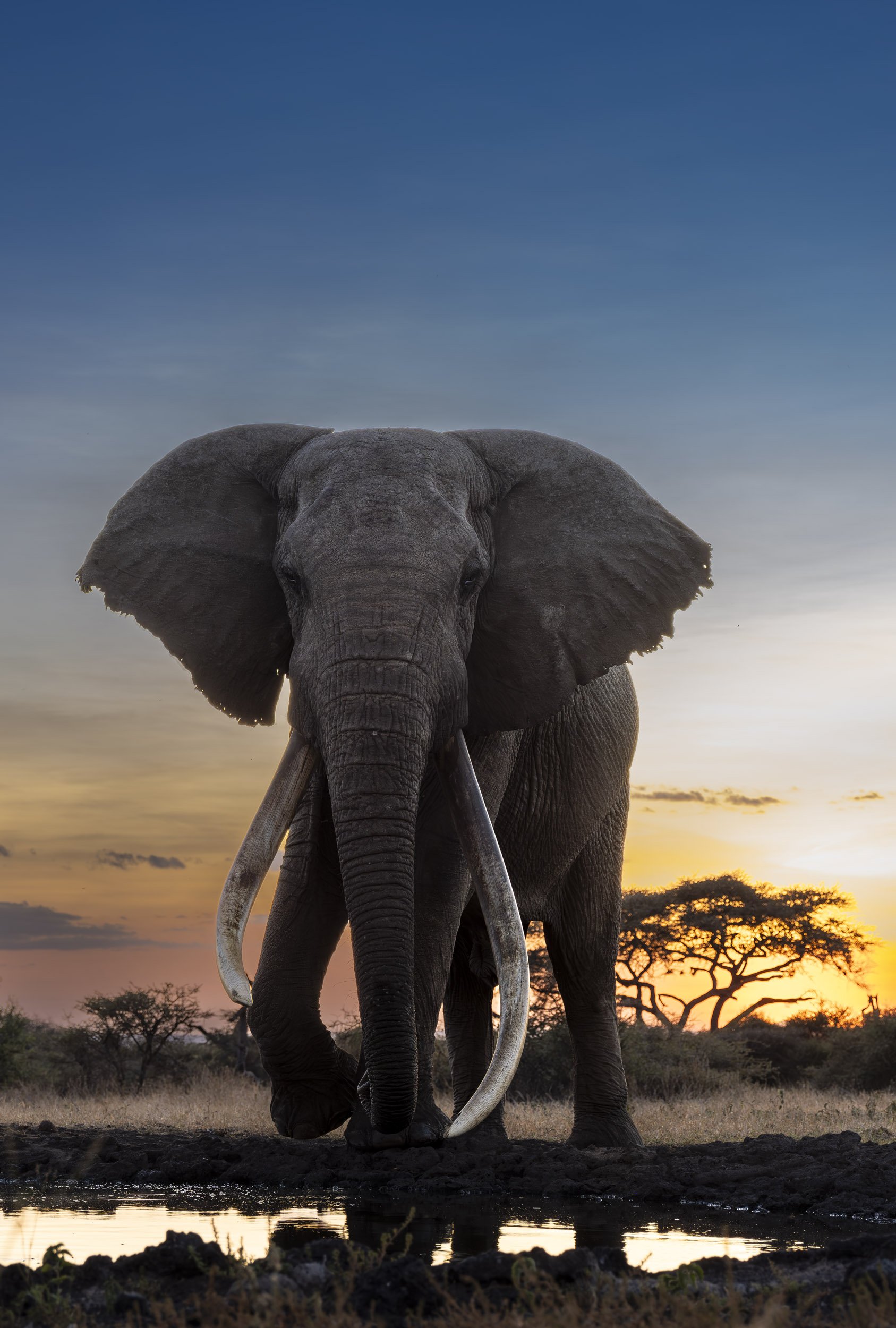
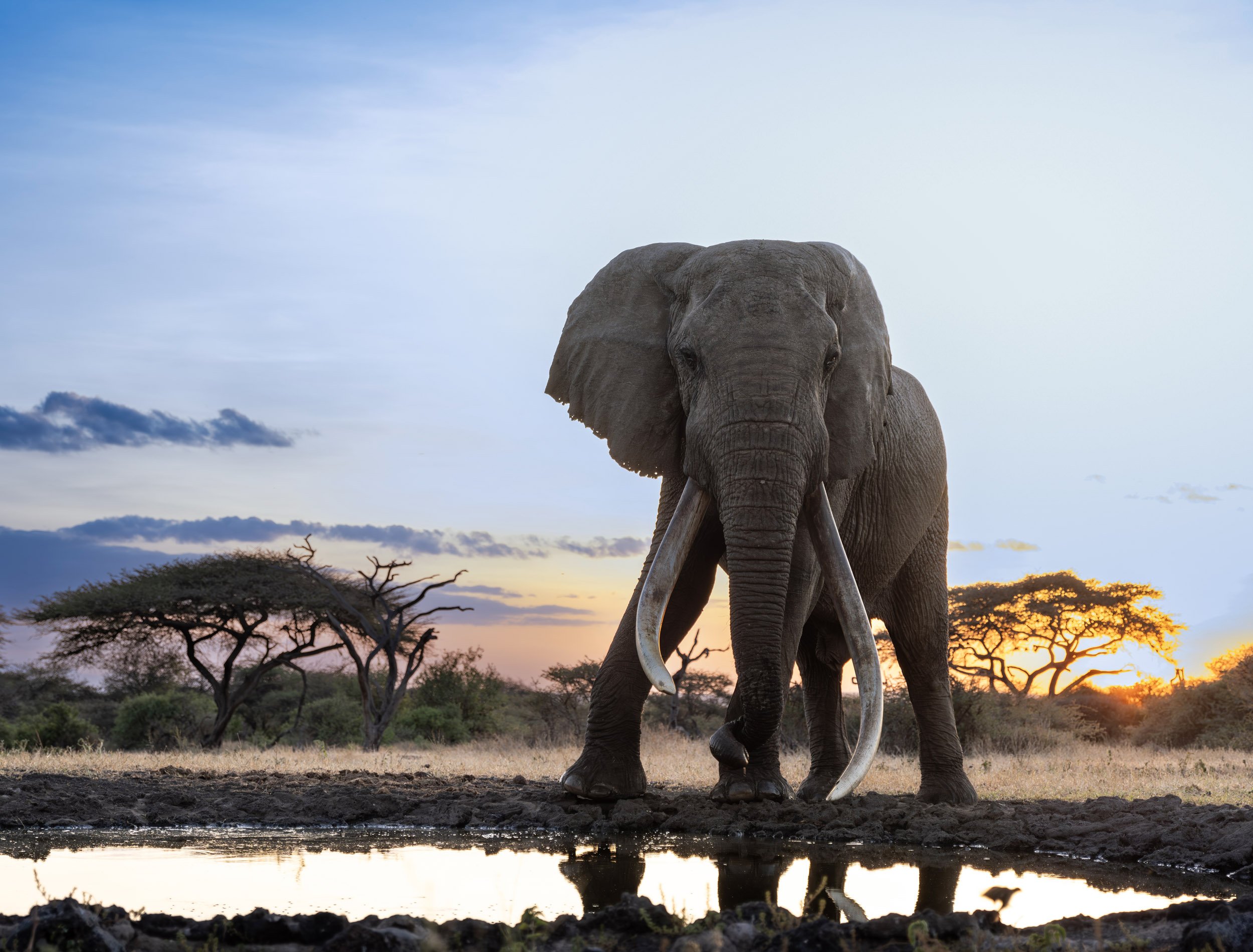
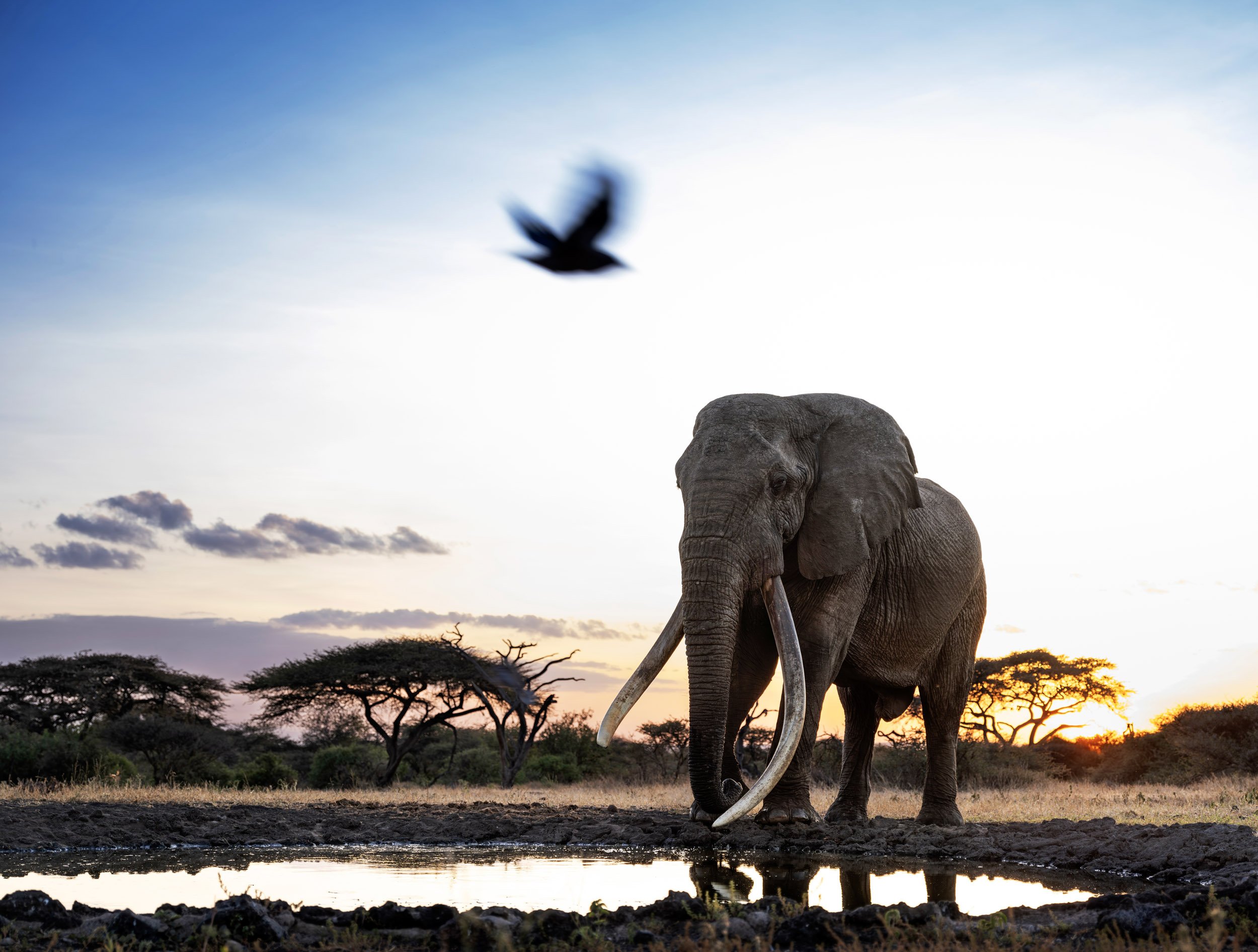
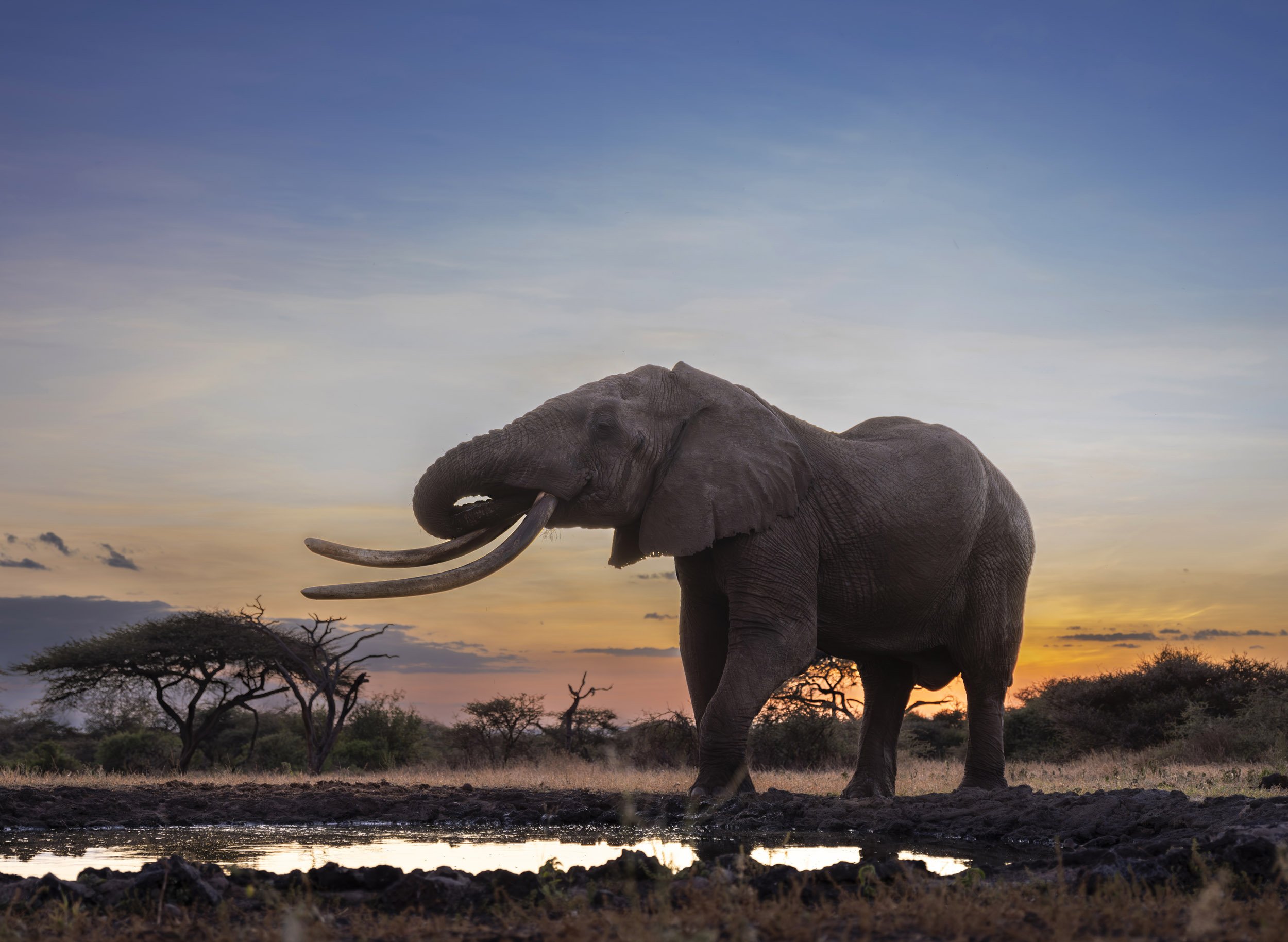
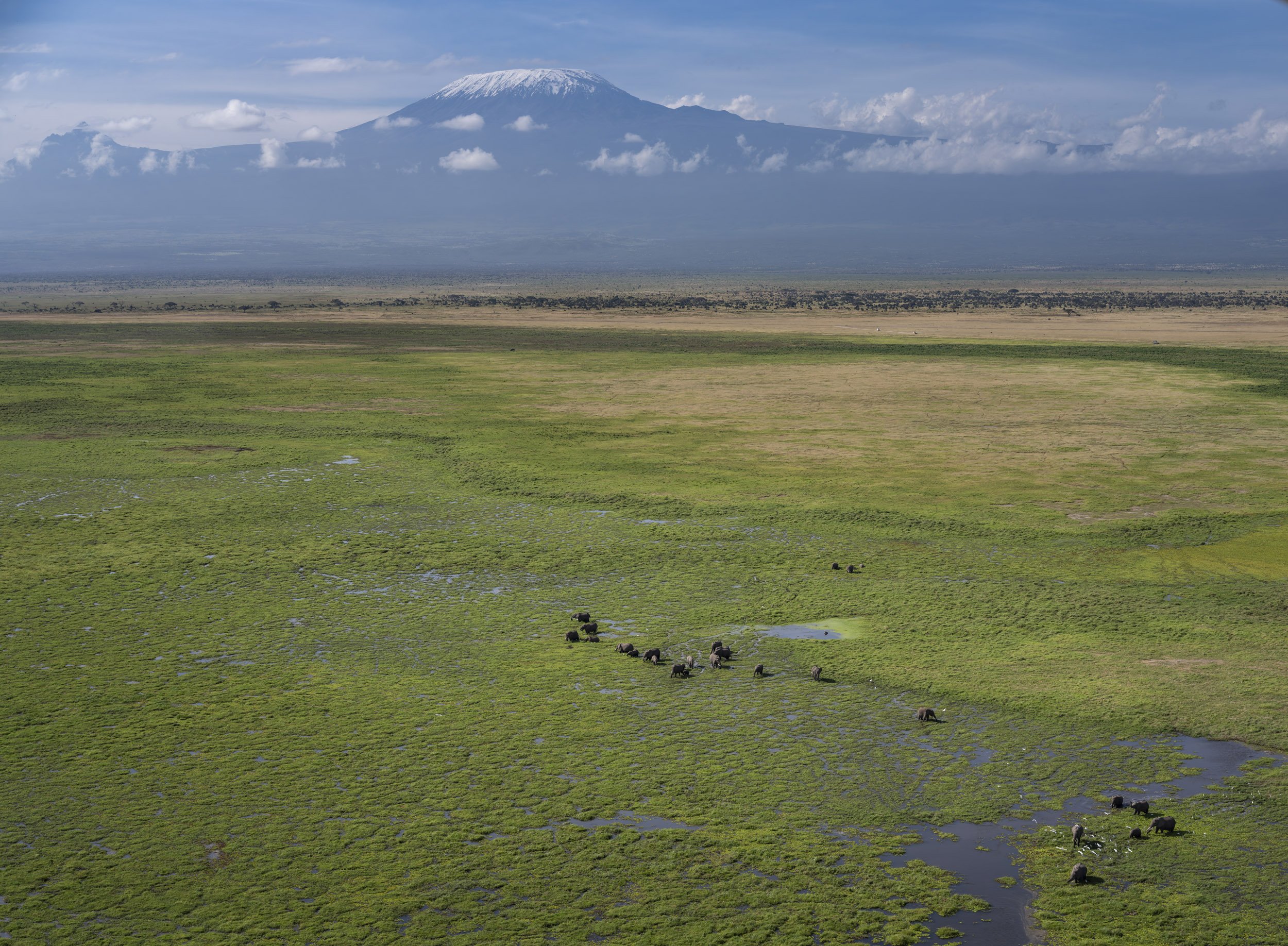
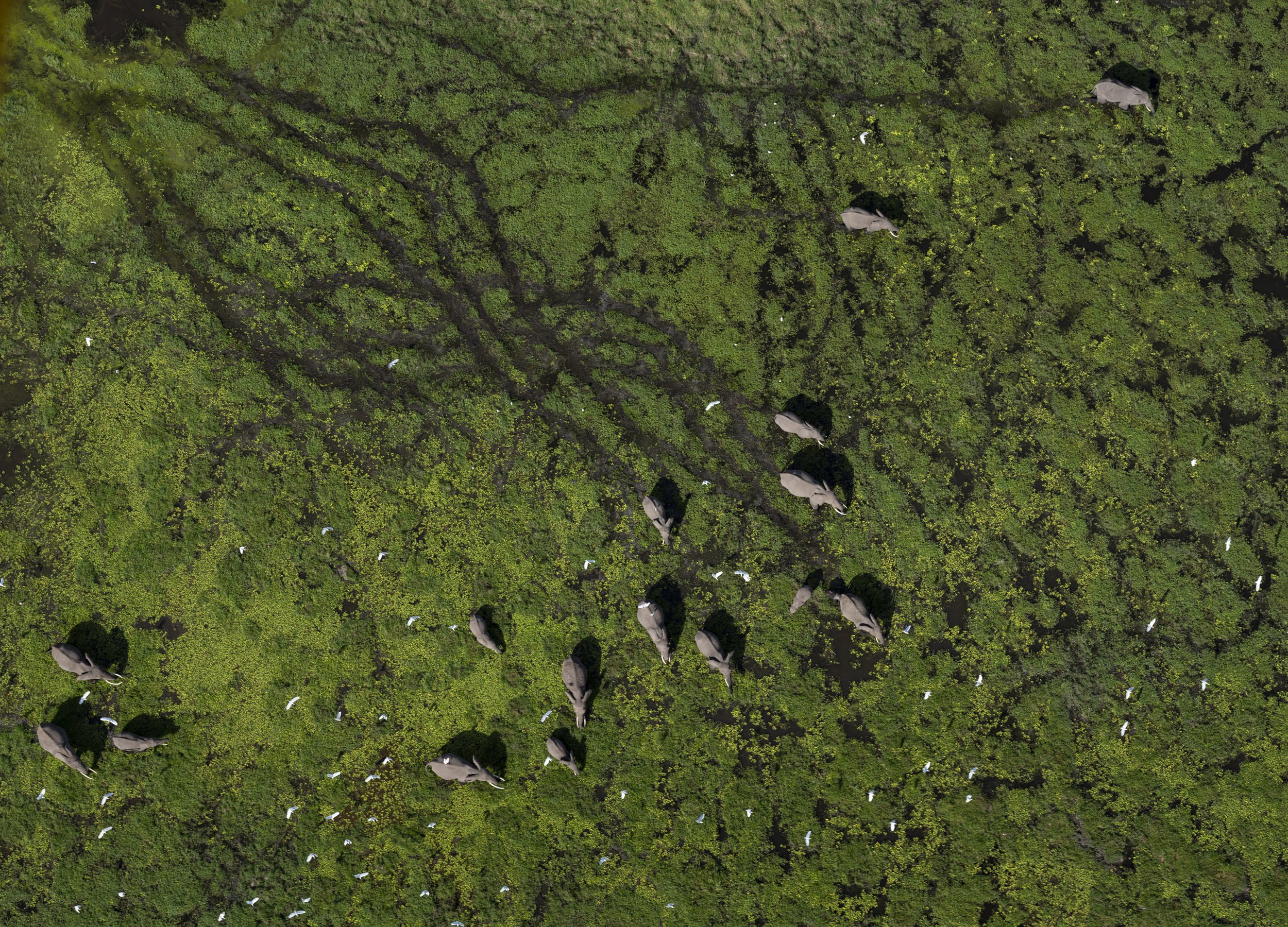
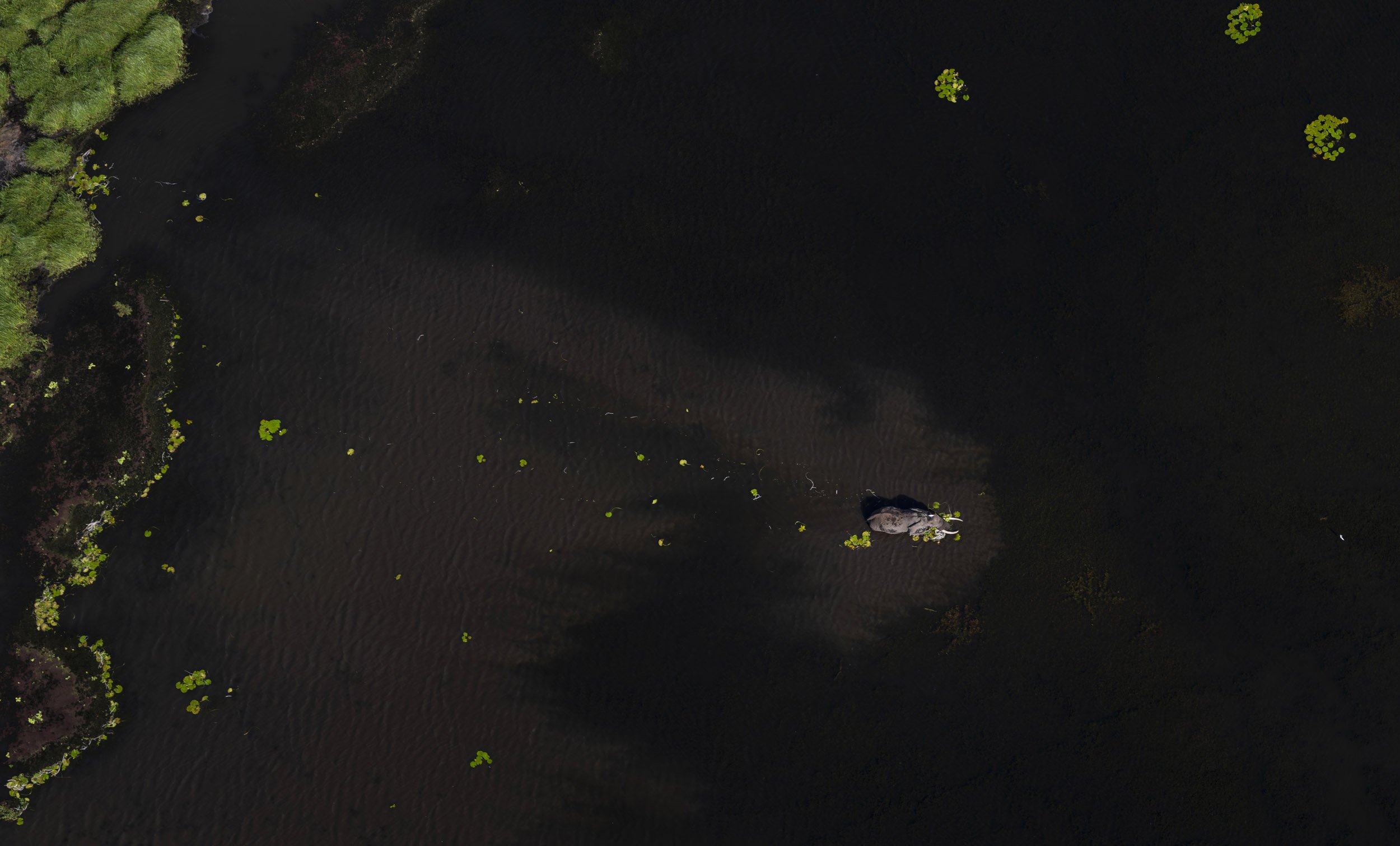
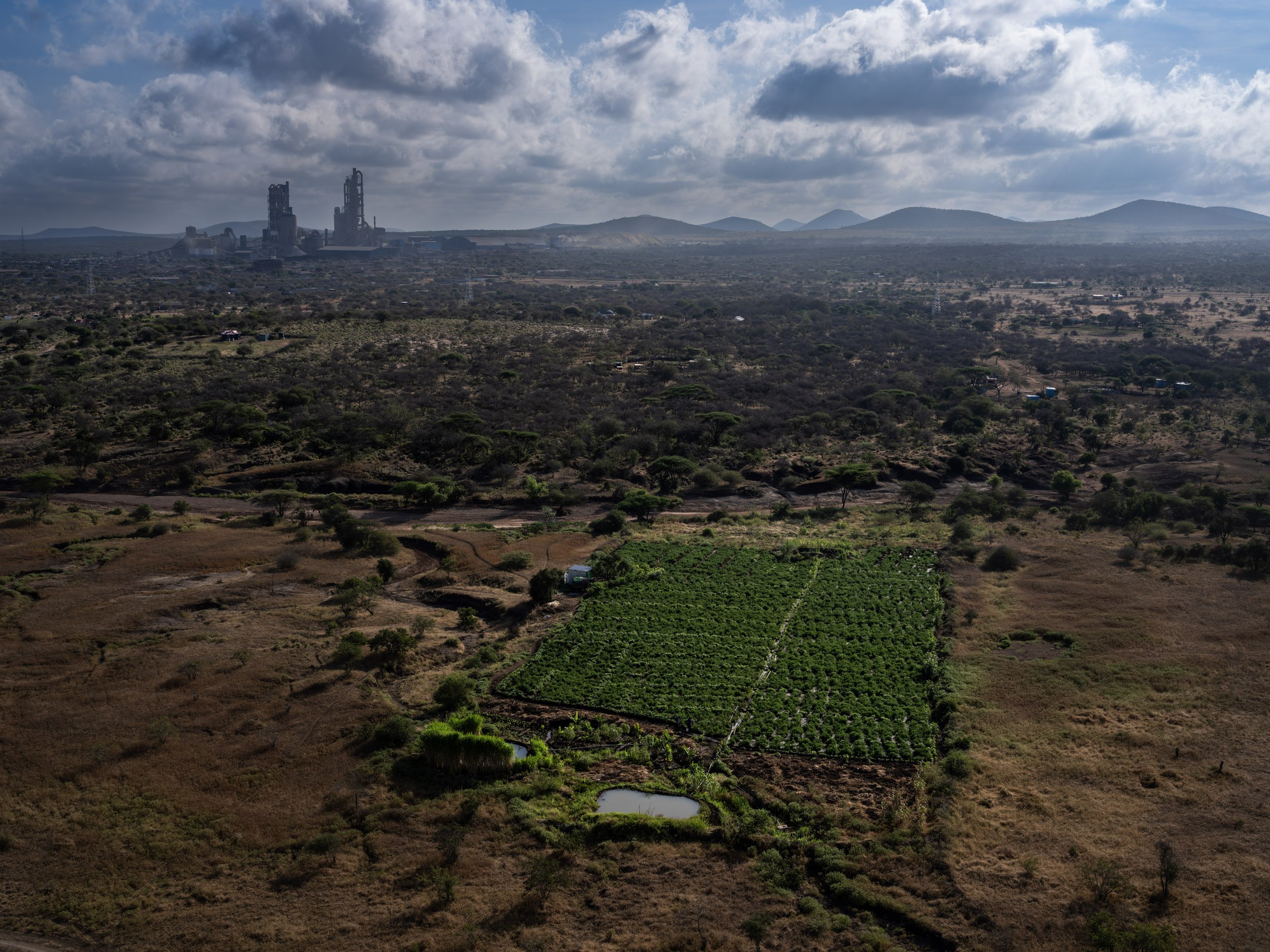
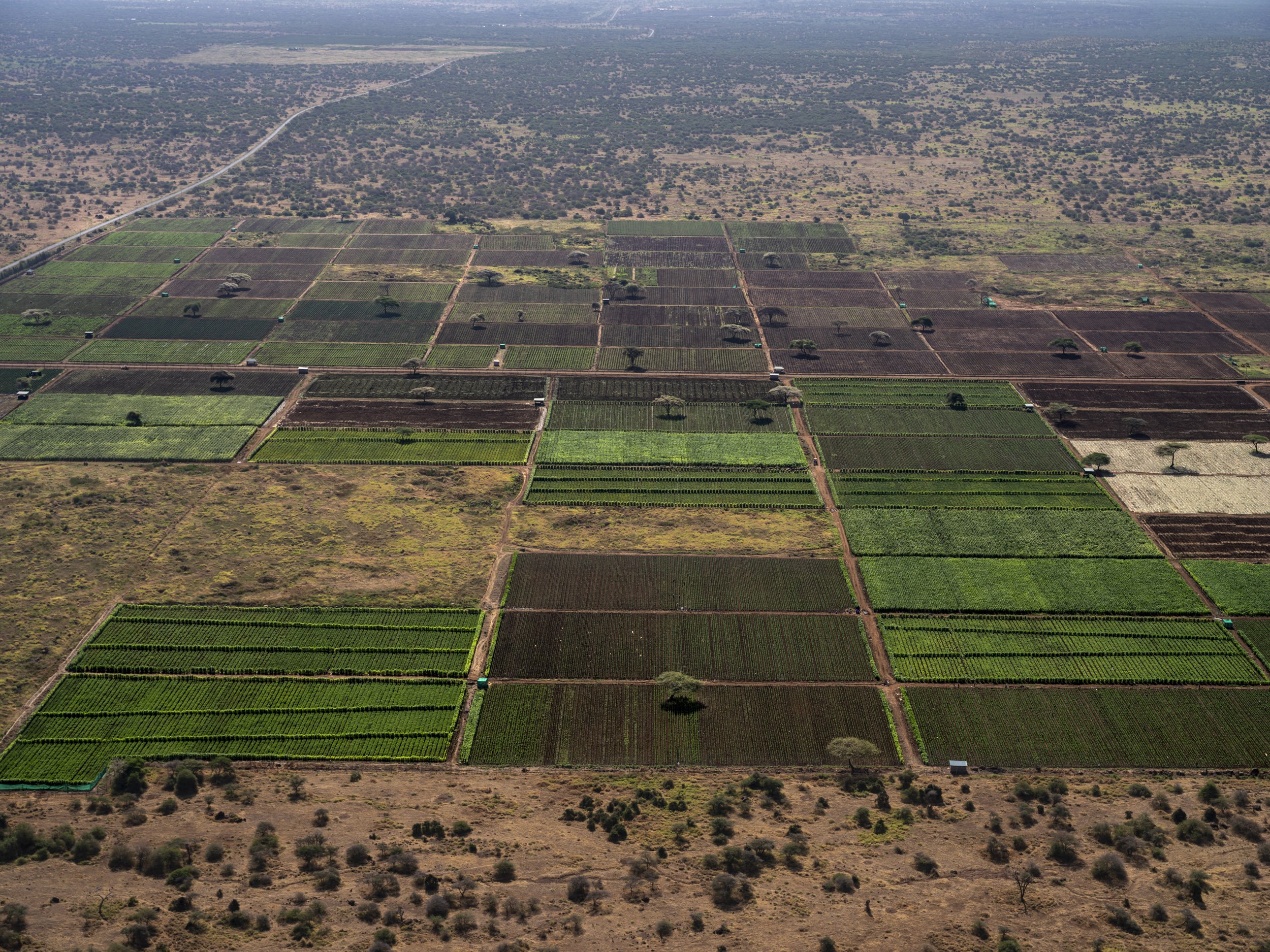
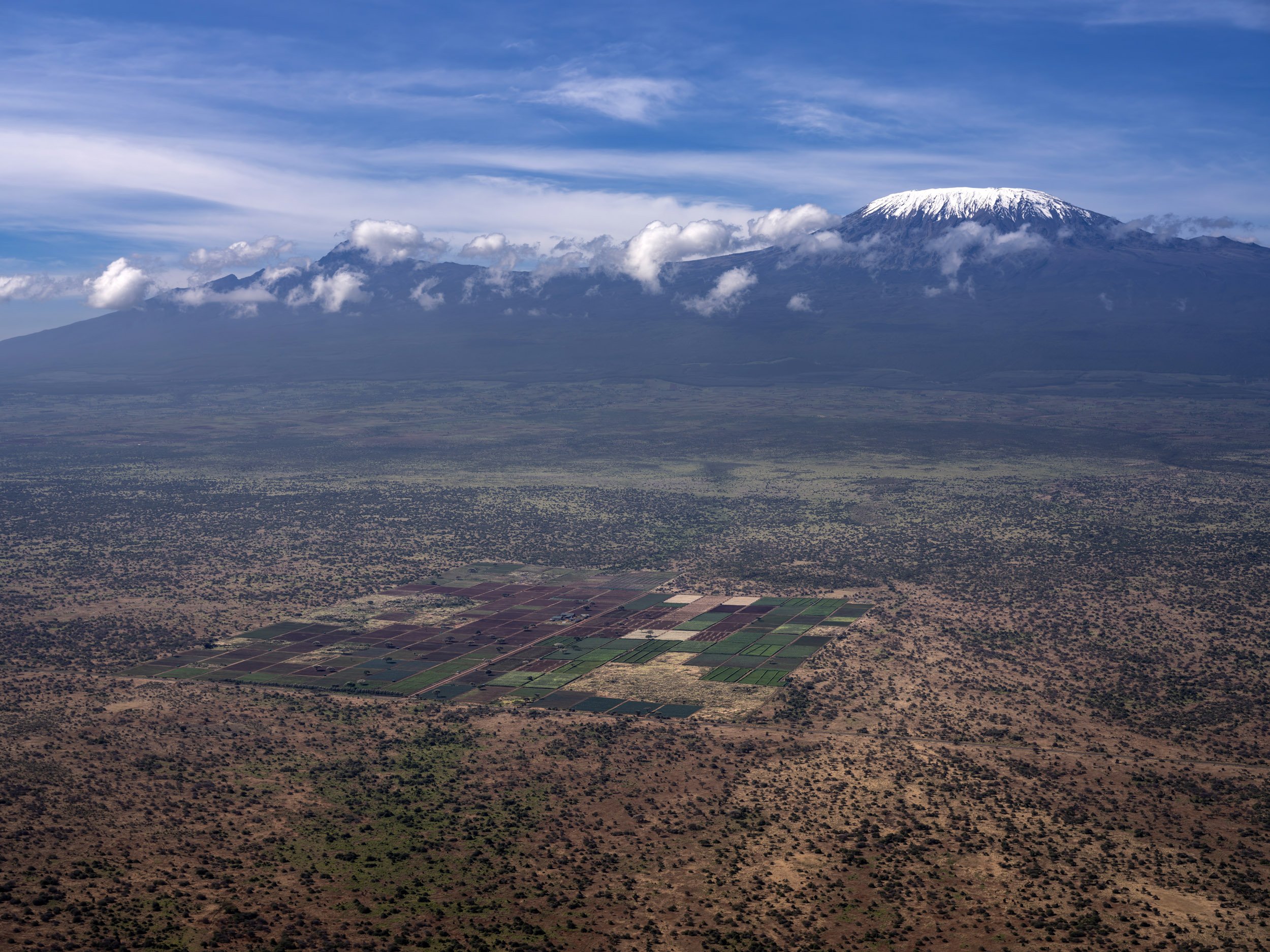
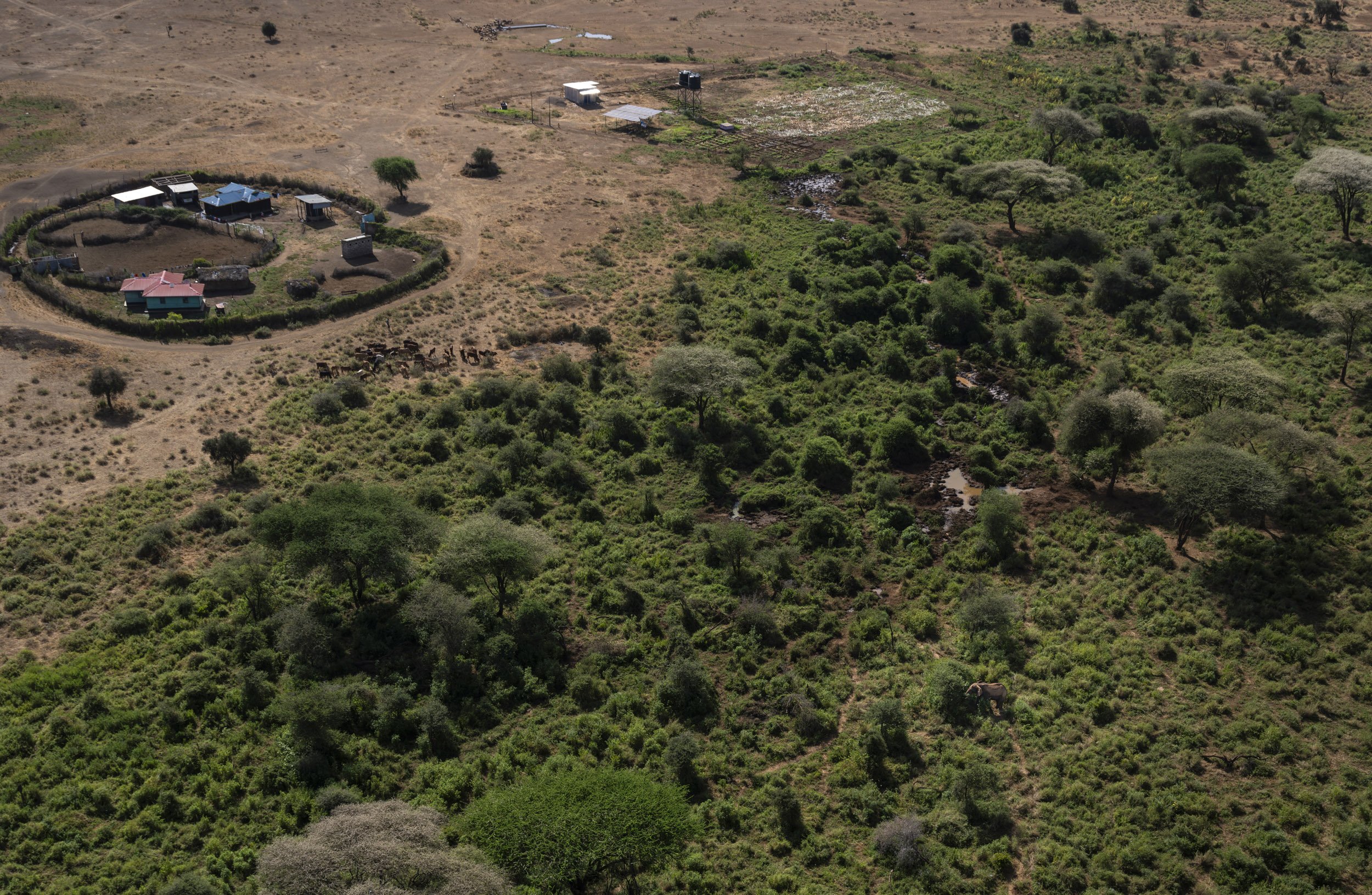
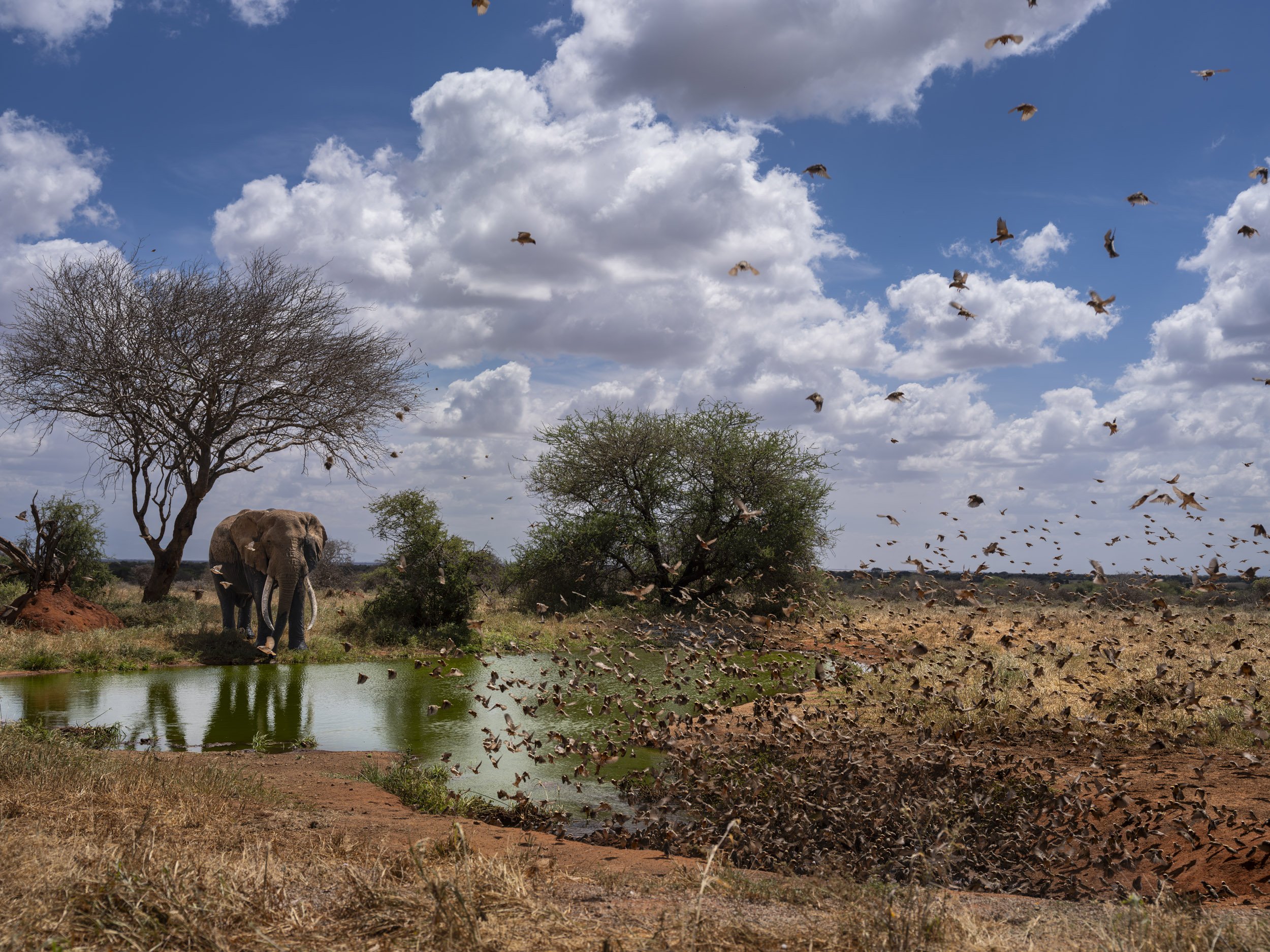
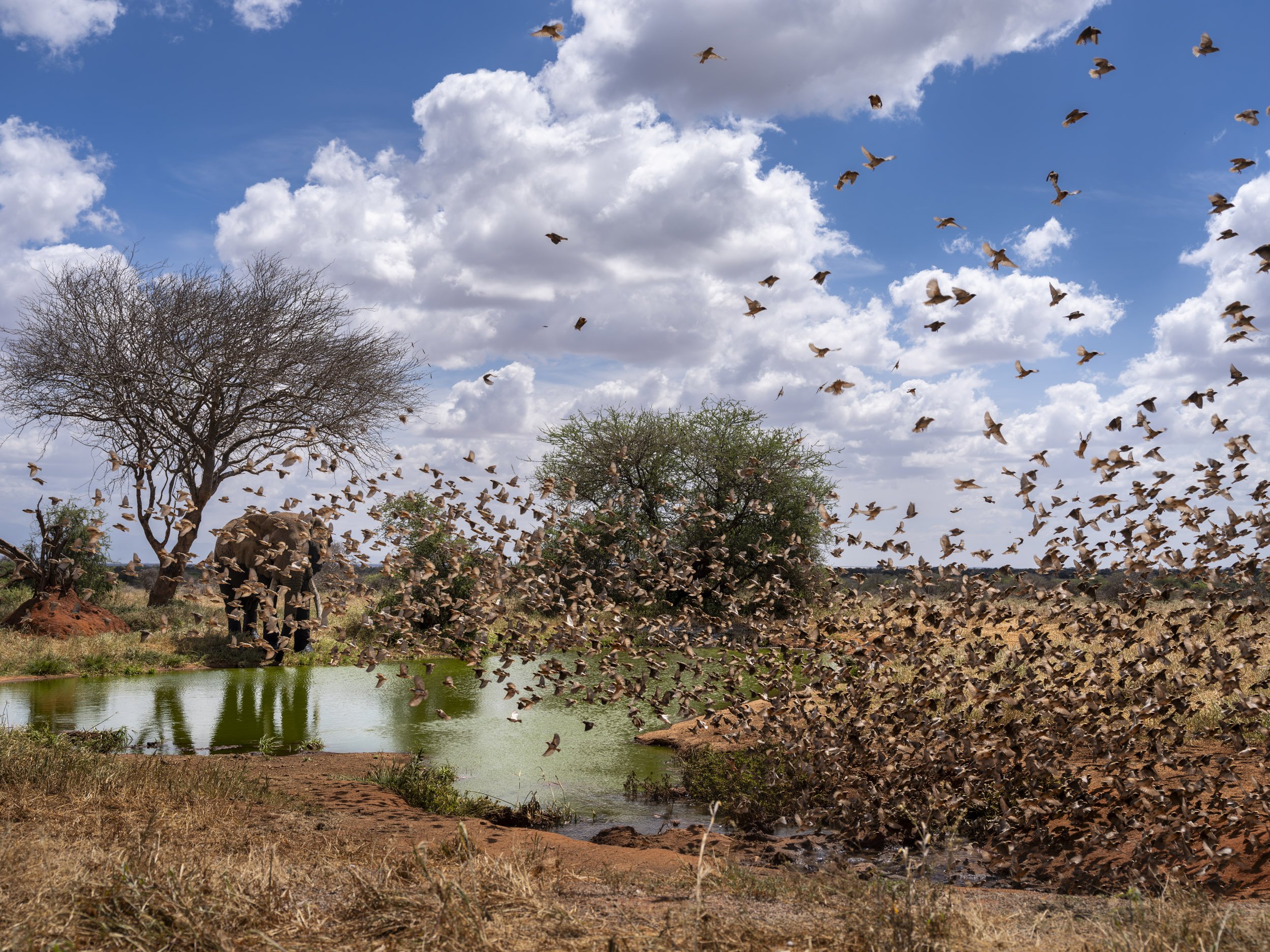

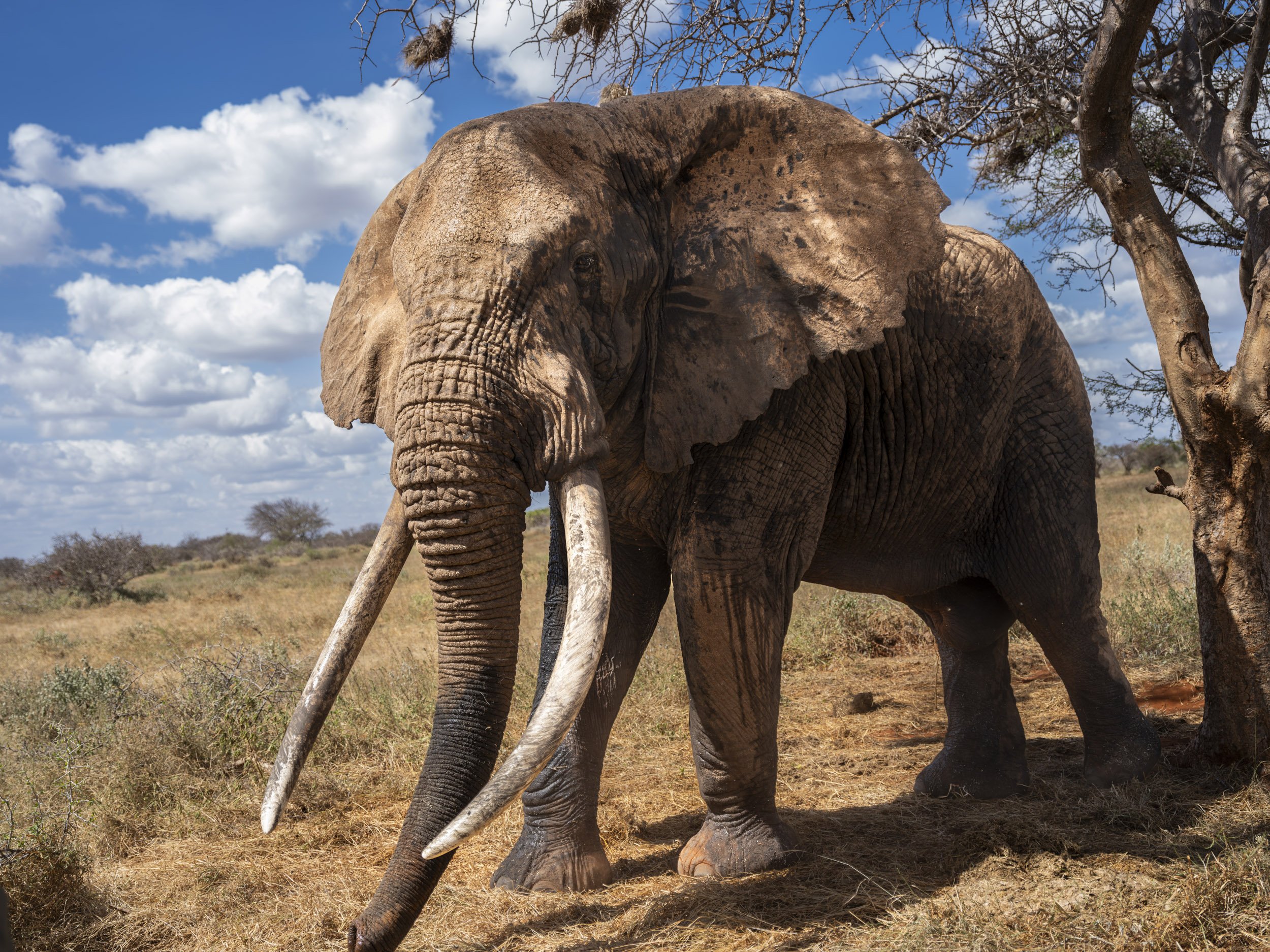
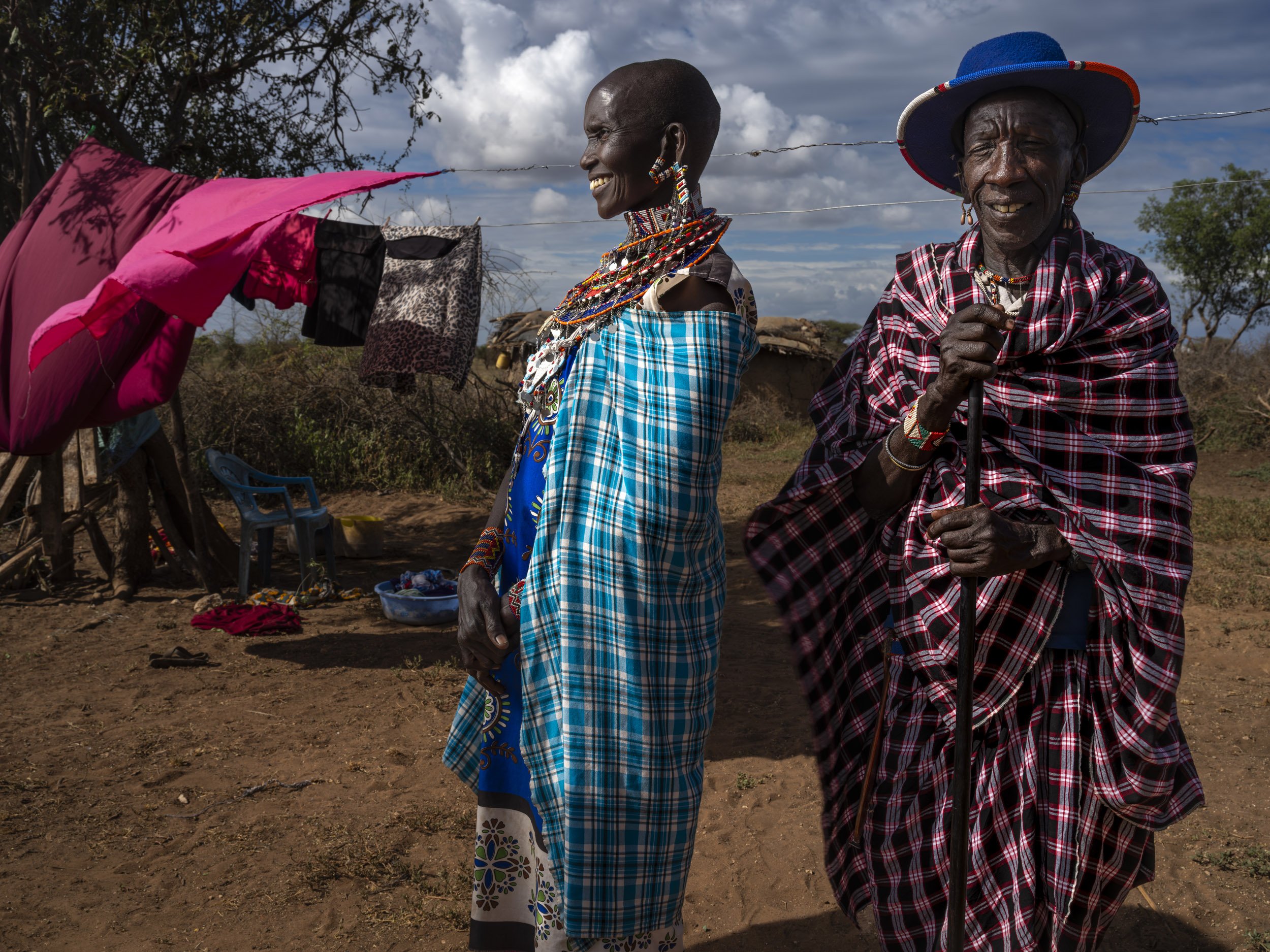
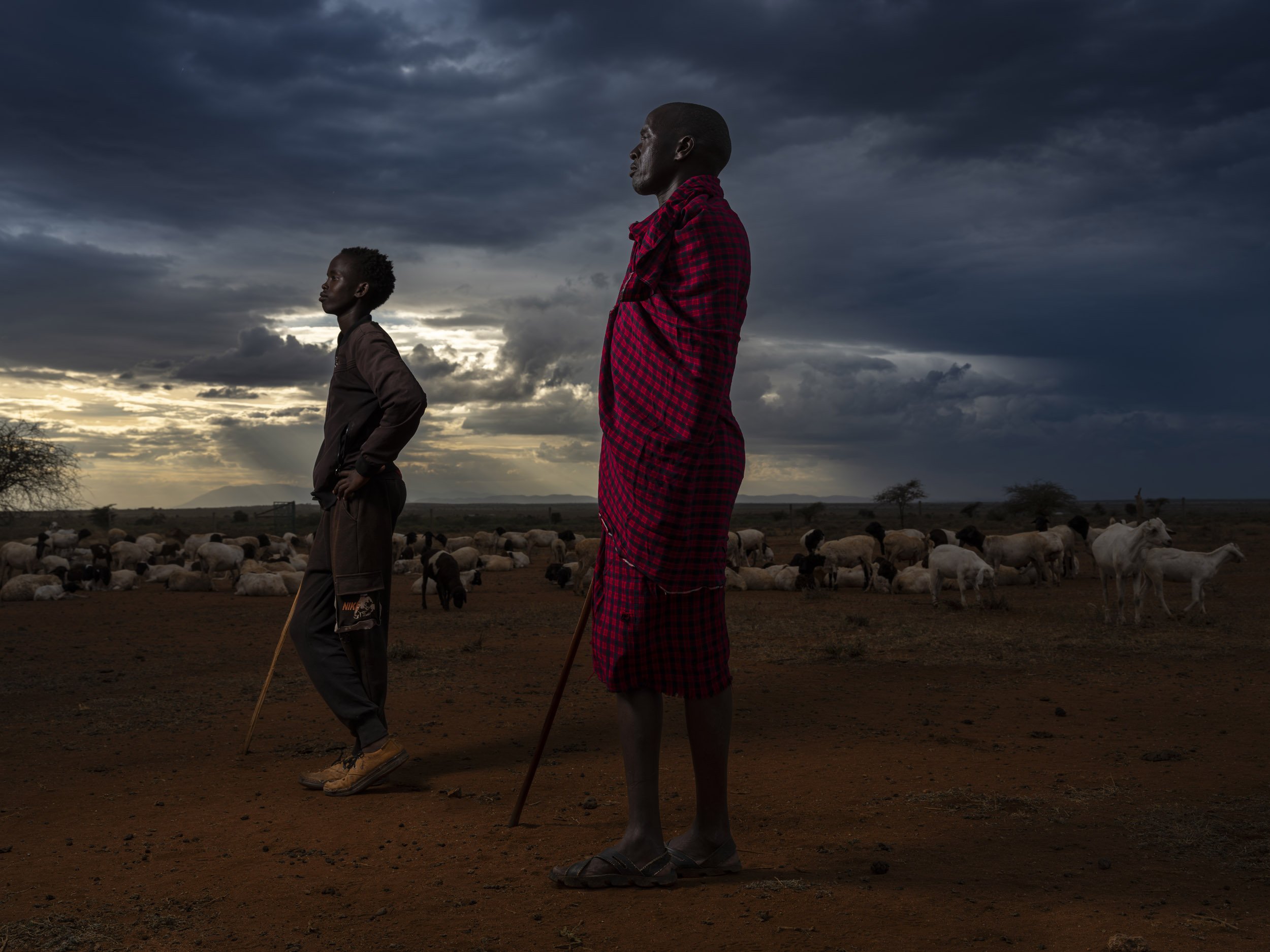
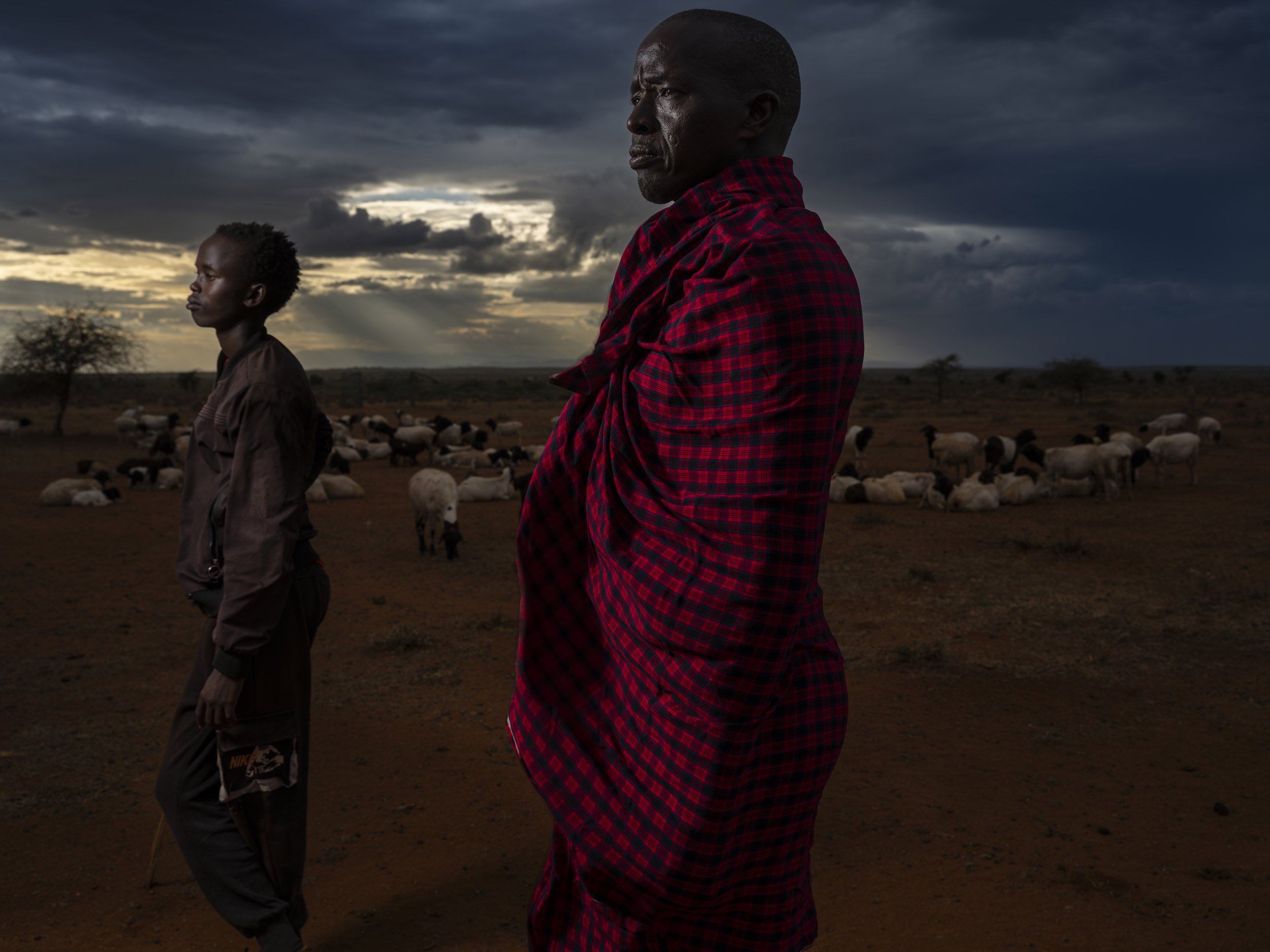
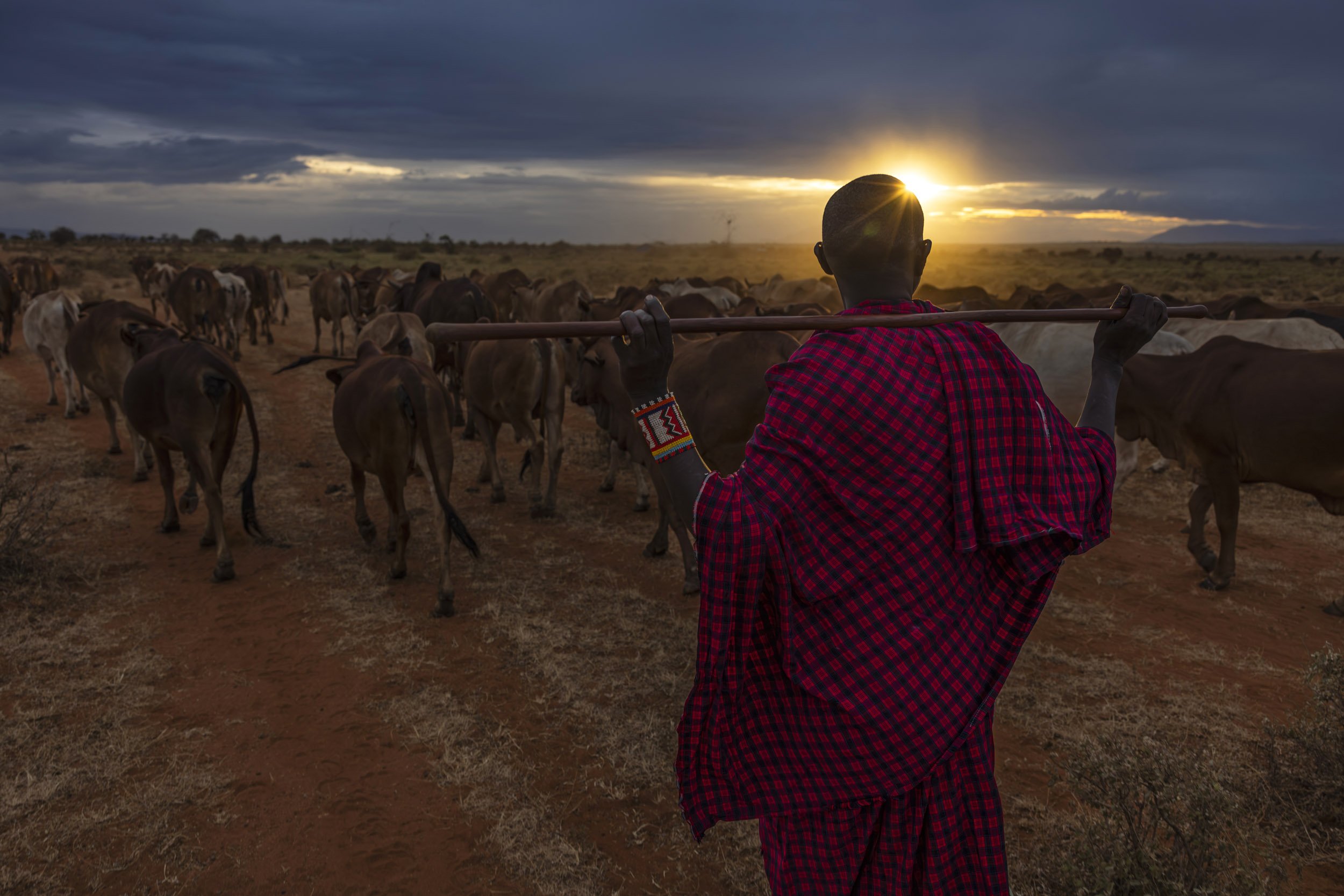
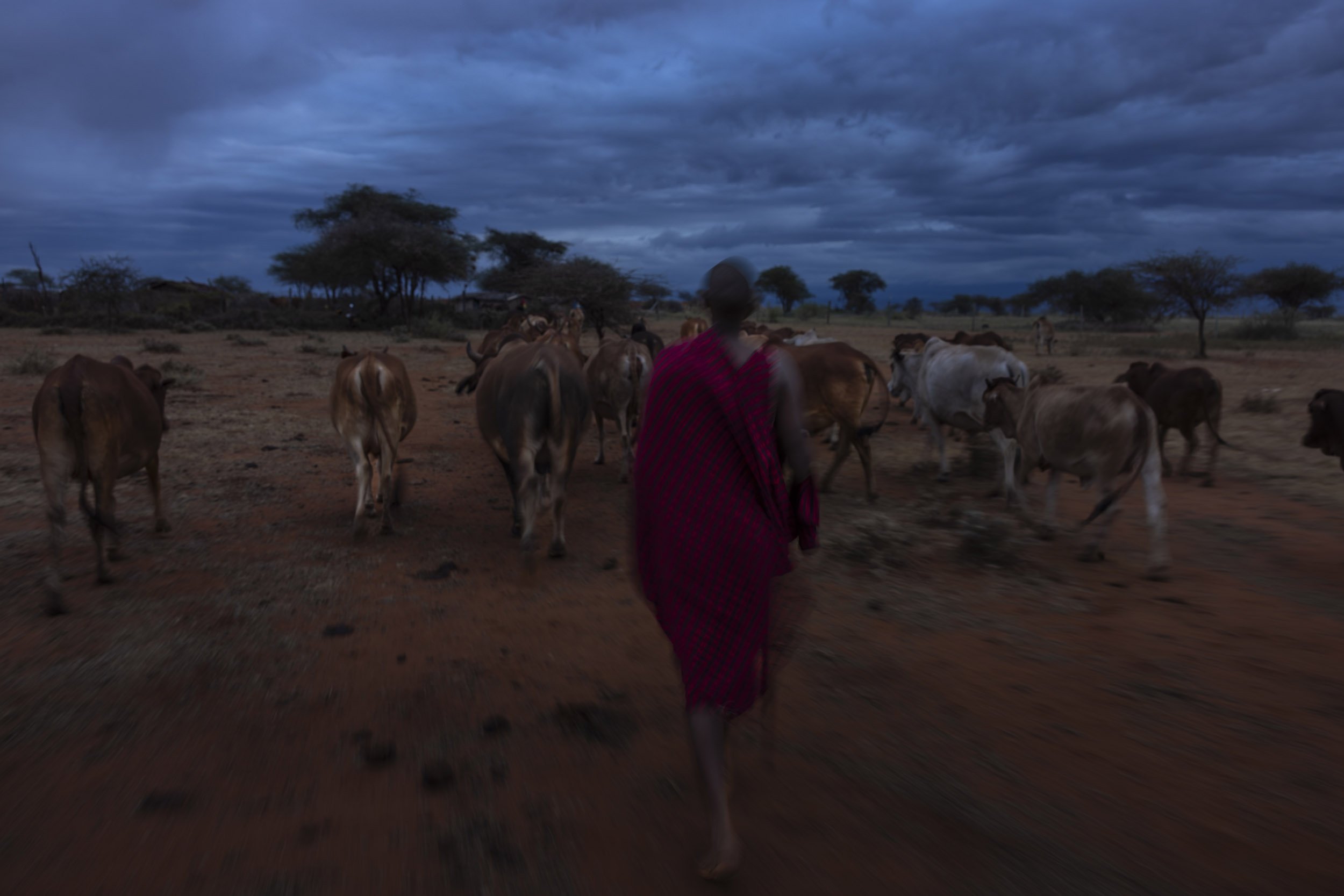
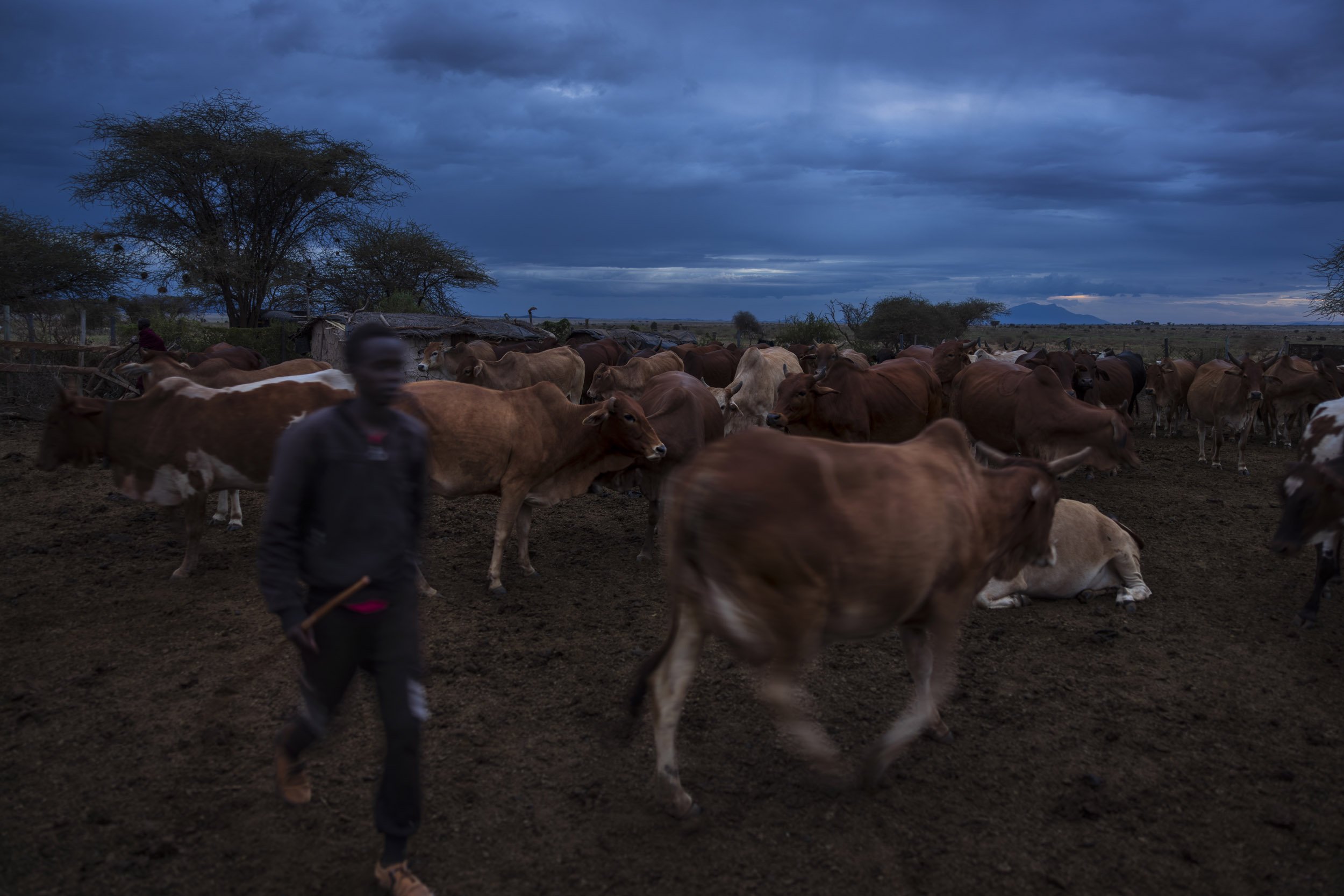
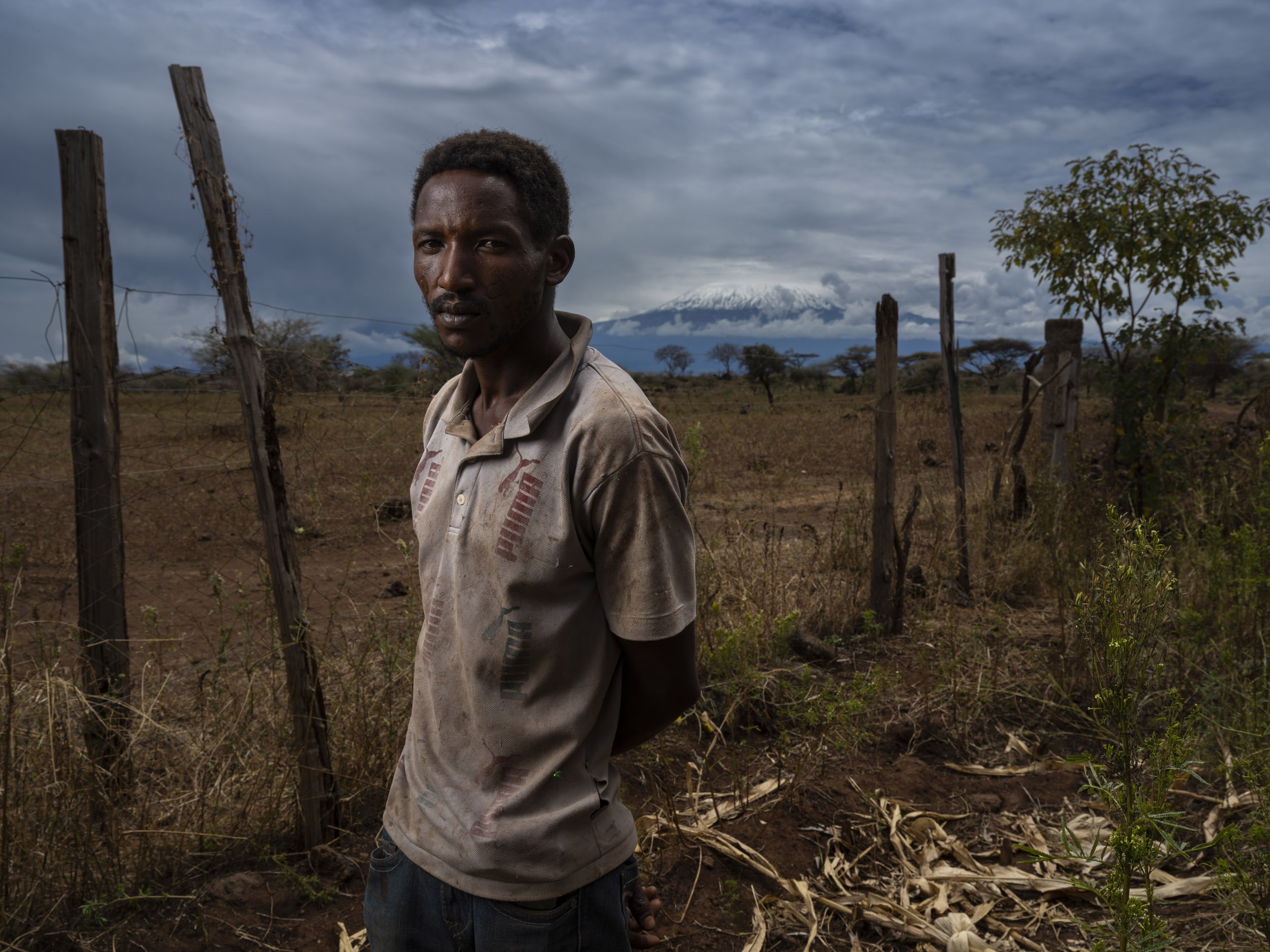
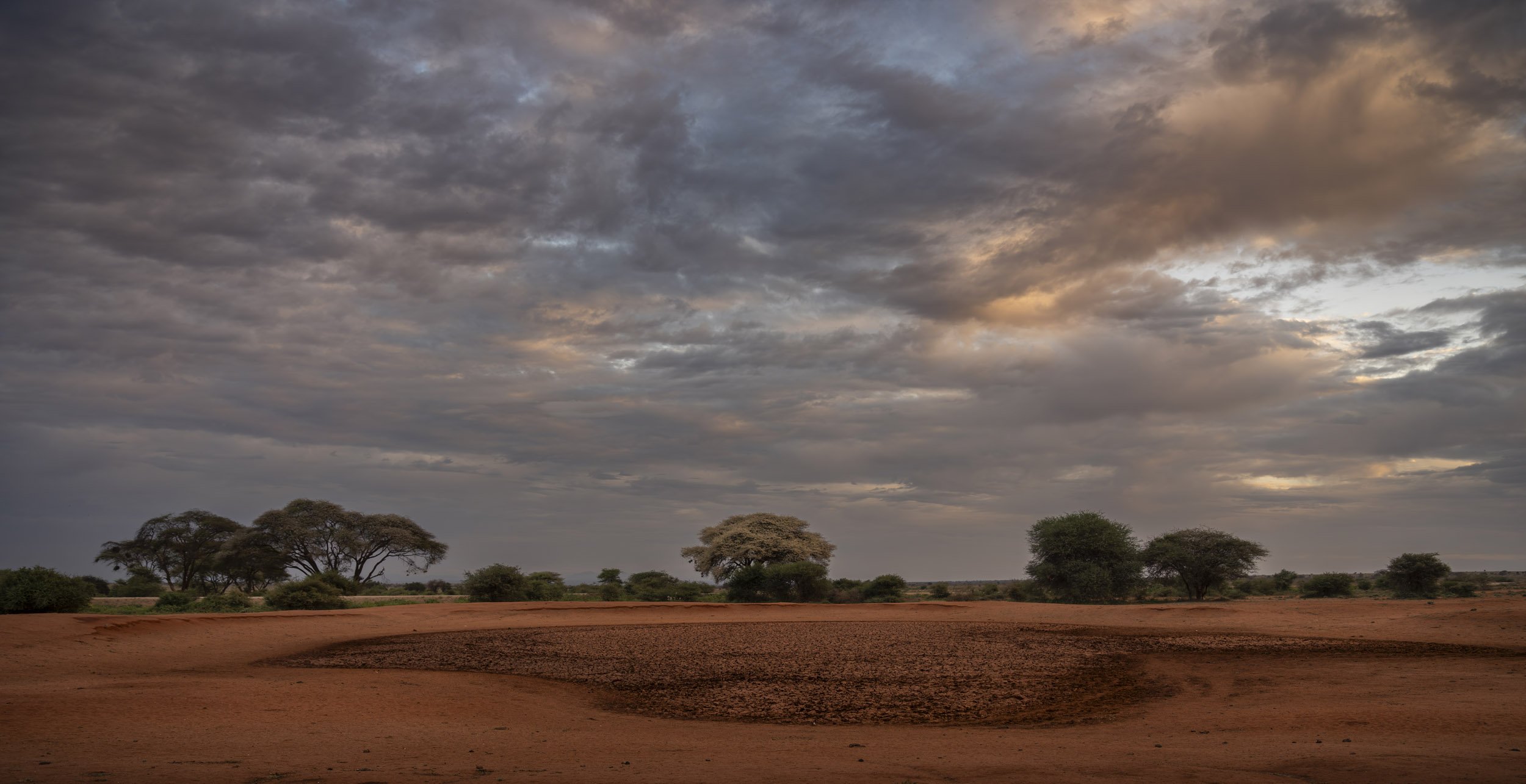
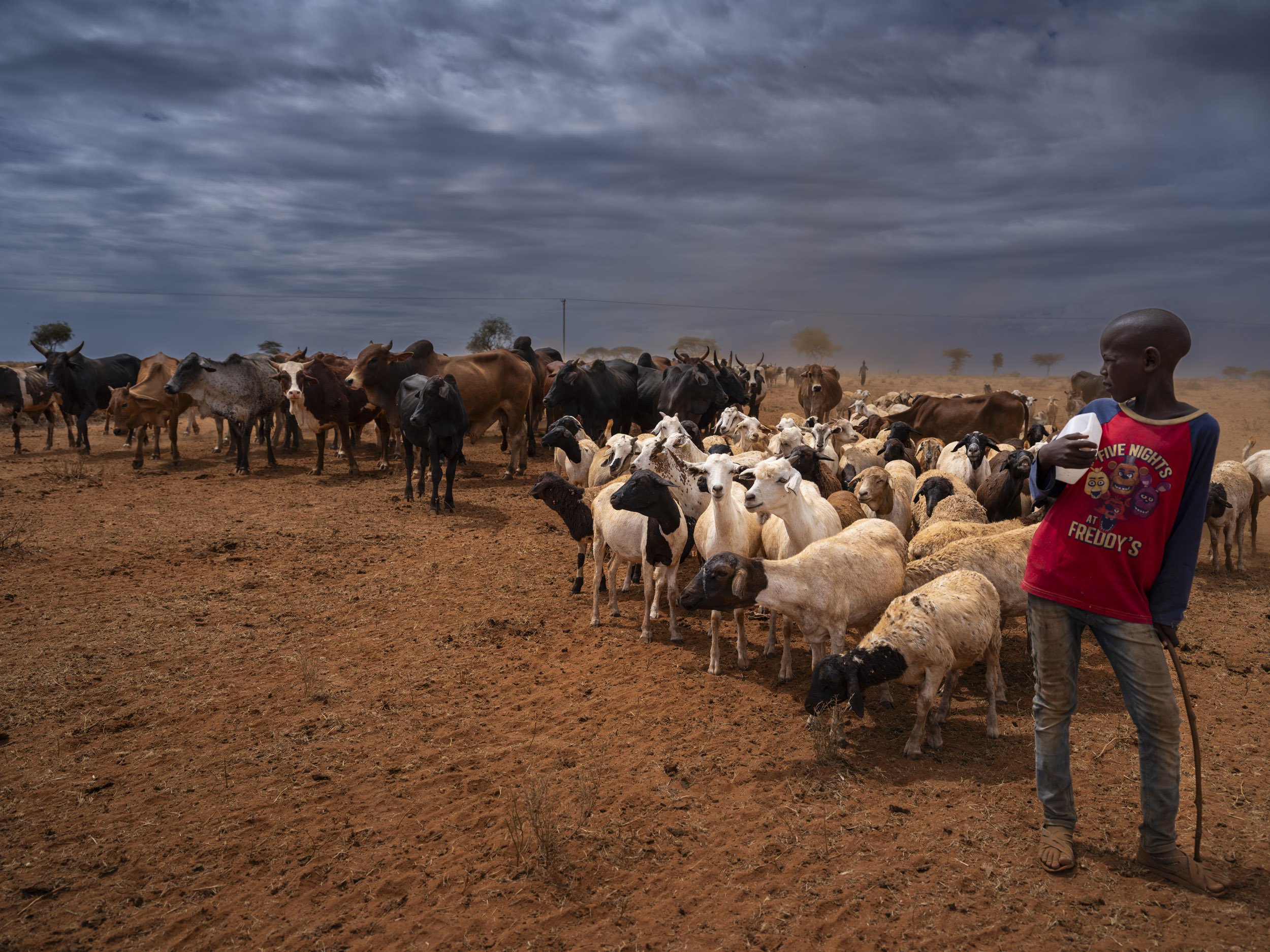
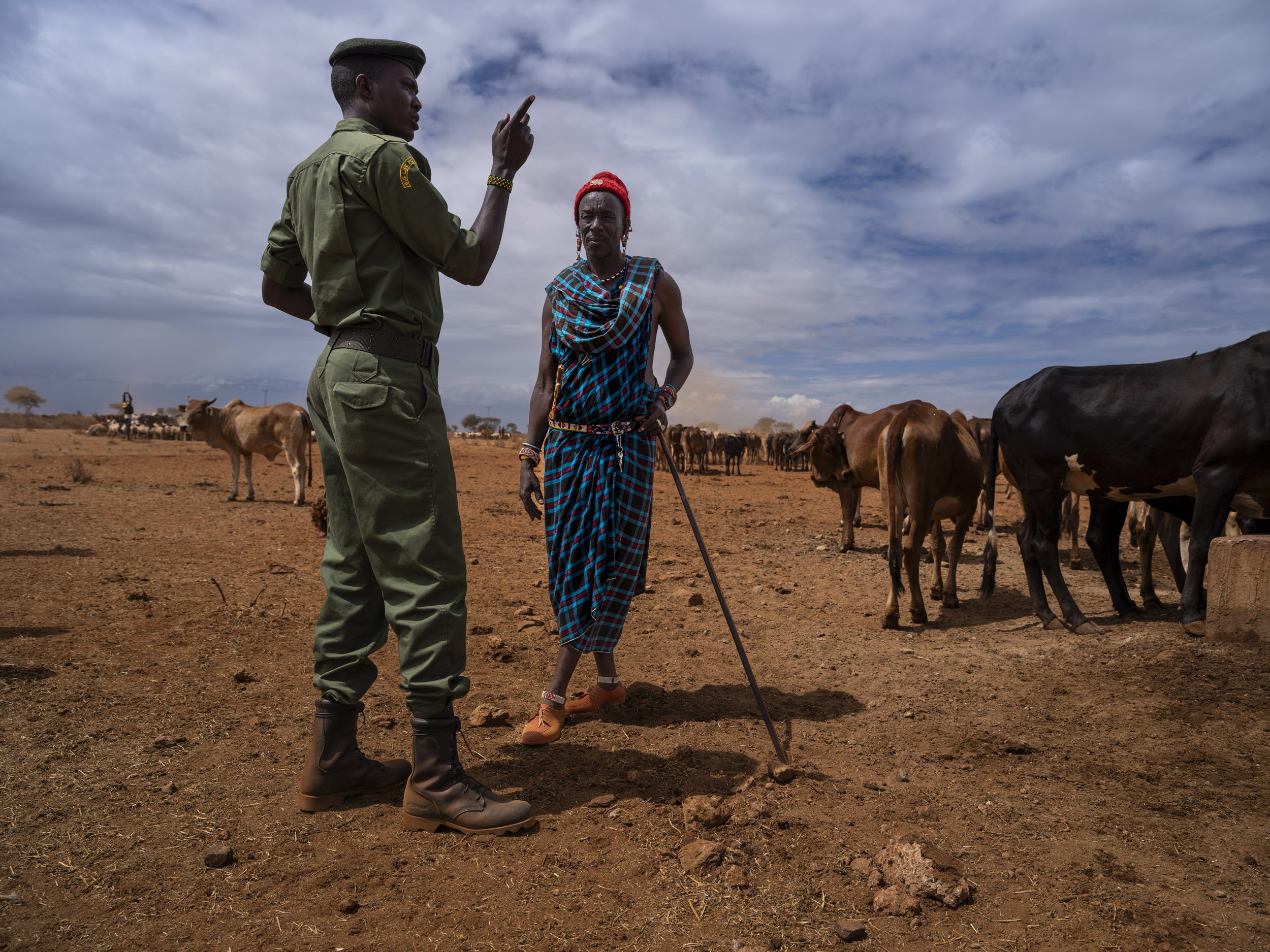
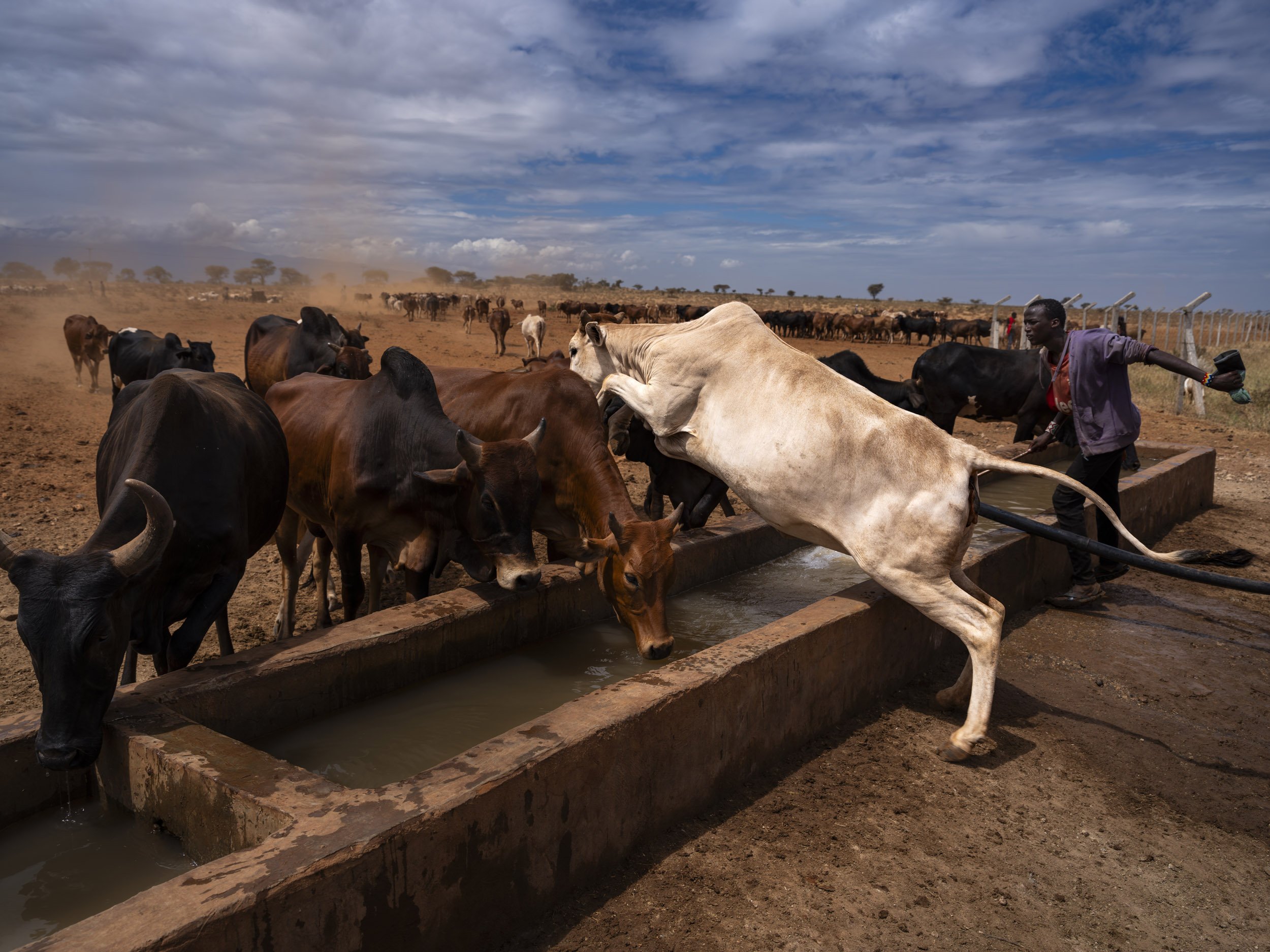
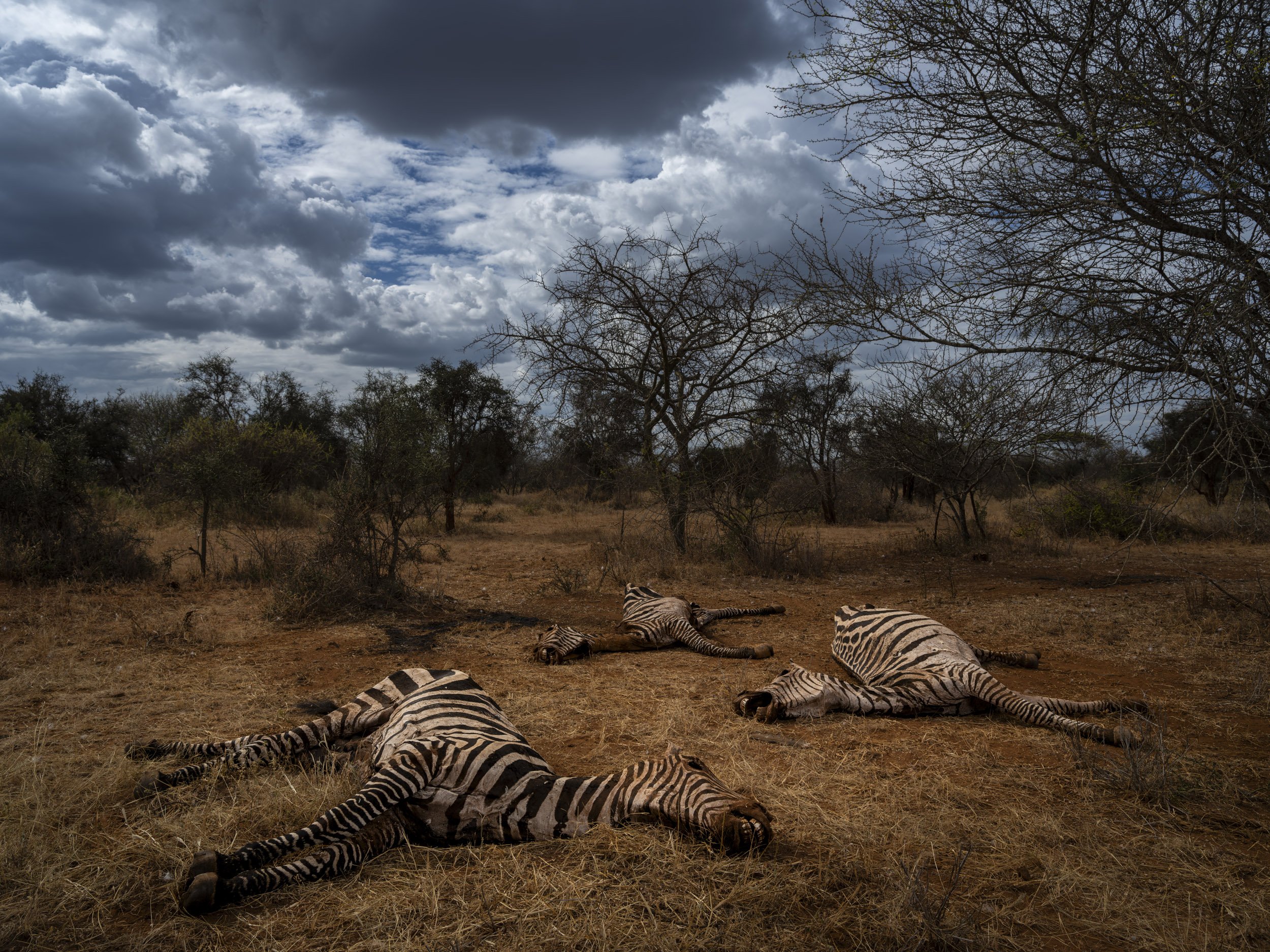
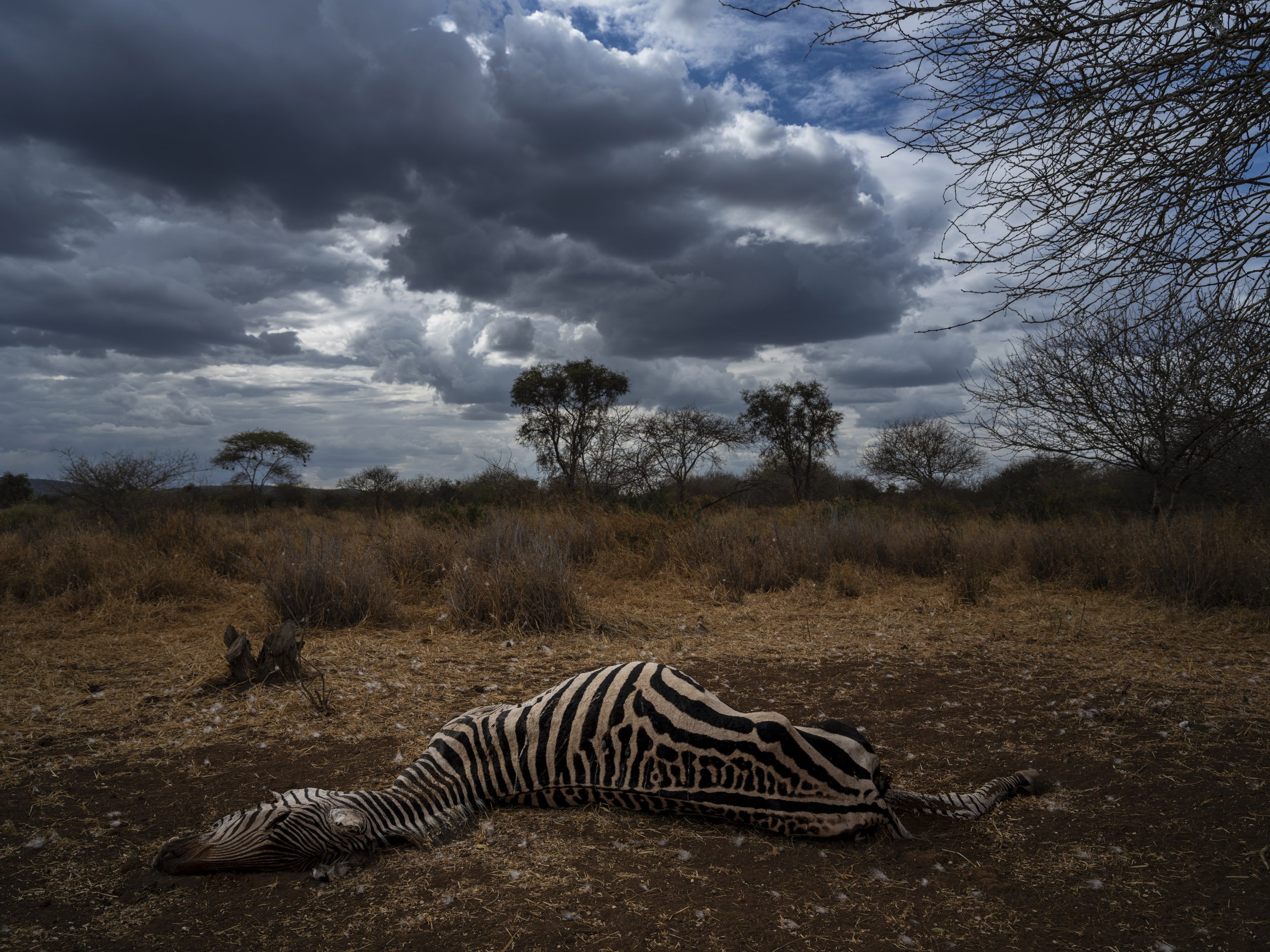
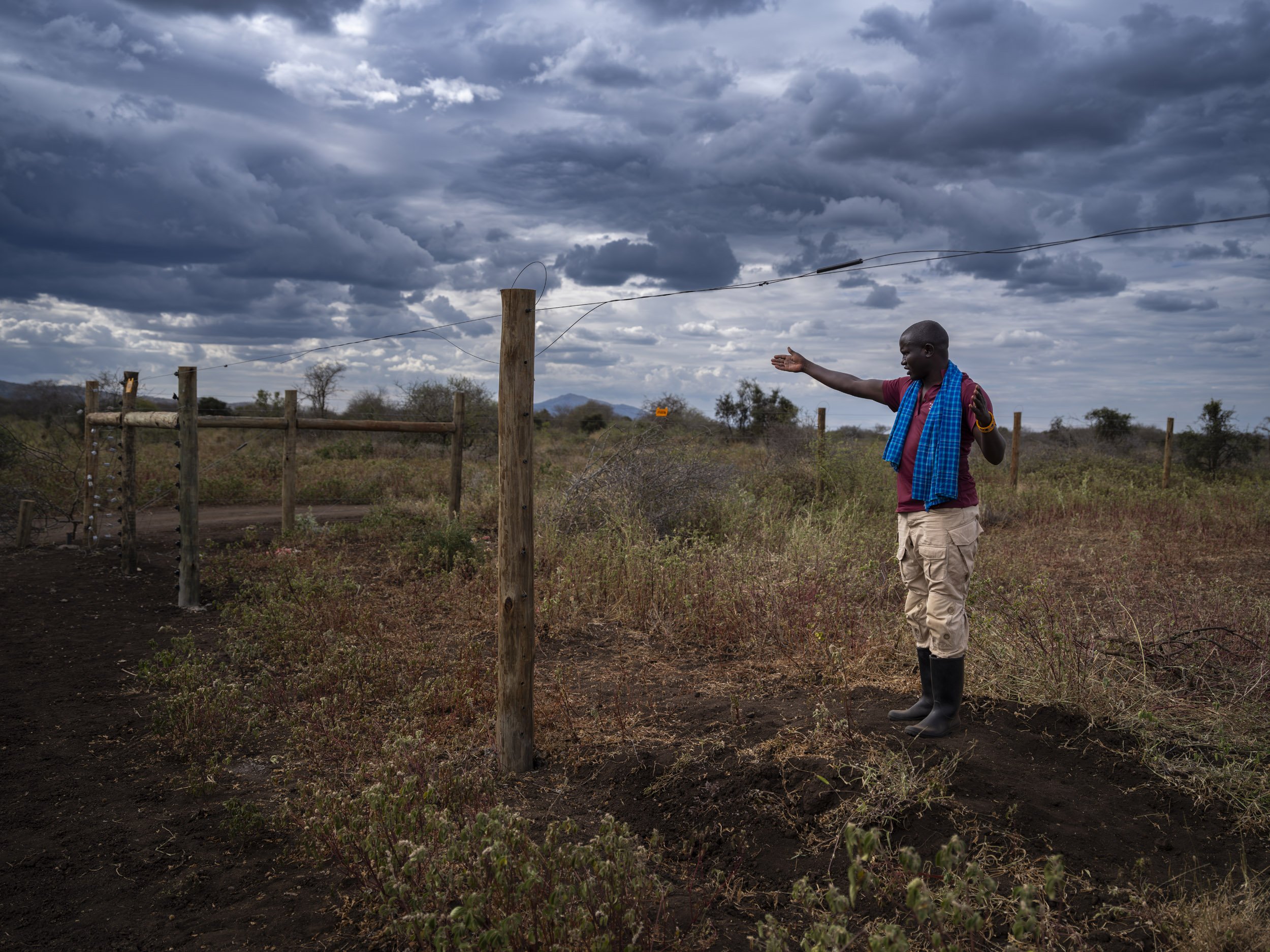
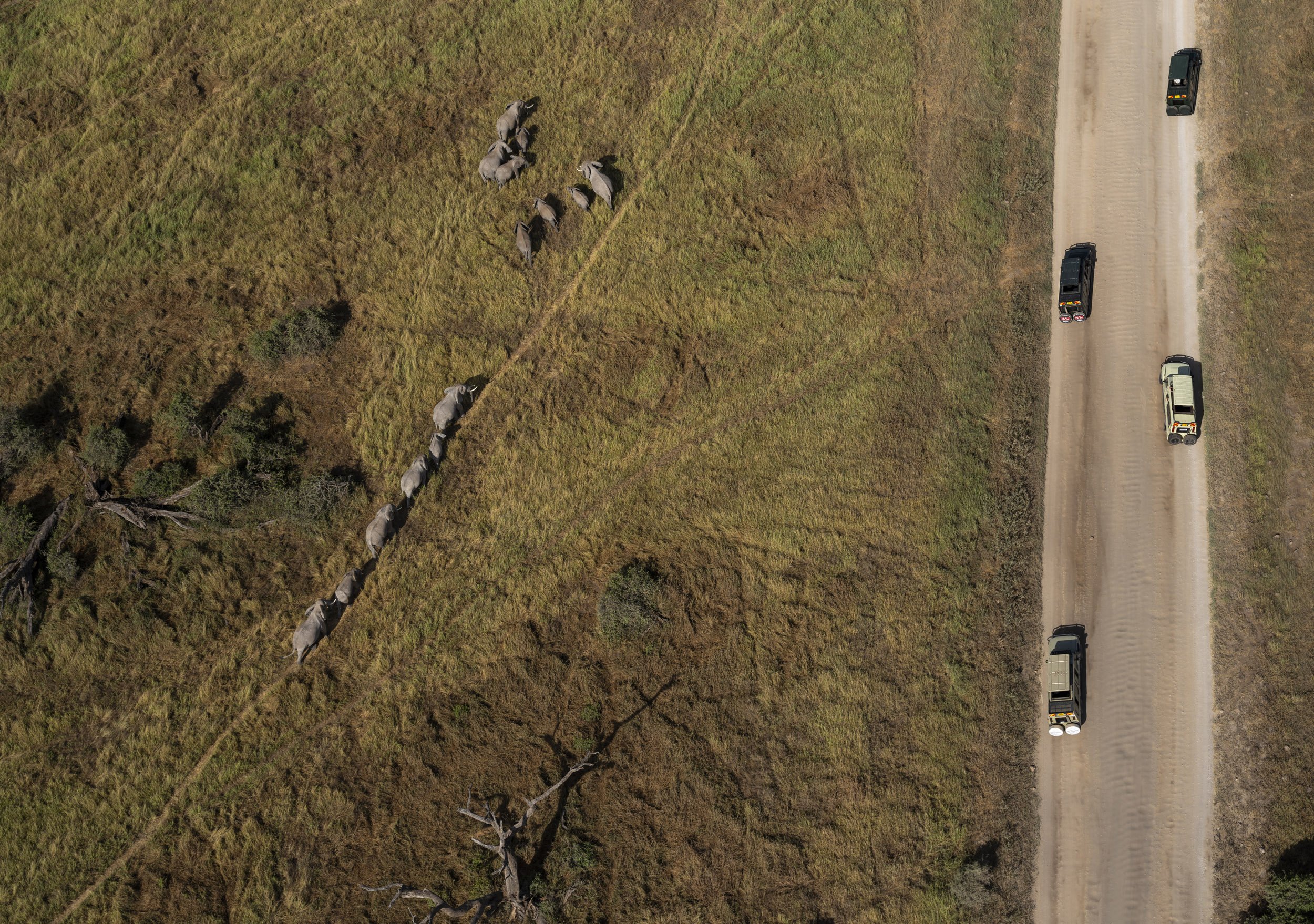
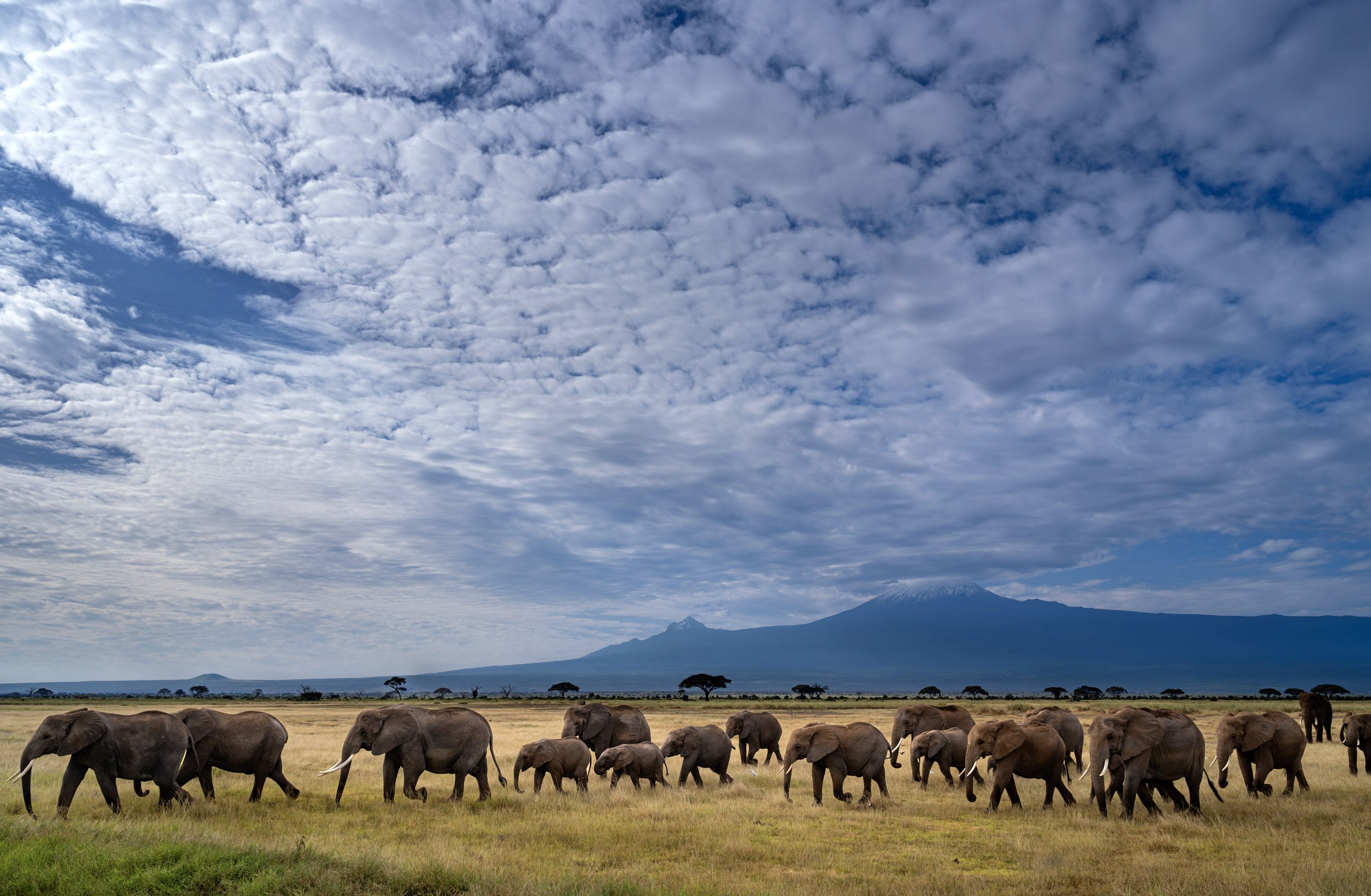
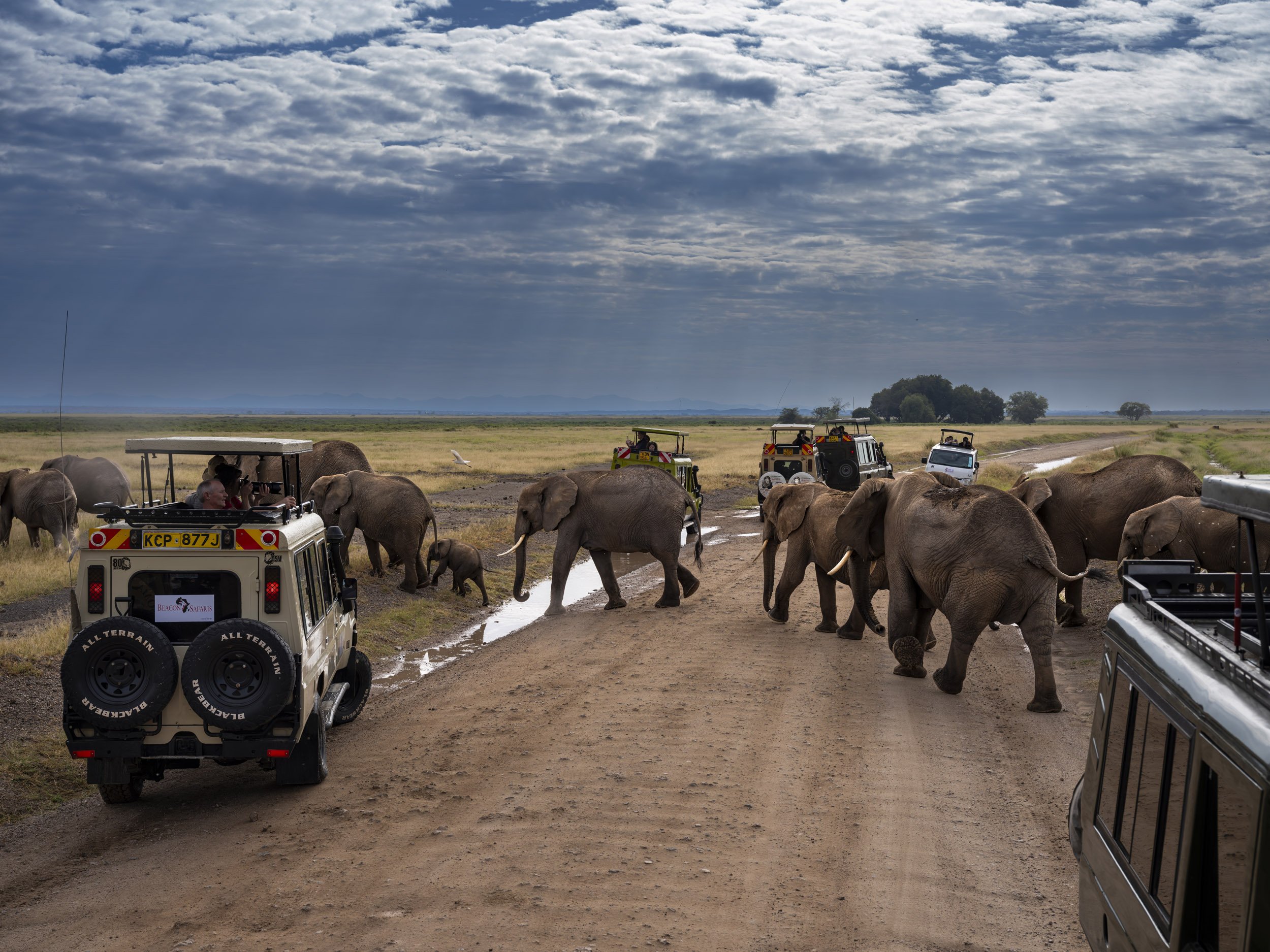
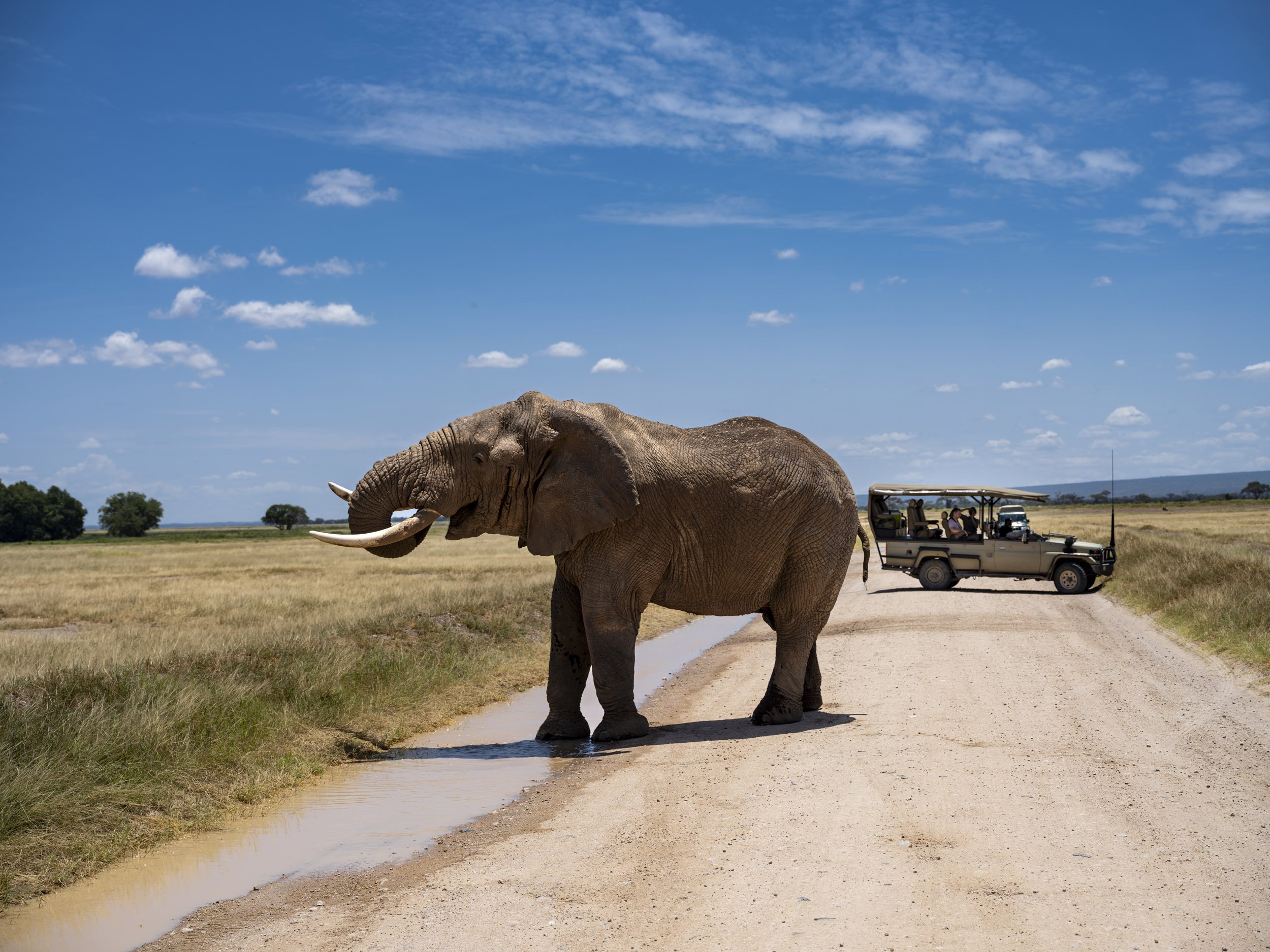
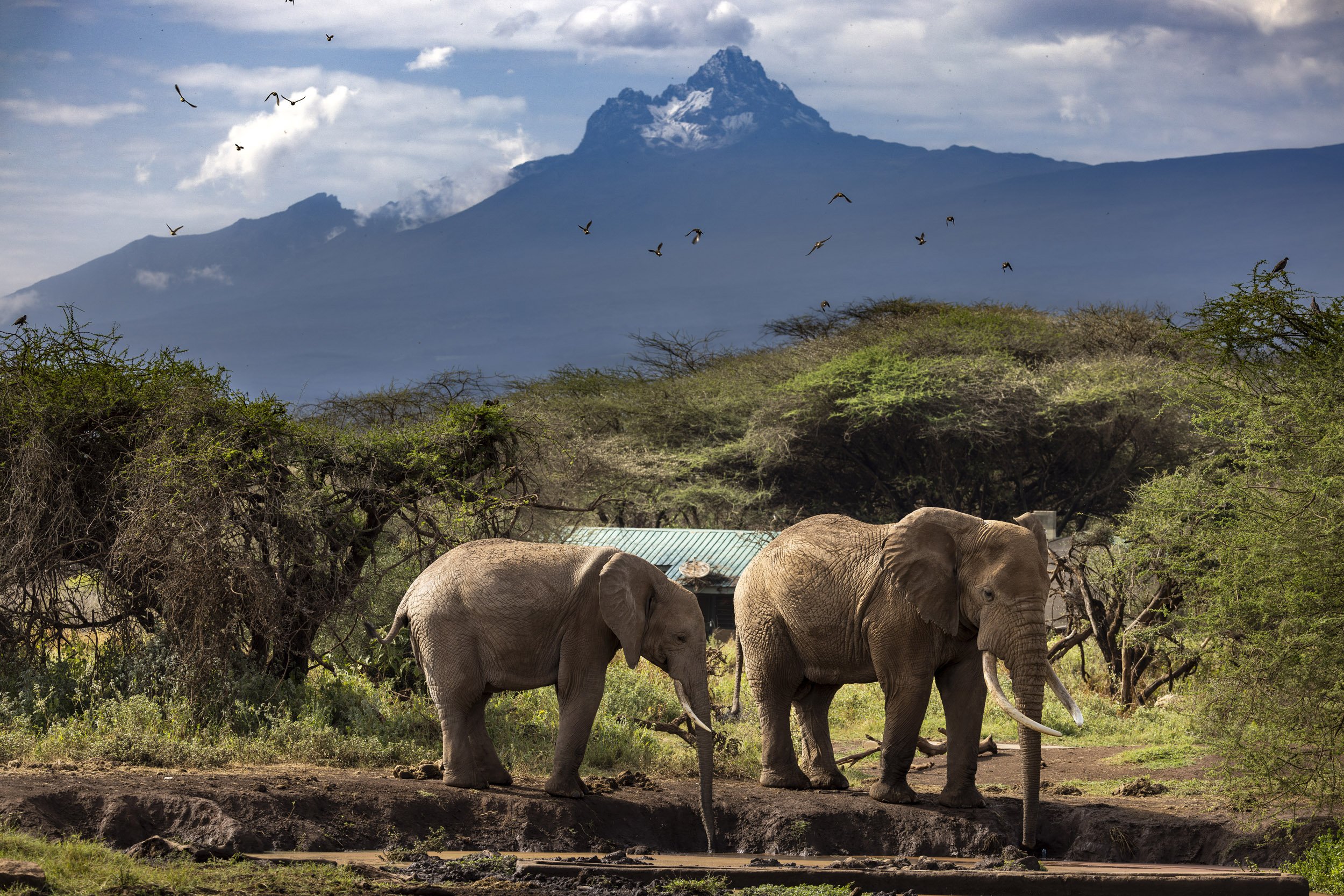
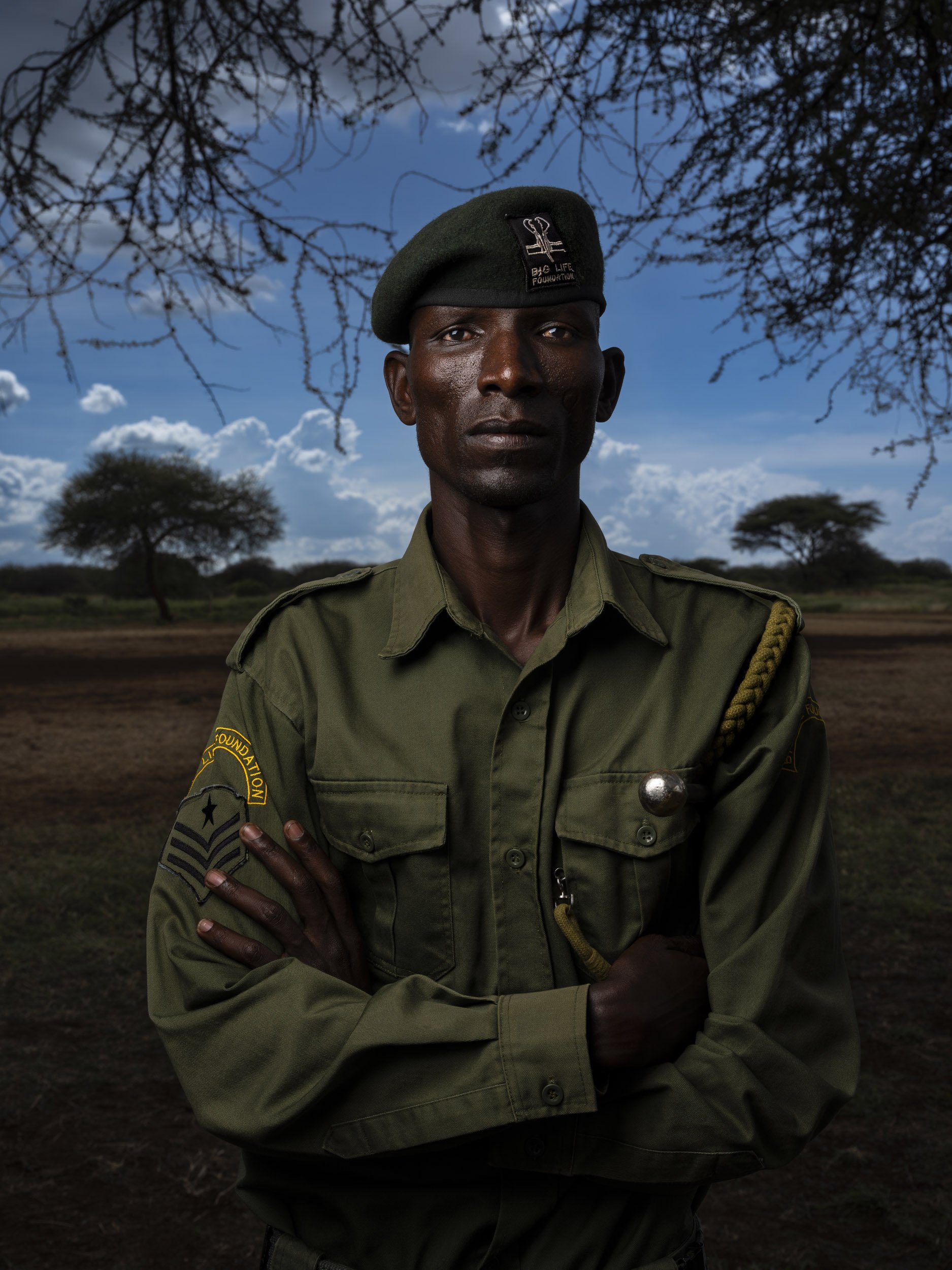
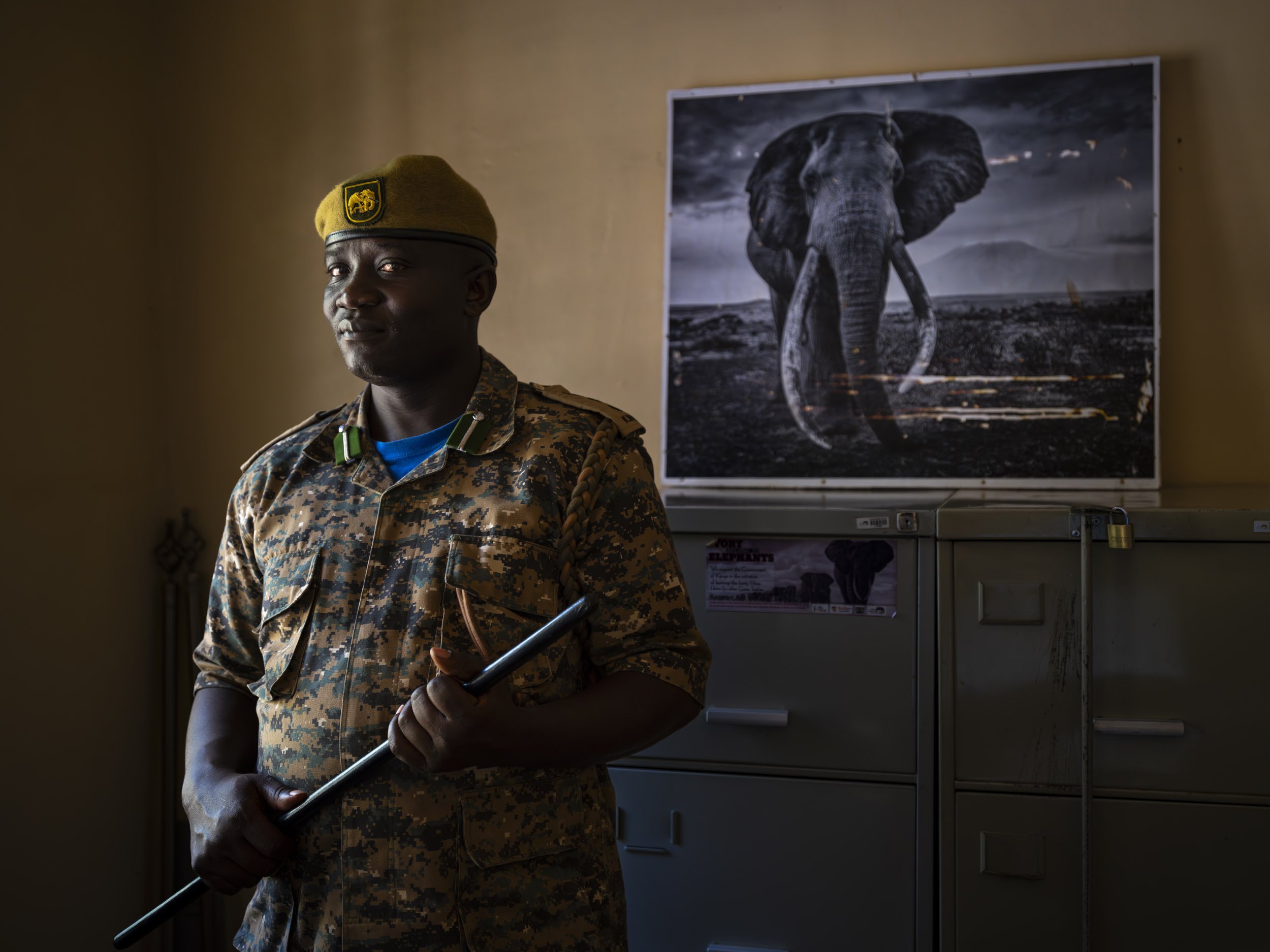
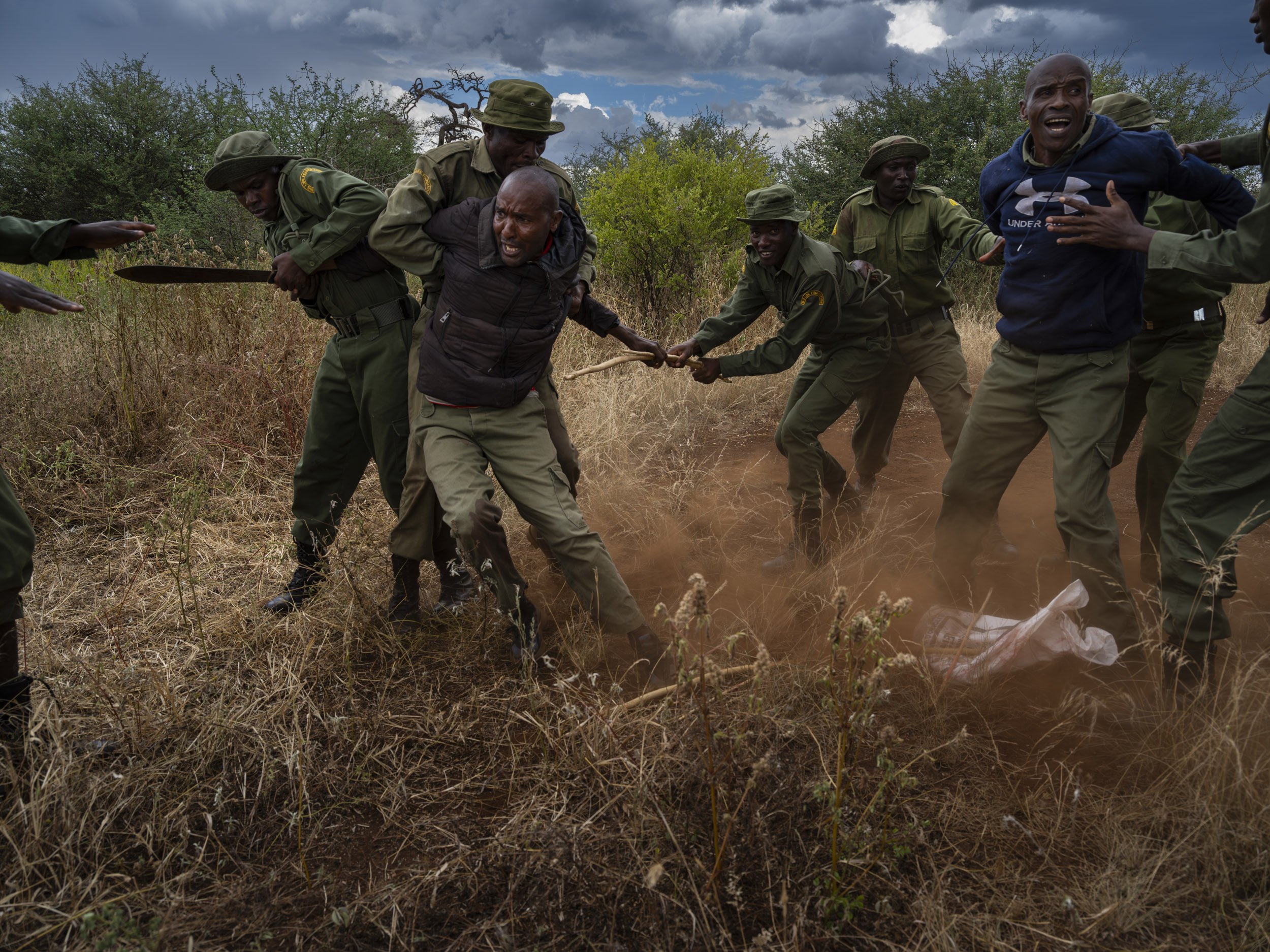
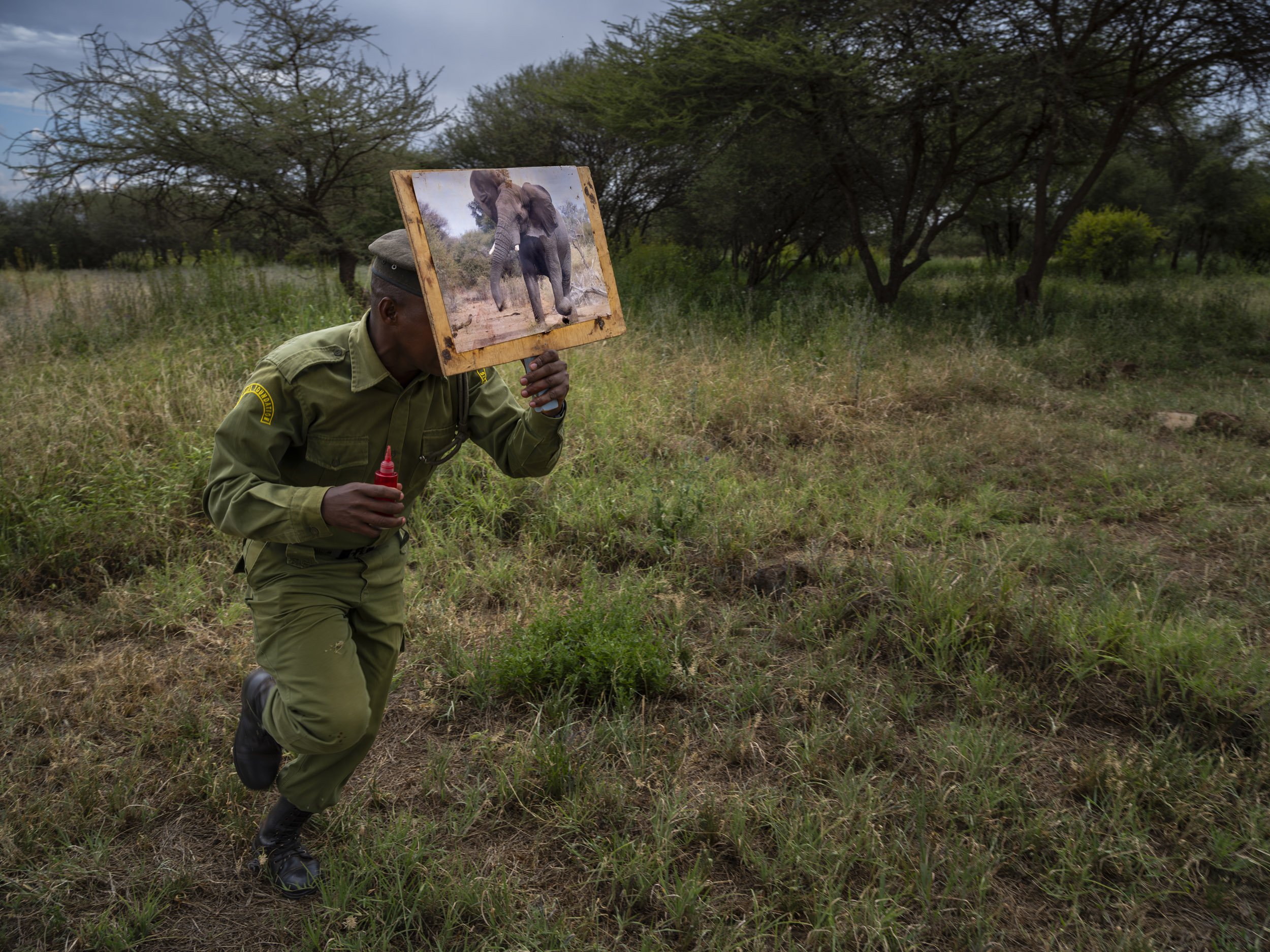

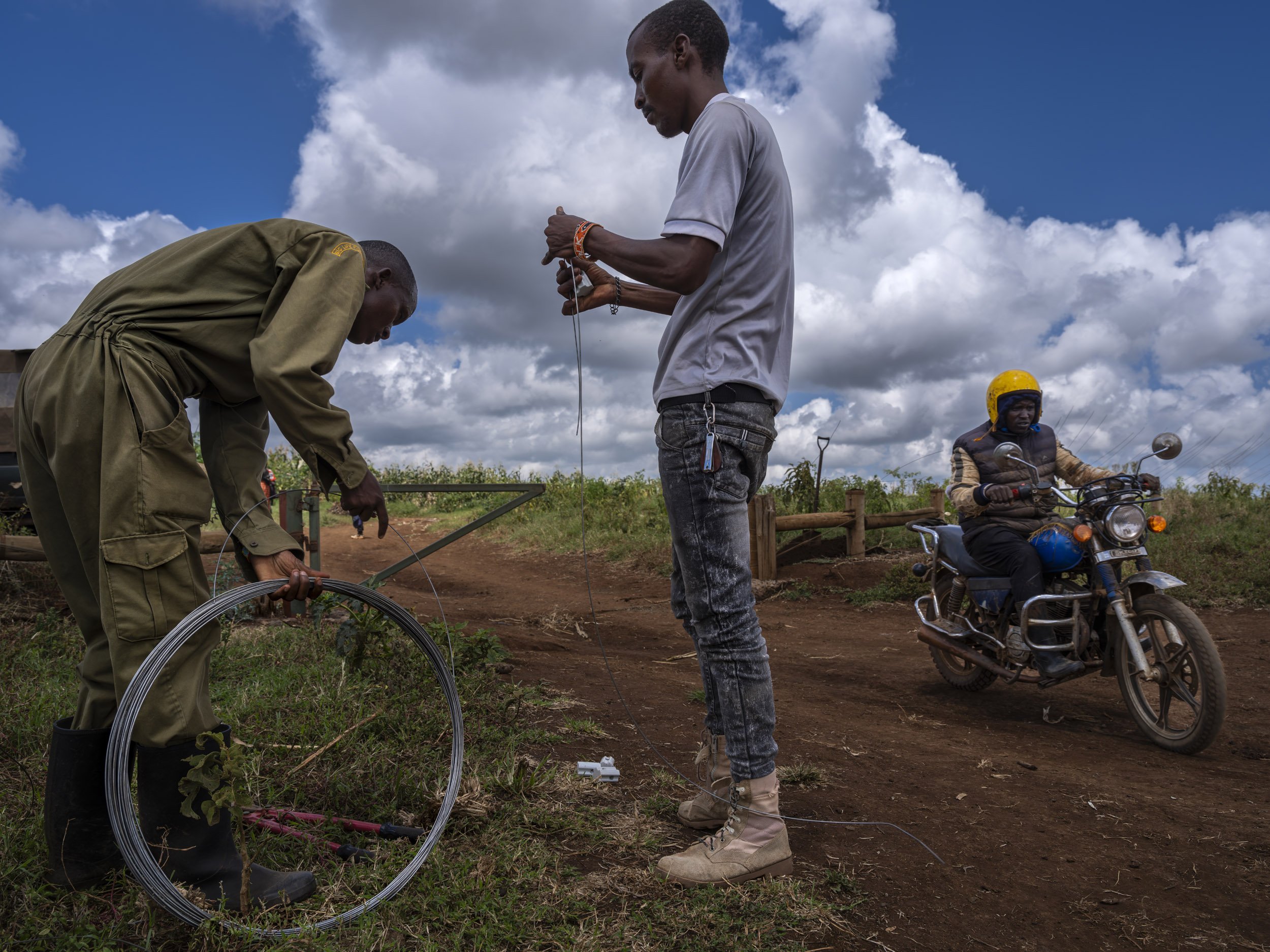
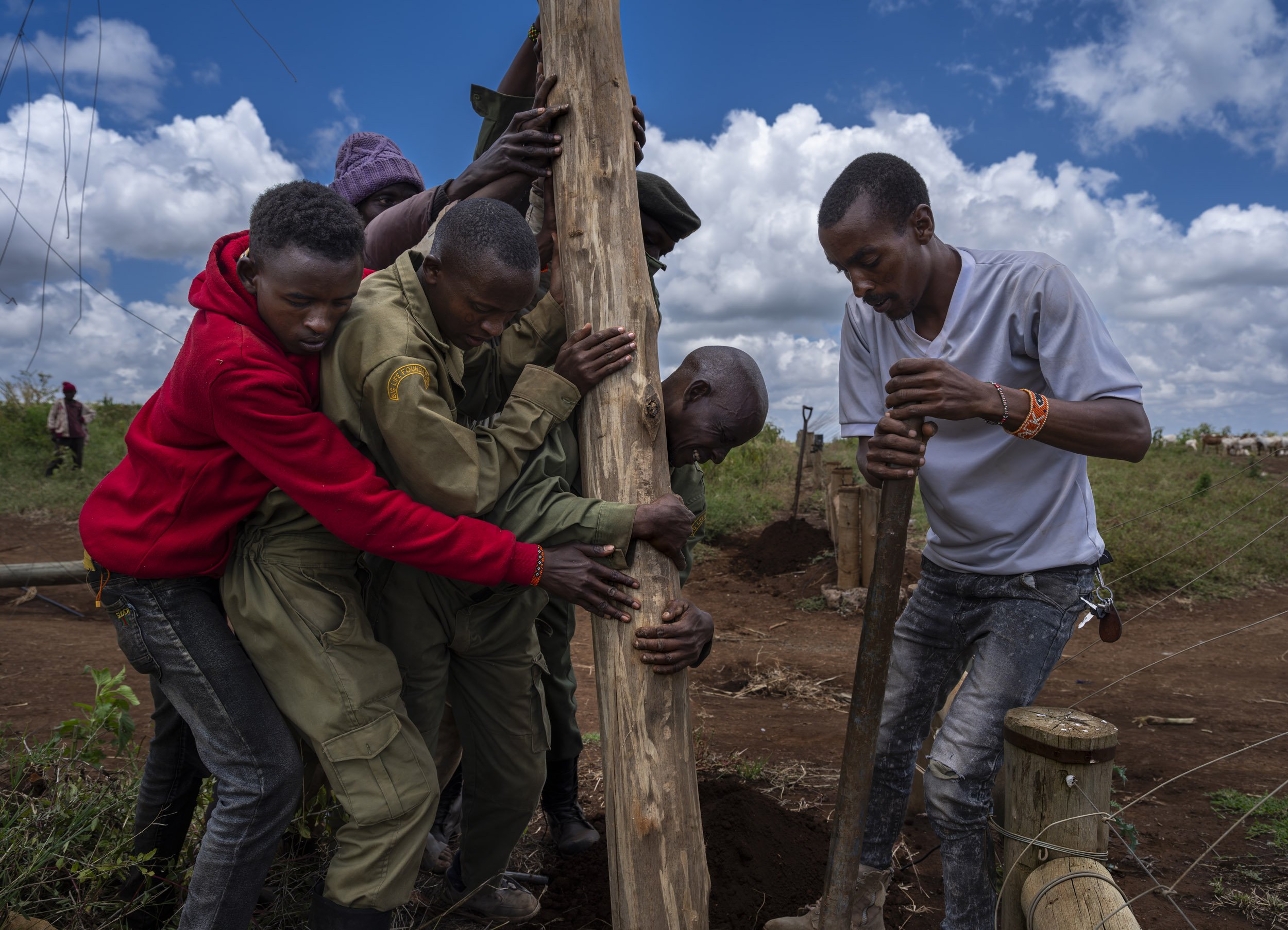
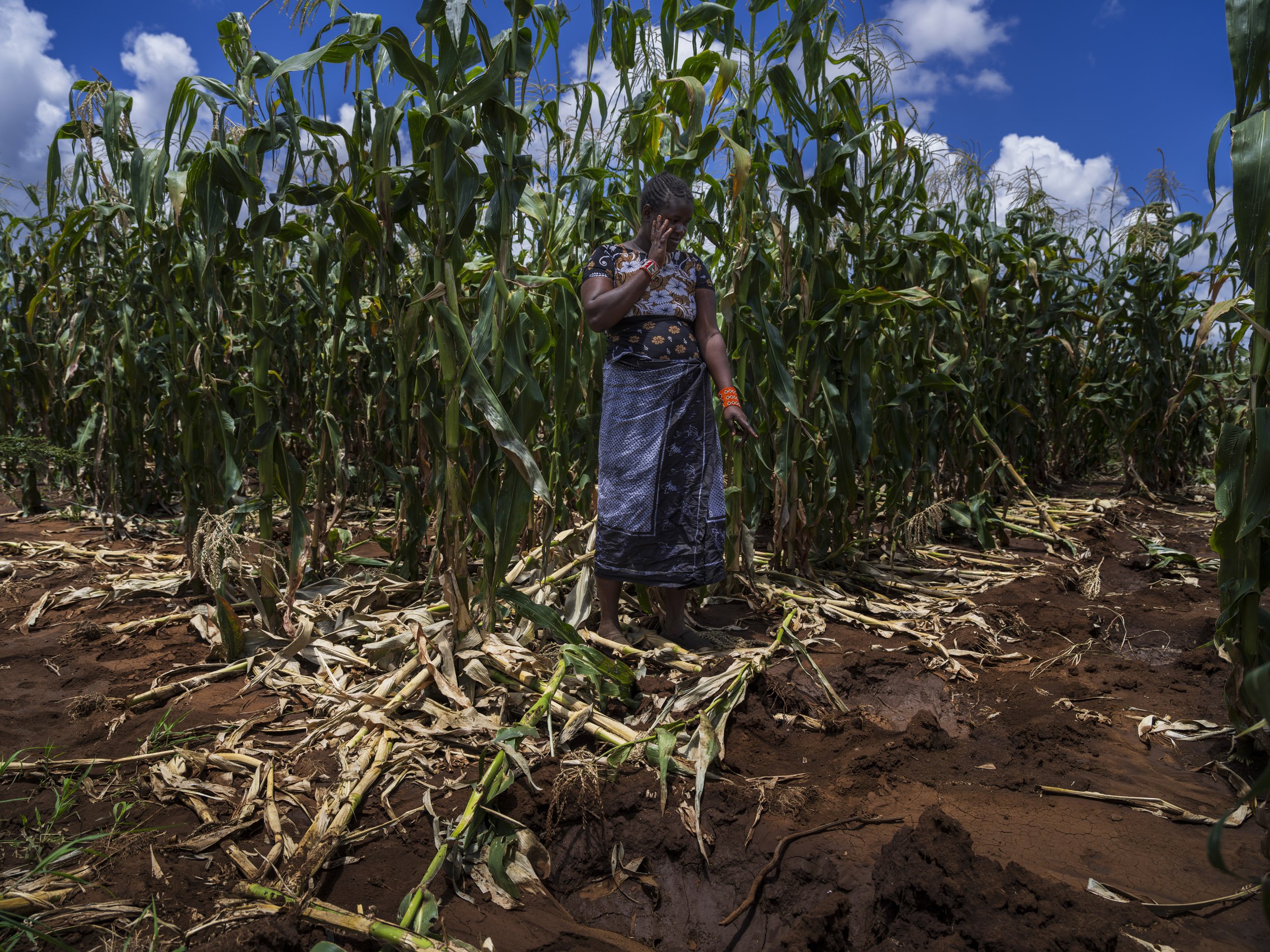
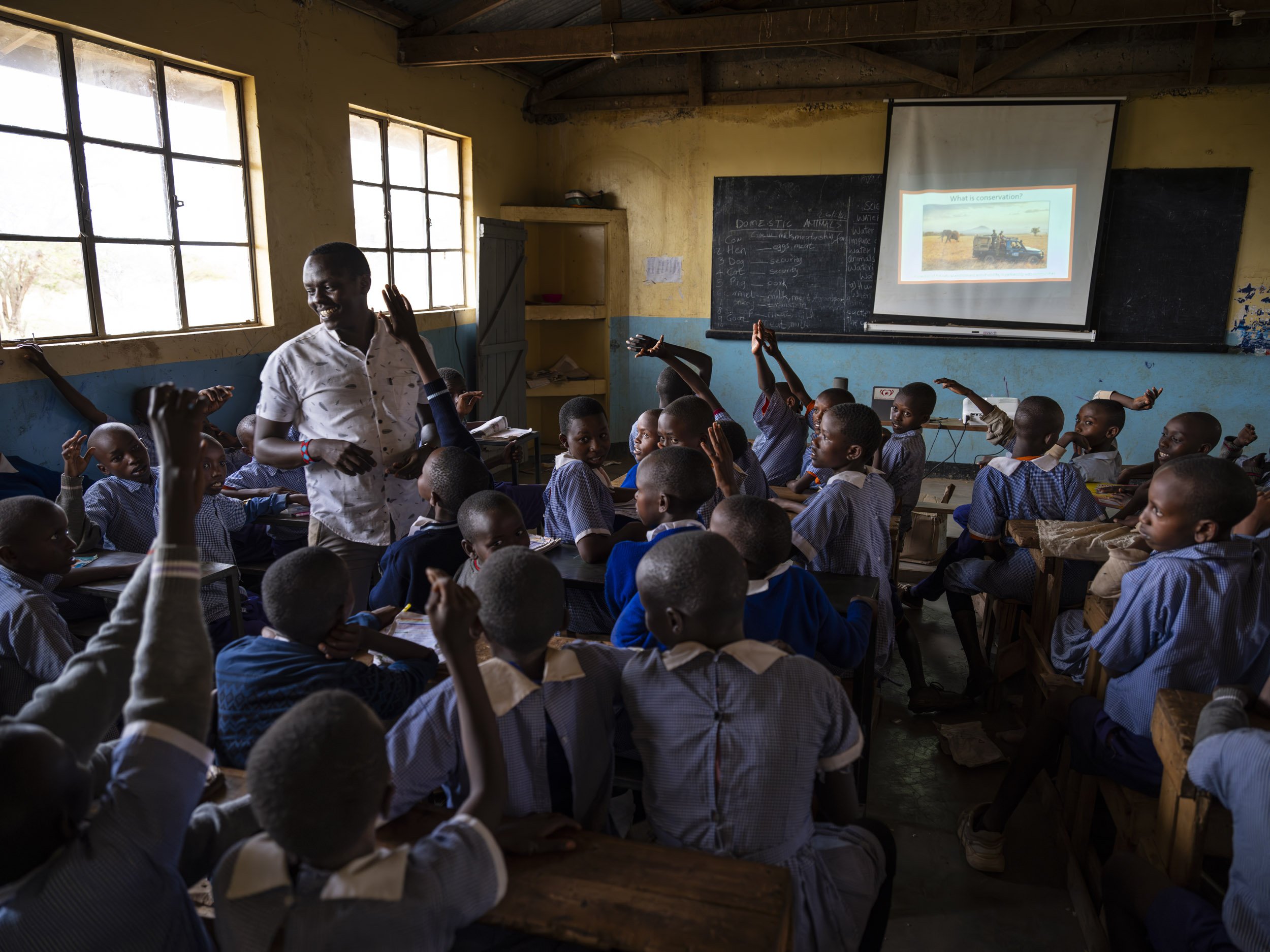
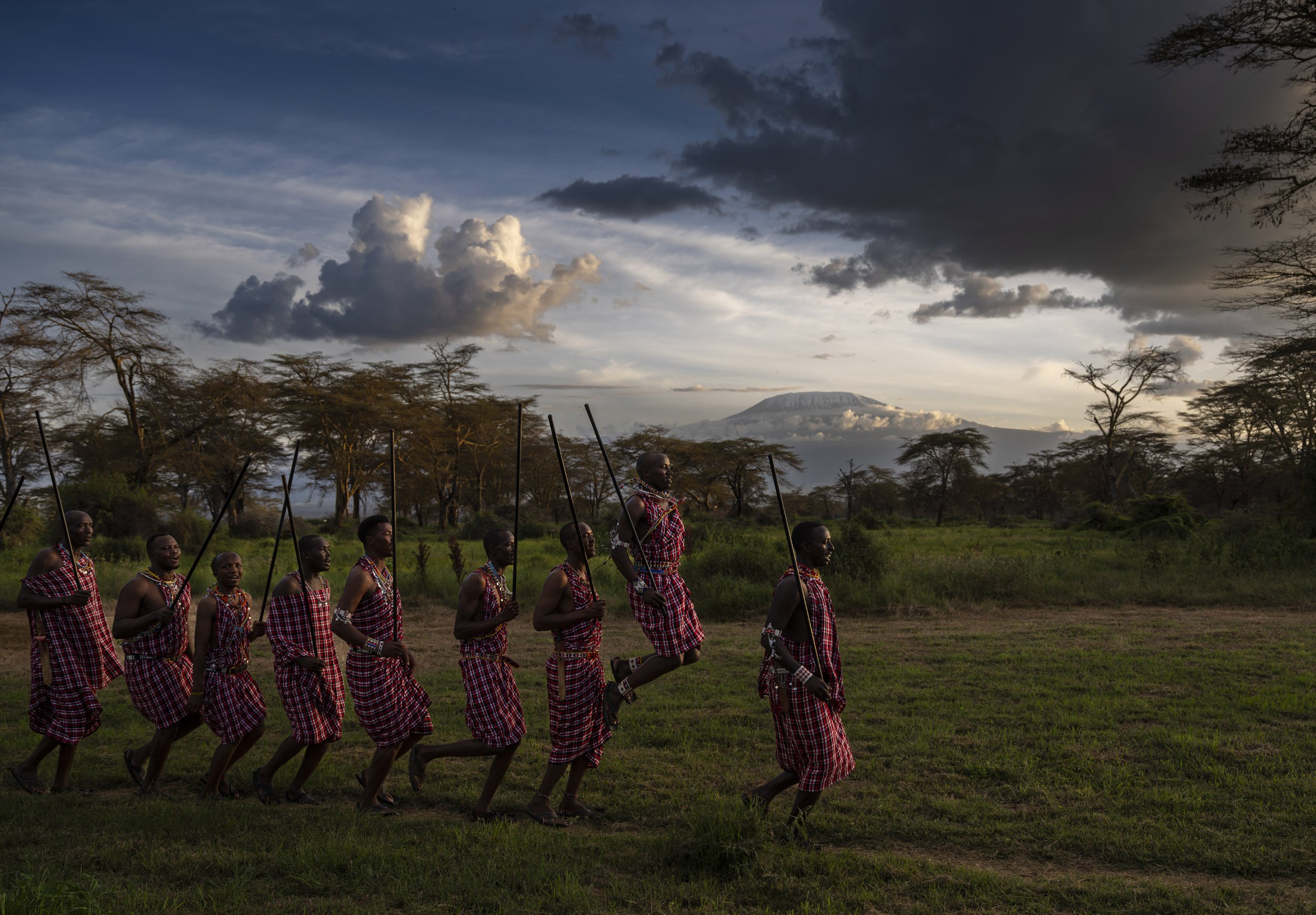
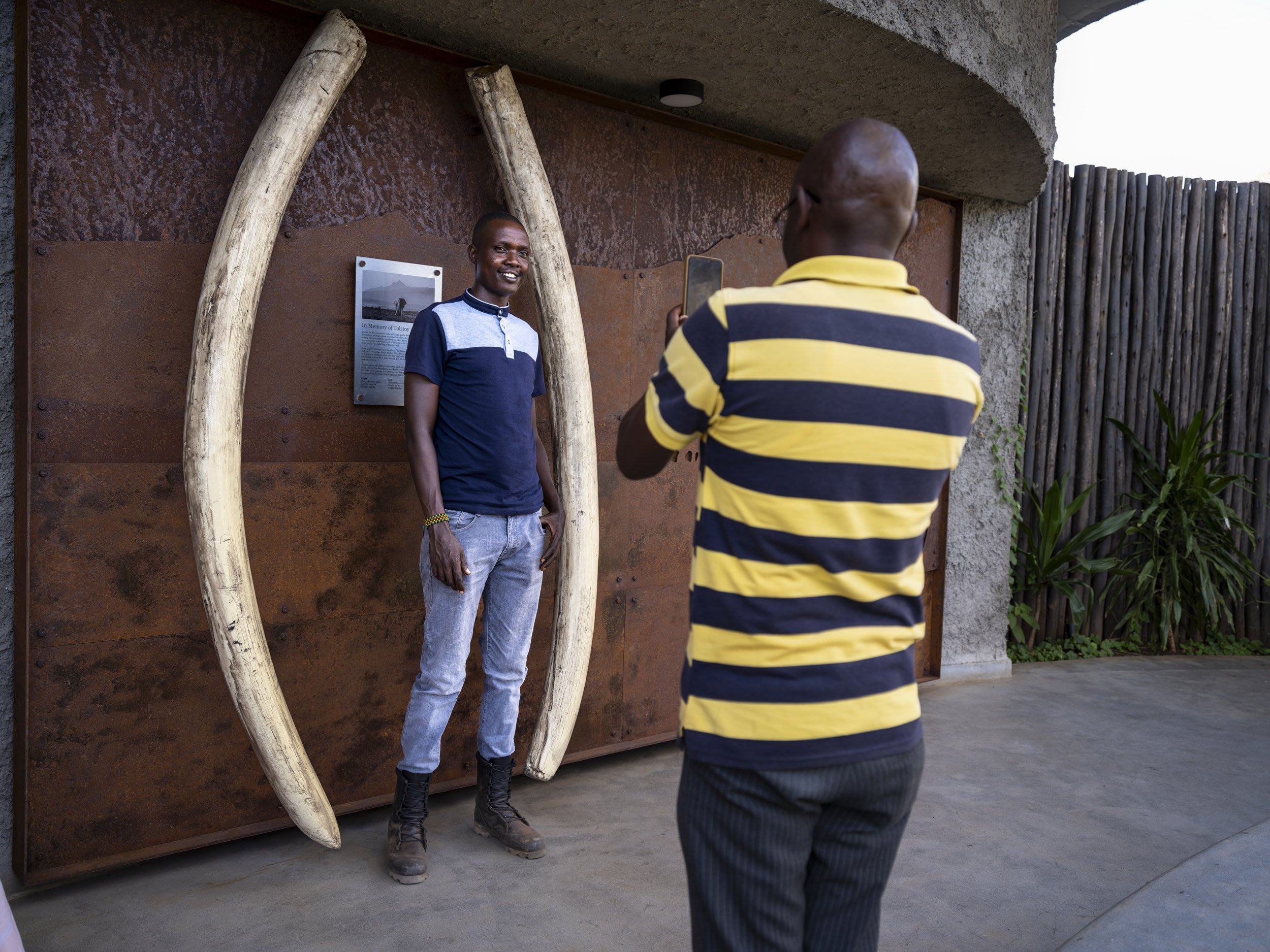
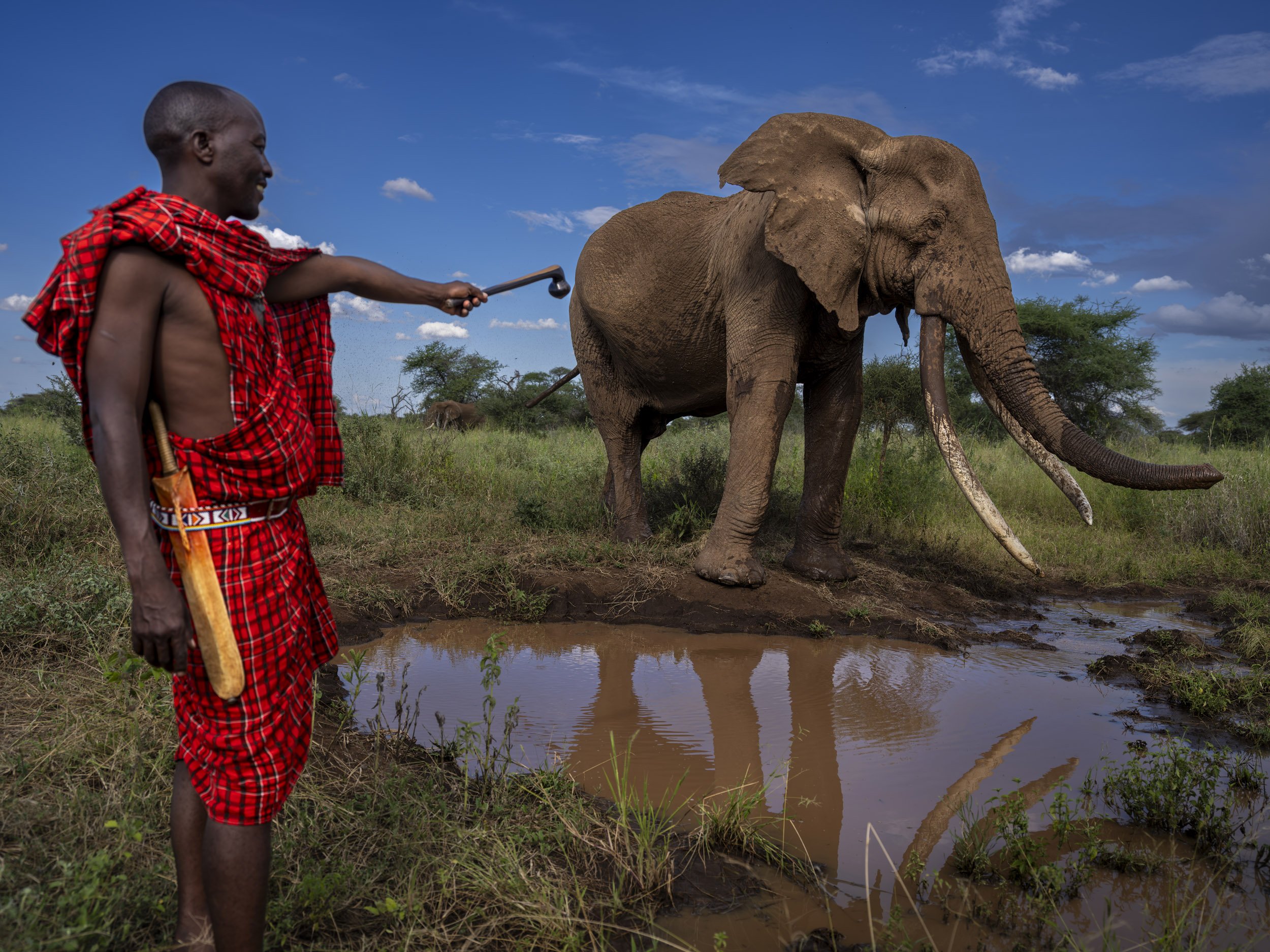

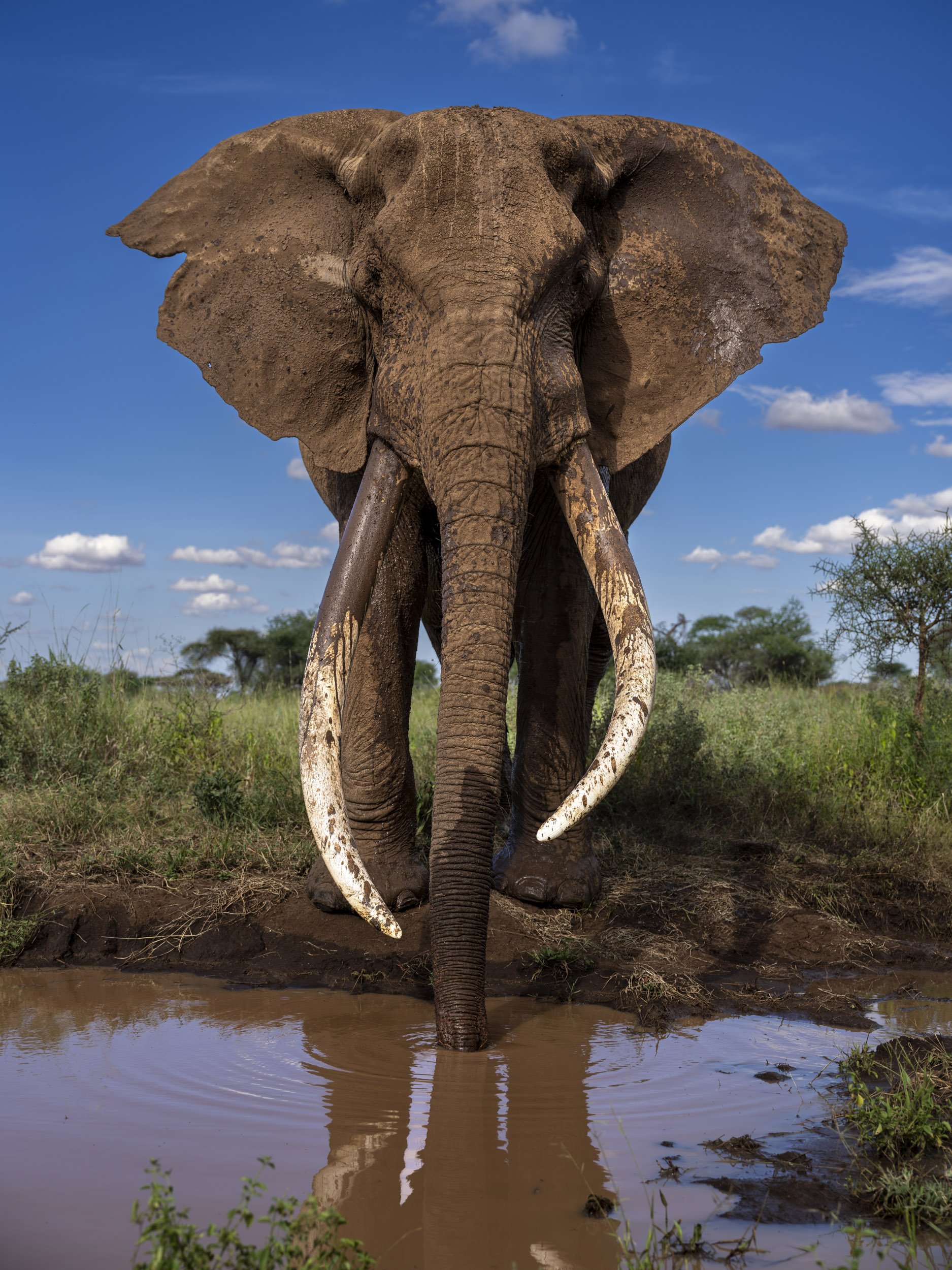
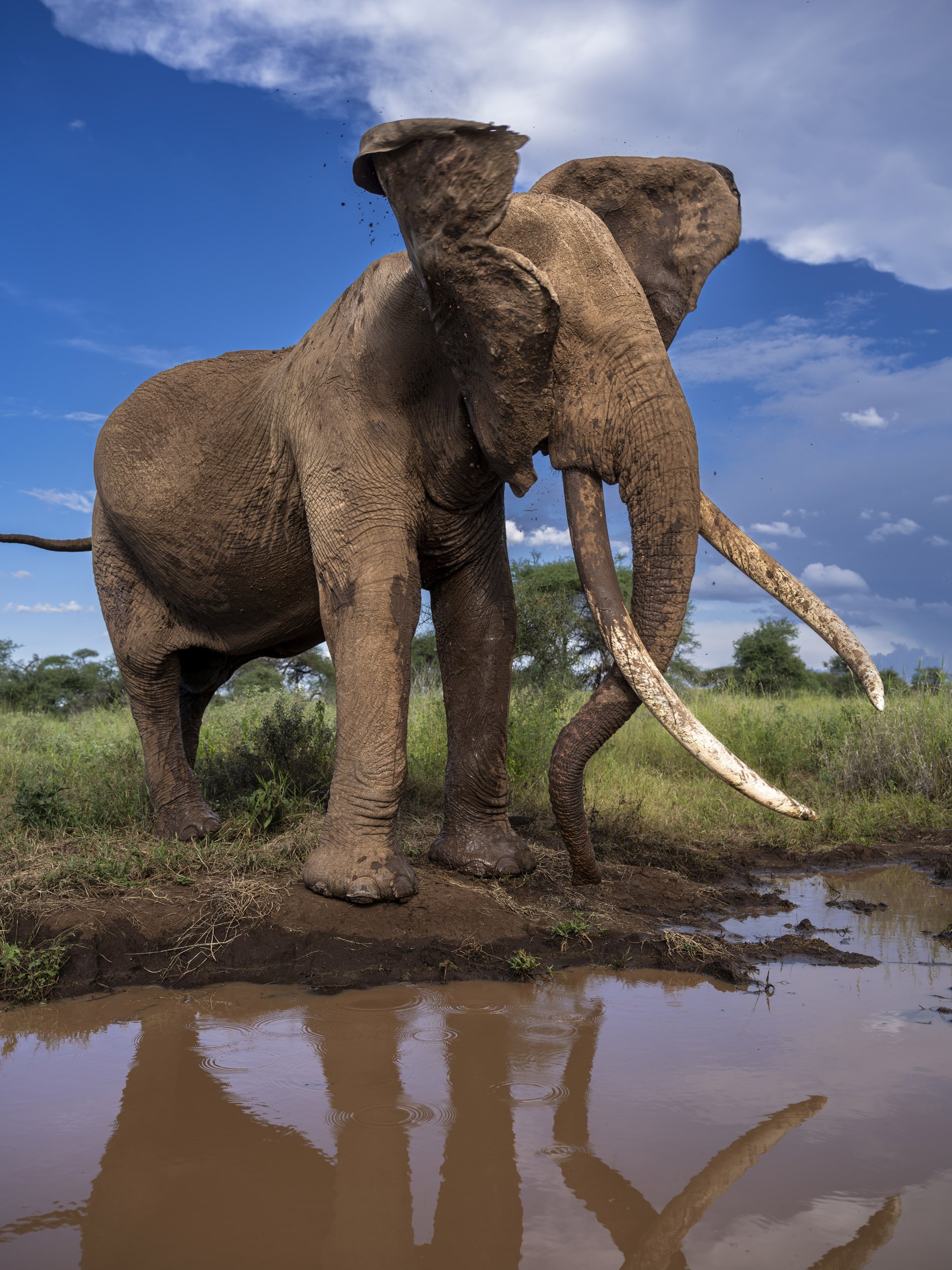
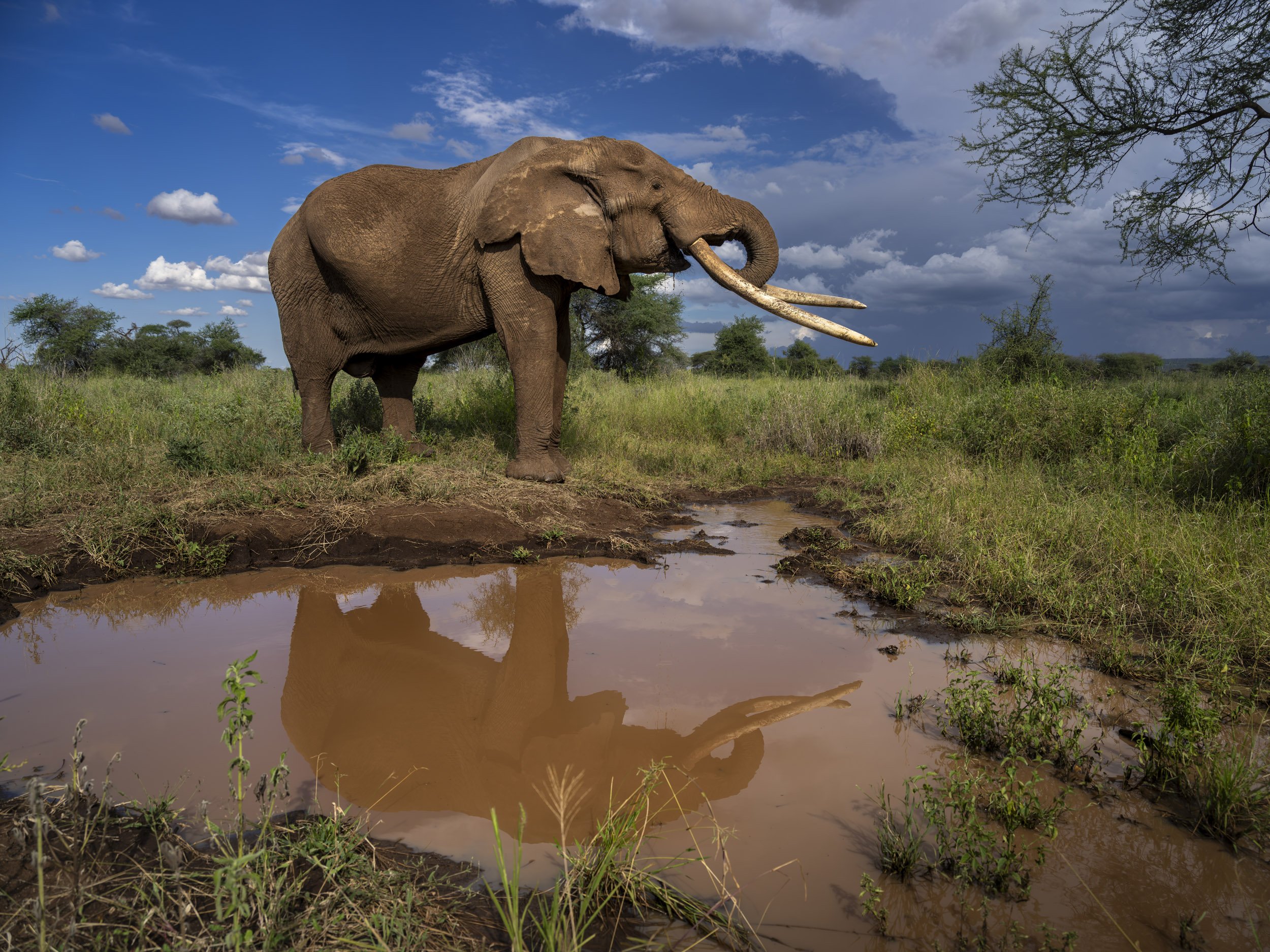
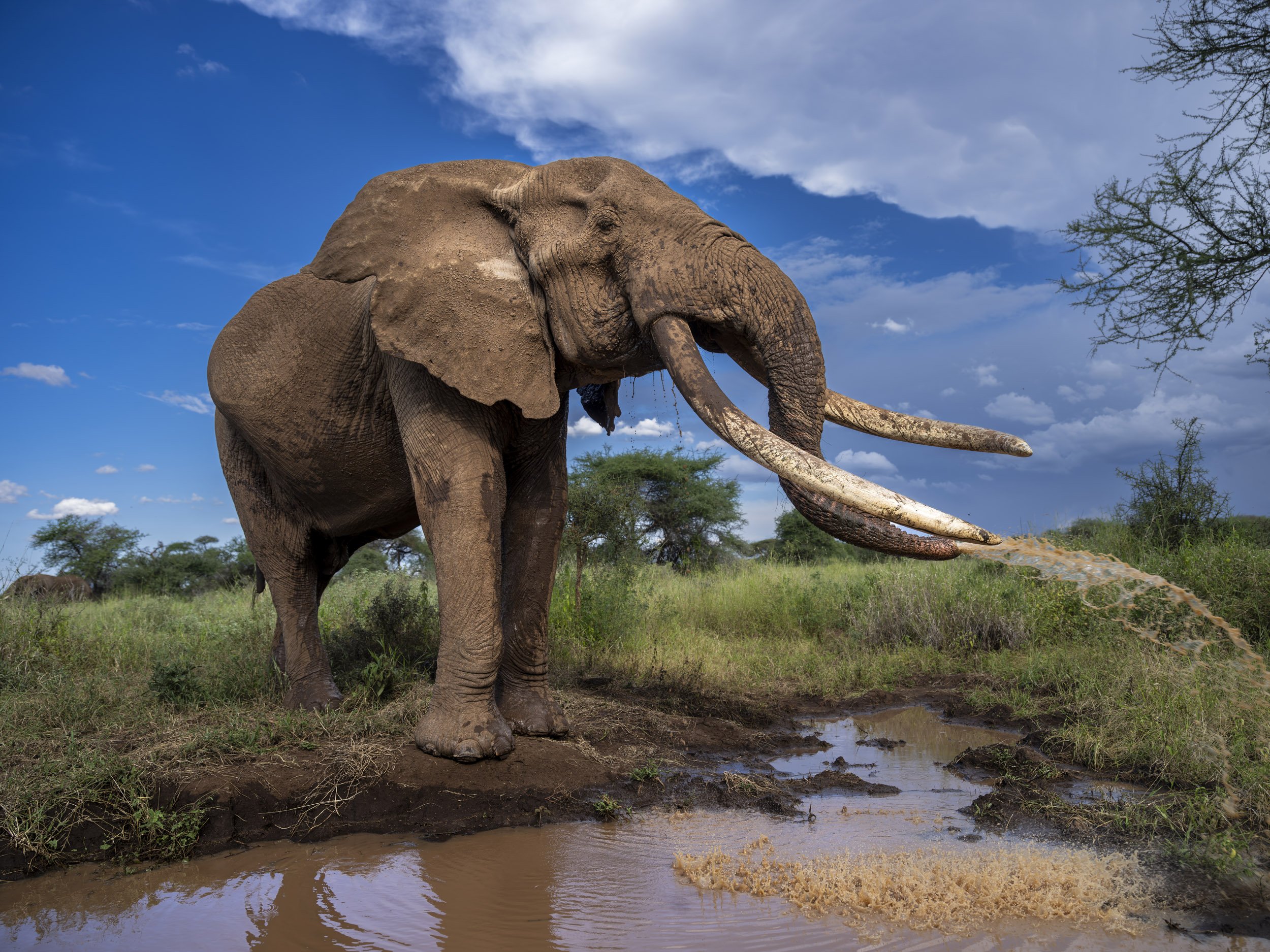
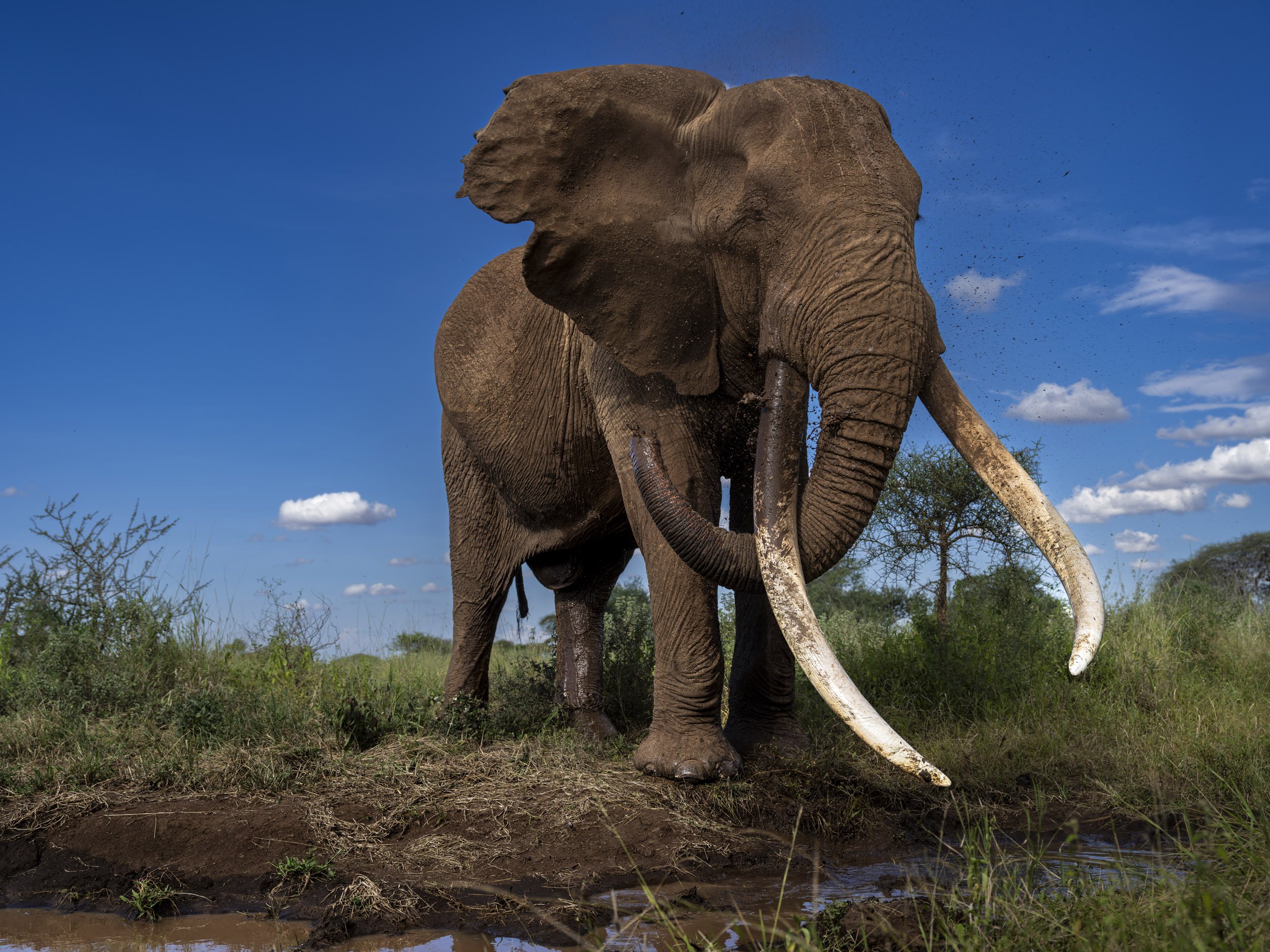
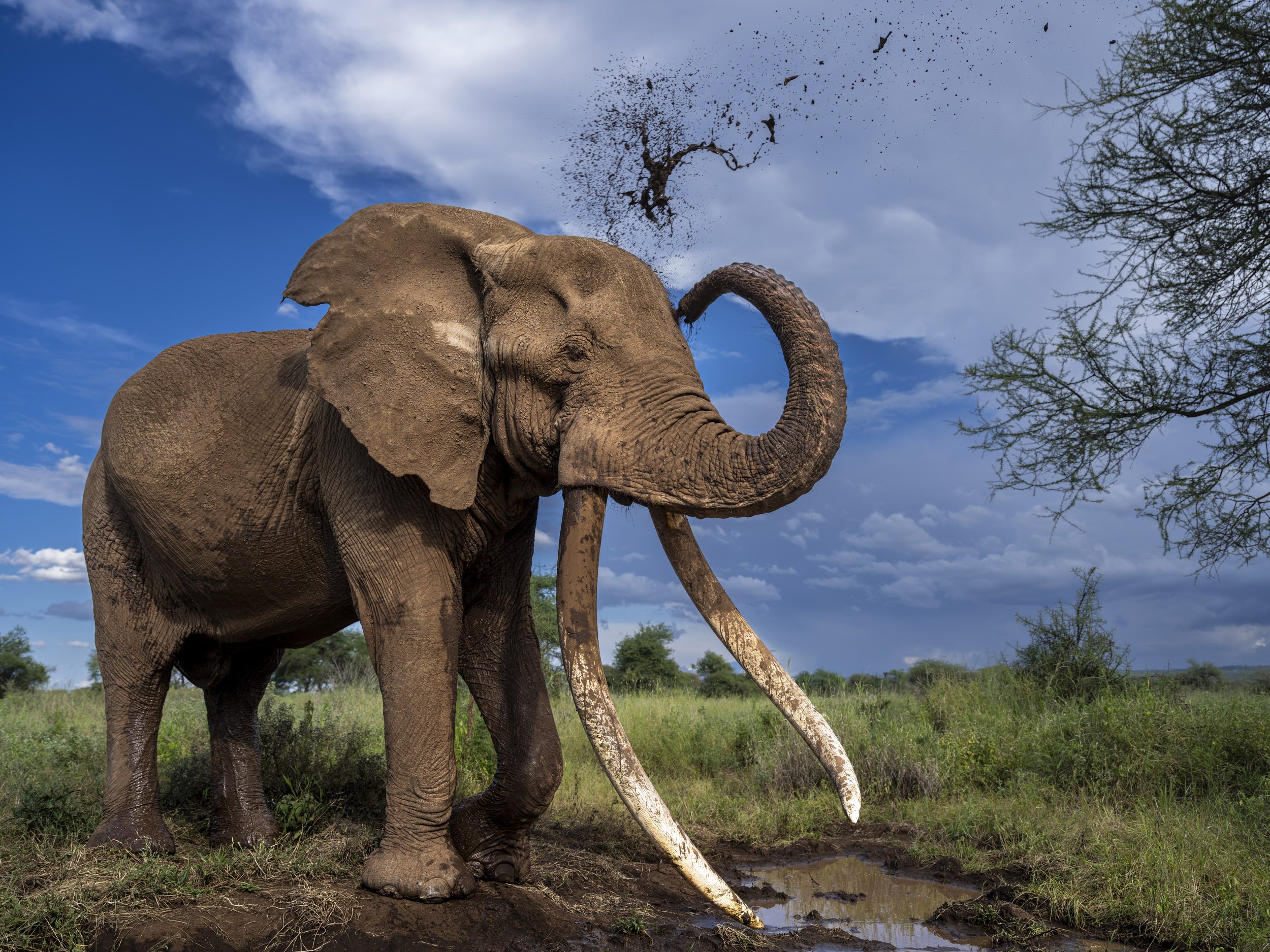
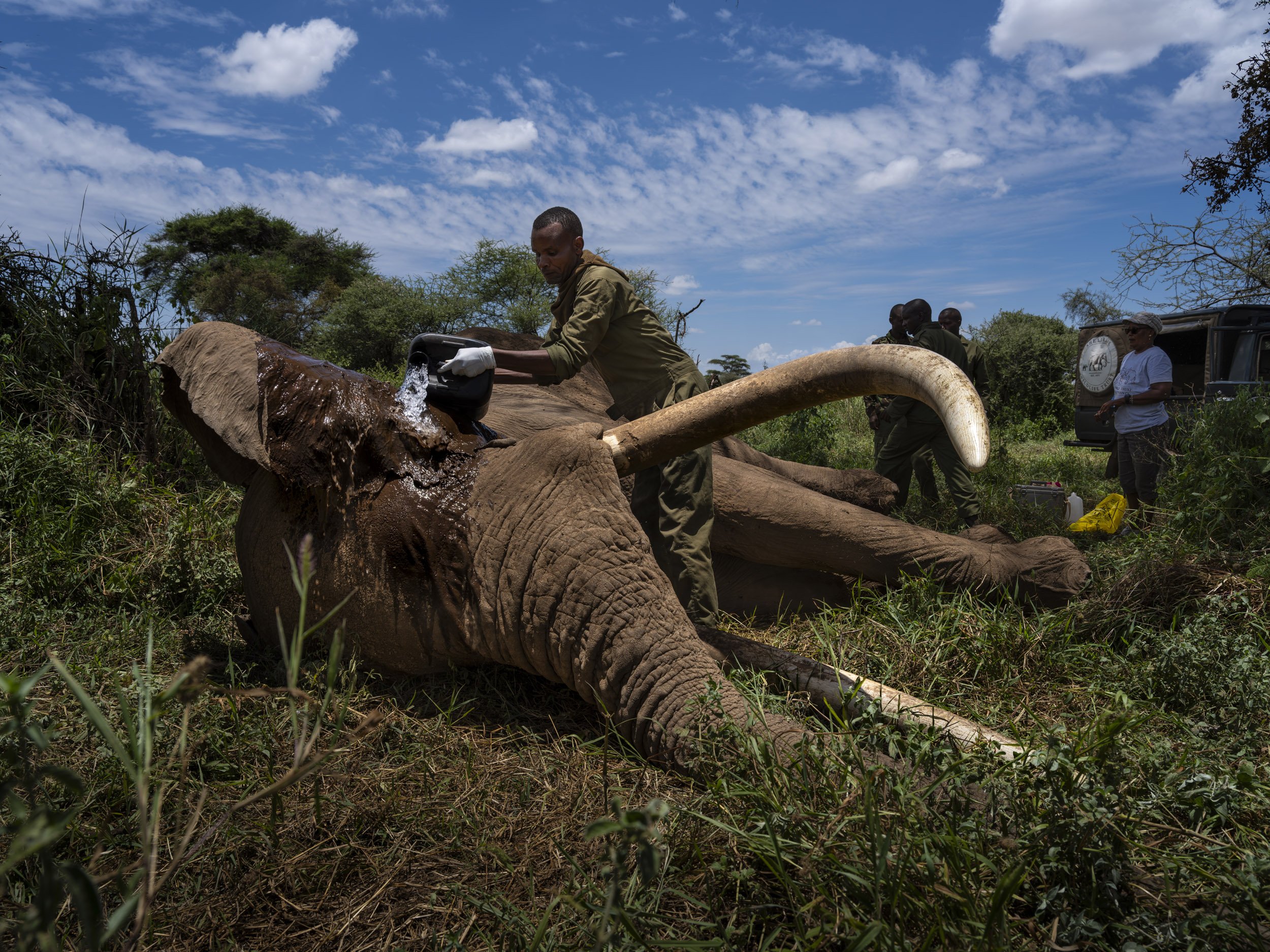
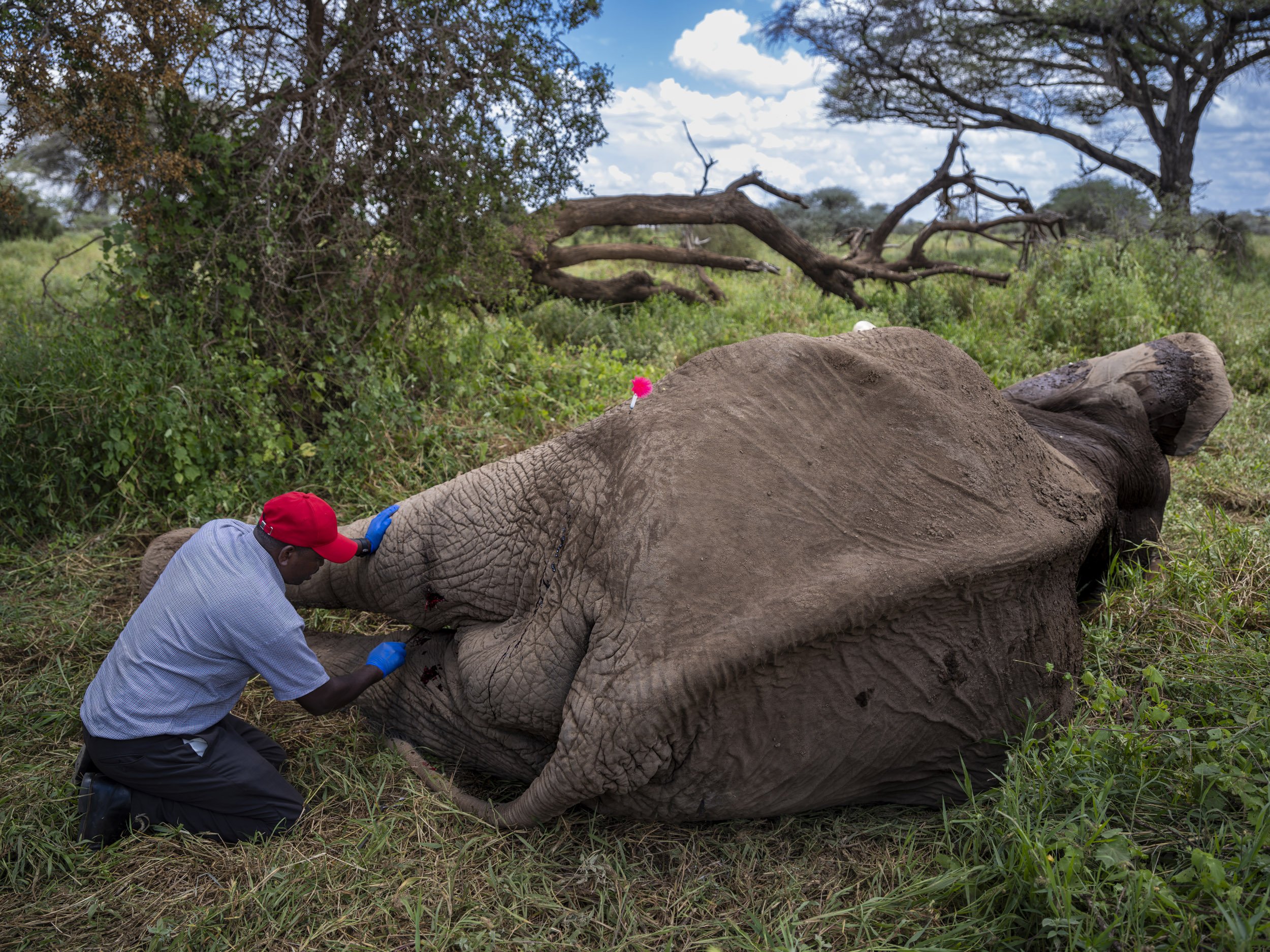
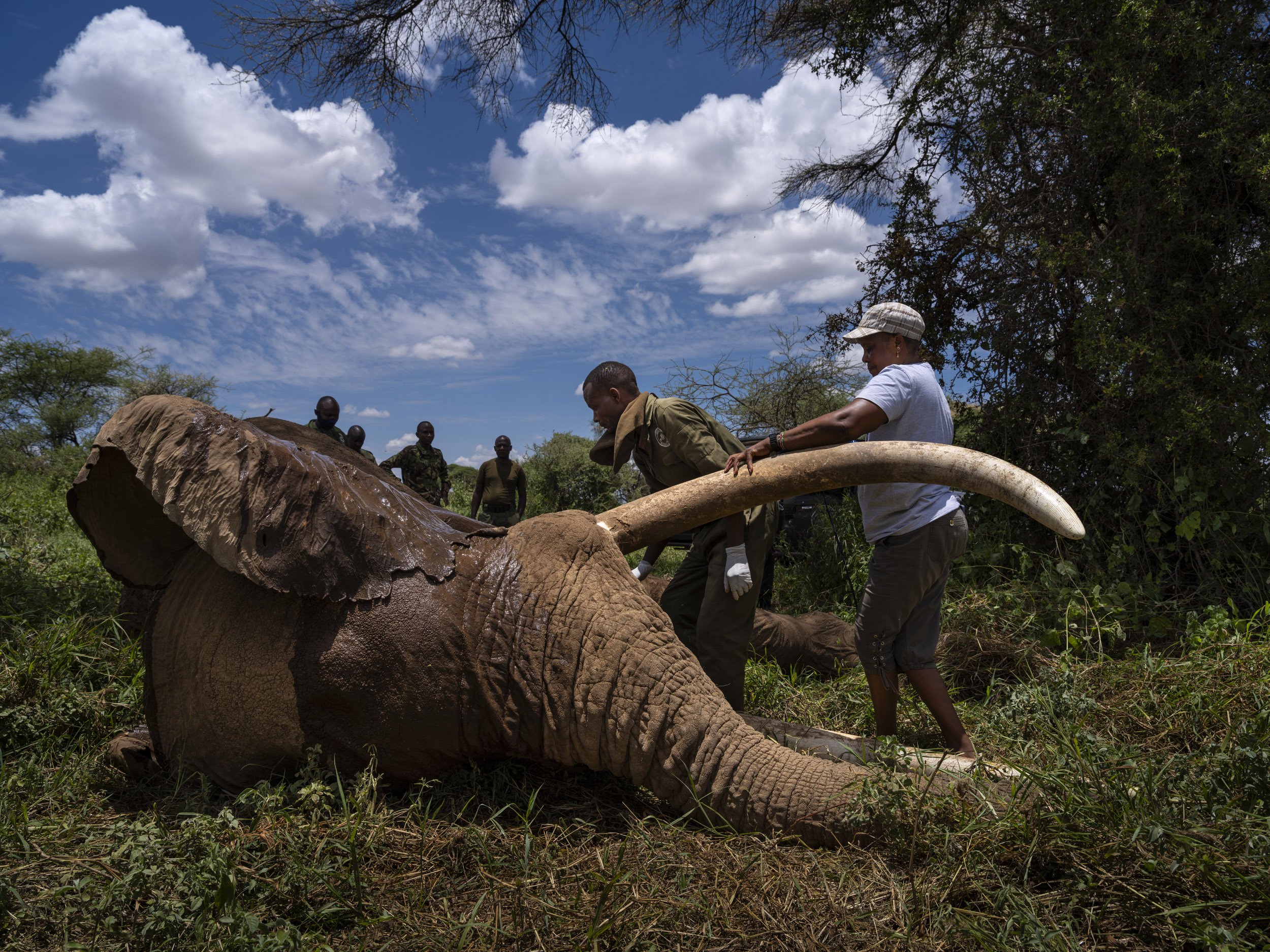
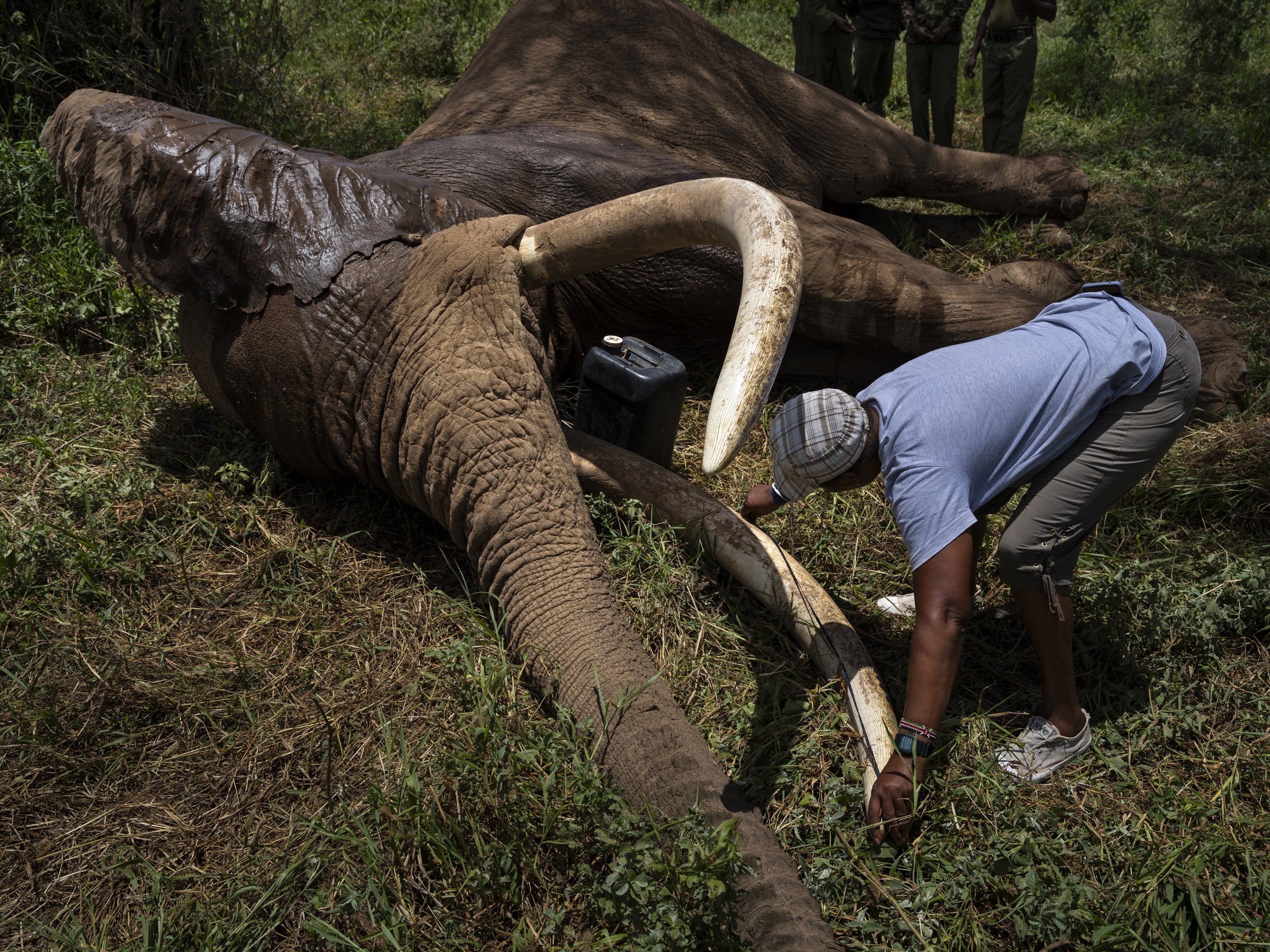
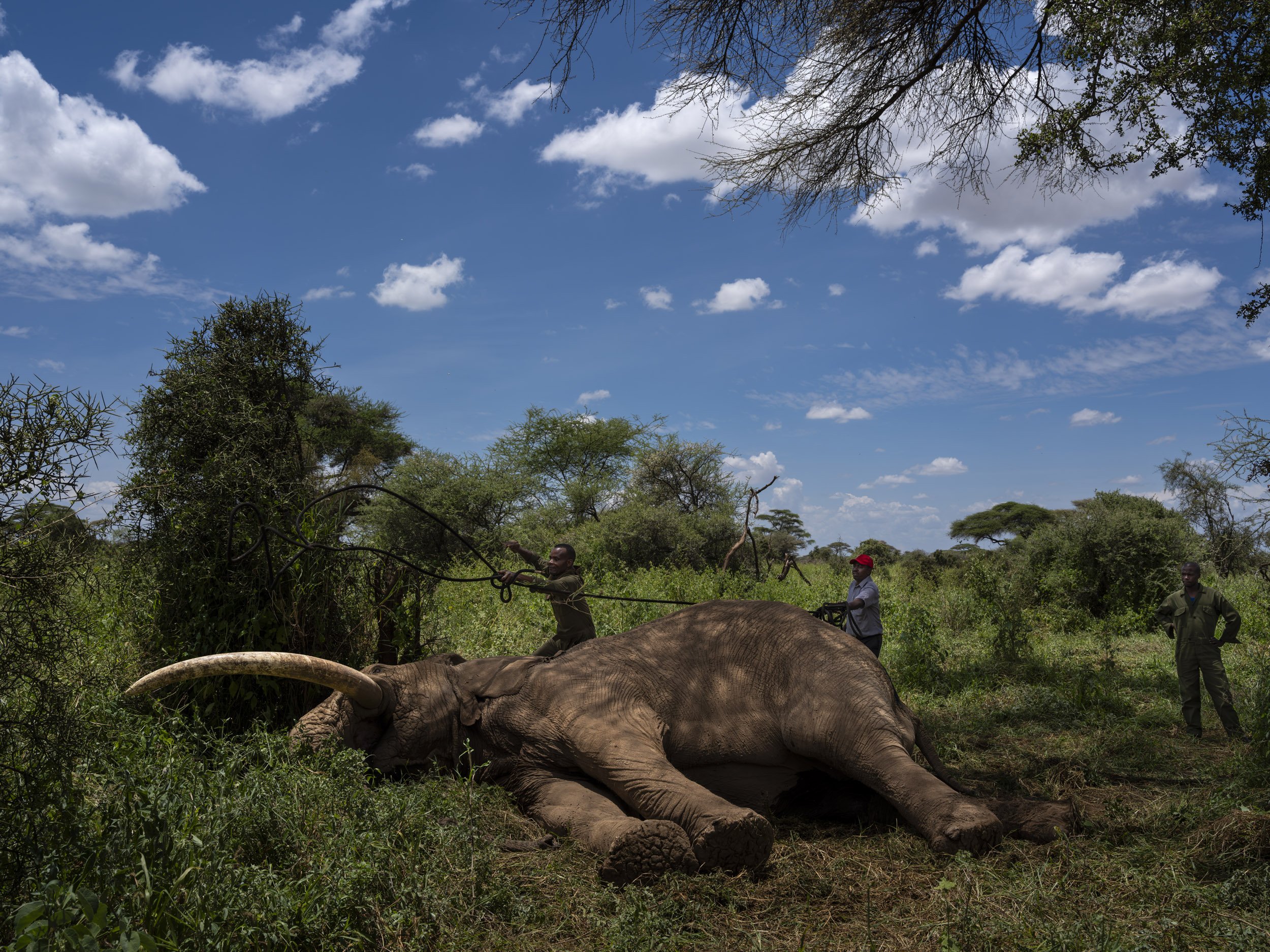
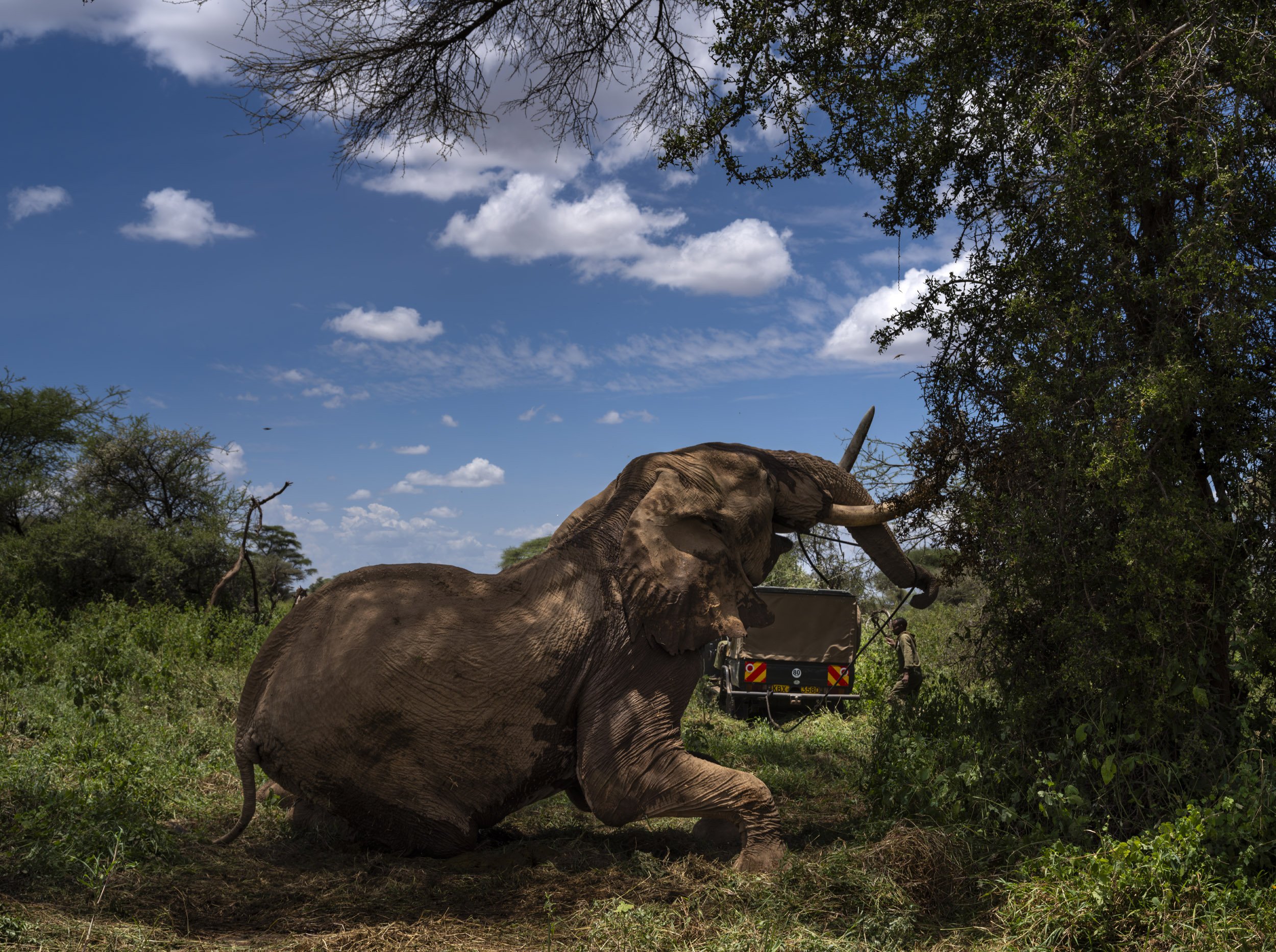
CHYULU HILLS, AMBOSELLI ECOSYSTEM, KENYA: One-Ton, one of the most iconic tuskers in the world, is seen at a water hole in the Chulu hills. The Amboseli ecosystem, home to the most iconic elephant in the world, is under threat like never before. The Group Ranch system, which governed Maasai land rights and usage, has been dismantled and for the first time in the modern era, individual members have the right to sell their land parcels. The Group Ranches preserved land masses intact, used for both pastoralism as well as wildlife, now those are being fragmented as some Maasai have chosen to sell to outsiders. We now see factories, urban sprawl and large, water hungry agriculture in former elephant habitat. As a result, the Amboseli Ecosystem is being broken up and vital animal corridors are being disturbed and cut off. This affects all migrating animals who need land and water to survive. At this time, one of the solutions is to help local Maasai run their own conservancies and see benefit from tourism as well as maintain their traditional lifestyles. This involves buying land leases, and expensive and complicated process. Straddling southern Kenya and northern Tanzania, Big Life Foundation works to protect over 1.6 million acres in the Amboseli-Tsavo-Kilimanjaro ecosystem. They use innovative conservation strategies that can serve as models elsewhere and collaborate closely with local communities, partner NGOs, national parks, and government agencies, Big Life seeks to protect and sustain East Africa’s wildlife and natural habitats, including one of the world’s best-known elephant populations.
CHYULU HILLS, AMBOSELLI ECOSYSTEM, KENYA: One-Ton, one of the most iconic tuskers in the world, is seen at a water hole in the Chulu hills. The Amboseli ecosystem, home to the most iconic elephant in the world, is under threat like never before. The Group Ranch system, which governed Maasai land rights and usage, has been dismantled and for the first time in the modern era, individual members have the right to sell their land parcels. The Group Ranches preserved land masses intact, used for both pastoralism as well as wildlife, now those are being fragmented as some Maasai have chosen to sell to outsiders. We now see factories, urban sprawl and large, water hungry agriculture in former elephant habitat. As a result, the Amboseli Ecosystem is being broken up and vital animal corridors are being disturbed and cut off. This affects all migrating animals who need land and water to survive. At this time, one of the solutions is to help local Maasai run their own conservancies and see benefit from tourism as well as maintain their traditional lifestyles. This involves buying land leases, and expensive and complicated process. Straddling southern Kenya and northern Tanzania, Big Life Foundation works to protect over 1.6 million acres in the Amboseli-Tsavo-Kilimanjaro ecosystem. They use innovative conservation strategies that can serve as models elsewhere and collaborate closely with local communities, partner NGOs, national parks, and government agencies, Big Life seeks to protect and sustain East Africa’s wildlife and natural habitats, including one of the world’s best-known elephant populations.
CHYULU HILLS, AMBOSELLI ECOSYSTEM, KENYA: One-Ton, one of the most iconic tuskers in the world, is seen at a water hole in the Chulu hills. The Amboseli ecosystem, home to the most iconic elephant in the world, is under threat like never before. The Group Ranch system, which governed Maasai land rights and usage, has been dismantled and for the first time in the modern era, individual members have the right to sell their land parcels. The Group Ranches preserved land masses intact, used for both pastoralism as well as wildlife, now those are being fragmented as some Maasai have chosen to sell to outsiders. We now see factories, urban sprawl and large, water hungry agriculture in former elephant habitat. As a result, the Amboseli Ecosystem is being broken up and vital animal corridors are being disturbed and cut off. This affects all migrating animals who need land and water to survive. At this time, one of the solutions is to help local Maasai run their own conservancies and see benefit from tourism as well as maintain their traditional lifestyles. This involves buying land leases, and expensive and complicated process. Straddling southern Kenya and northern Tanzania, Big Life Foundation works to protect over 1.6 million acres in the Amboseli-Tsavo-Kilimanjaro ecosystem. They use innovative conservation strategies that can serve as models elsewhere and collaborate closely with local communities, partner NGOs, national parks, and government agencies, Big Life seeks to protect and sustain East Africa’s wildlife and natural habitats, including one of the world’s best-known elephant populations.
CHYULU HILLS, AMBOSELLI ECOSYSTEM, KENYA: One-Ton, one of the most iconic tuskers in the world, is seen at a water hole in the Chulu hills. The Amboseli ecosystem, home to the most iconic elephant in the world, is under threat like never before. The Group Ranch system, which governed Maasai land rights and usage, has been dismantled and for the first time in the modern era, individual members have the right to sell their land parcels. The Group Ranches preserved land masses intact, used for both pastoralism as well as wildlife, now those are being fragmented as some Maasai have chosen to sell to outsiders. We now see factories, urban sprawl and large, water hungry agriculture in former elephant habitat. As a result, the Amboseli Ecosystem is being broken up and vital animal corridors are being disturbed and cut off. This affects all migrating animals who need land and water to survive. At this time, one of the solutions is to help local Maasai run their own conservancies and see benefit from tourism as well as maintain their traditional lifestyles. This involves buying land leases, and expensive and complicated process. Straddling southern Kenya and northern Tanzania, Big Life Foundation works to protect over 1.6 million acres in the Amboseli-Tsavo-Kilimanjaro ecosystem. They use innovative conservation strategies that can serve as models elsewhere and collaborate closely with local communities, partner NGOs, national parks, and government agencies, Big Life seeks to protect and sustain East Africa’s wildlife and natural habitats, including one of the world’s best-known elephant populations.
AMBOSELLI ECOSYSTEM, KENYA: The swamps of Amboseli National Park are the vital reservoir for water for the region. As development and population has grown in the area and Maasai have sold off land traditionally utilized in harmony with animals, elephants and other animals find their movement increasingly restricted. and their access to water threatened. Amboseli National Park (government owned and managed) is to the south centre of the ecosystem. It protects the largest permanent water sources in the ecosystem, which are a series of spring fed swamps (water originates on Kilimanjaro). Strictly a wildlife refuge, no settlement allowed, cattle allowed under strict conditions only to access water. (Photo by Brent Stirton/Getty Images for Le Figaro)
AMBOSELLI ECOSYSTEM, KENYA: The swamps of Amboseli National Park are the vital reservoir for water for the region. As development and population has grown in the area and Maasai have sold off land traditionally utilized in harmony with animals, elephants and other animals find their movement increasingly restricted. and their access to water threatened. Amboseli National Park (government owned and managed) is to the south centre of the ecosystem. It protects the largest permanent water sources in the ecosystem, which are a series of spring fed swamps (water originates on Kilimanjaro). Strictly a wildlife refuge, no settlement allowed, cattle allowed under strict conditions only to access water. (Photo by Brent Stirton/Getty Images for Le Figaro)
AMBOSELLI ECOSYSTEM, KENYA: The swamps of Amboseli National Park are the vital reservoir for water for the region. As development and population has grown in the area and Maasai have sold off land traditionally utilized in harmony with animals, elephants and other animals find their movement increasingly restricted. and their access to water threatened. Amboseli National Park (government owned and managed) is to the south centre of the ecosystem. It protects the largest permanent water sources in the ecosystem, which are a series of spring fed swamps (water originates on Kilimanjaro). Strictly a wildlife refuge, no settlement allowed, cattle allowed under strict conditions only to access water. (Photo by Brent Stirton/Getty Images for Le Figaro)
AMBOSELLI ECOSYSTEM, KENYA: A huge cement factory and surrounding labor settlement lies on one side of an elephant corridor whill on the other lie agricultural farms and the homes of pastoralists. As population has grown in the area and Maasai have sold off land traditionally utilized in harmony with animals, elephants and other animals find their movement increasingly restricted. (Photo by Brent Stirton/Getty Images for Le Figaro)
AMBOSELLI ECOSYSTEM, KENYA: Ngoing Veg is a large agricultural development in the middle of what is known as the elephant garden on the slopes of Mt Kilimanjaro. When the Group Ranch system of land management recently ended and all Maasai members became individual land owners, some of those Maasai sold their land to outside developers. Many of these people are politiically powerful and have taken far more than they are allowed. Ngong Veg owners have an EIA for 120 acres but have taken 580 acres. Their 3 boreholes suck water away from animals and pastoralists. Human wildlife conflict has always existed in Amboseli but as development and population has grown in the area and Maasai group ranch memebers have sold off land traditionally utilized in harmony with animals, elephants and other animals find their movement increasingly restricted and their access to water and grazing threatened. (Photo by Brent Stirton/Getty Images for Le Figaro)
AMBOSELLI ECOSYSTEM, KENYA: Ngoing Veg is a large agricultural development in the middle of what is known as the elephant garden on the slopes of Mt Kilimanjaro. When the Group Ranch system of land management recently ended and all Maasai members became individual land owners, some of those Maasai sold their land to outside developers. Many of these people are politiically powerful and have taken far more than they are allowed. Ngong Veg owners have an EIA for 120 acres but have taken 580 acres. Their 3 boreholes suck water away from animals and pastoralists. Human wildlife conflict has always existed in Amboseli but as development and population has grown in the area and Maasai group ranch memebers have sold off land traditionally utilized in harmony with animals, elephants and other animals find their movement increasingly restricted and their access to water and grazing threatened. (Photo by Brent Stirton/Getty Images for Le Figaro)
AMBOSELLI ECOSYSTEM, KENYA: Elephant paths lead out of Amboseli National Park directly to a mudhole at a pastoralist settlement. Human wildlife conflict has always existed in Amboseli but as development and population has grown in the area and Maasai group ranch memebers have sold off land traditionally utilized in harmony with animals, elephants and other animals find their movement increasingly restricted and their access to water and grazing threatened. (Photo by Brent Stirton/Getty Images for Le Figaro)
AMBOSELLI ECOSYSTEM, KENYA: Umoja is one of a new generation of Emerging tuskers in the ecosystem. (Photo by Brent Stirton/Getty Images for Le Figaro)
AMBOSELLI ECOSYSTEM, KENYA: Umoja is one of a new generation of Emerging tuskers in the ecosystem. (Photo by Brent Stirton/Getty Images for Le Figaro)
AMBOSELLI ECOSYSTEM, KENYA: Umoja is one of a new generation of Emerging tuskers in the ecosystem. (Photo by Brent Stirton/Getty Images for Le Figaro)
AMBOSELLI ECOSYSTEM, KENYA: Umoja is one of a new generation of Emerging tuskers in the ecosystem. (Photo by Brent Stirton/Getty Images for Le Figaro)
AMBOSELLI ECOSYSTEM, KENYA: Purka Lakooya, 65, and one of his wives Naisanti Purka, 51 have a son in the Big Life NGO ranger training program. Big Life is attempting to address the threat of development on Maasai land by long term lease deals with Maasai landowners as well employment , education and clinics in the region. Purka Lakooya disagrees with the idea of Maasai selling their land, he sees it as a threat to their culture and the way they have lived with animals for centuries. He beleives the solution must be managed communally. He and Naisanti are grateful for the incomce their son's ranger job will provide and are hoping two other son's can enter the program. (Photo by Brent Stirton/Getty Images for Le Figaro)
AMBOSELI ECOSYSTEM, KENYA: Njoroke ole Mpere, Vice Chairman, Nairrabala Conservancy. 80% of his community has decided to form their own conservancy, managing land use for a traditional way of life but also trying to take advantage of tourism as well as the land lease deal offered by conservation NGO Big Life. Mpere believes in the benefits to be gained from protecting their land for wildlife and he believes in protecting the land for his children's future. Maasai do not hunt bushmeat and understand how to live with animals better than other Kenyan people. He would like to see more compensation as he believes they are people who actually live with wildllife. (Photo by Brent Stirton/Getty Images)
AMBOSELI ECOSYSTEM, KENYA: Njoroke ole Mpere, Vice Chairman, Nairrabala Conservancy. 80% of his community has decided to form their own conservancy, managing land use for a traditional way of life but also trying to take advantage of tourism as well as the land lease deal offered by conservation NGO Big Life. Mpere believes in the benefits to be gained from protecting their land for wildlife and he believes in protecting the land for his children's future. Maasai do not hunt bushmeat and understand how to live with animals better than other Kenyan people. He would like to see more compensation as he believes they are people who actually live with wildllife. (Photo by Brent Stirton/Getty Images)
AMBOSELI ECOSYSTEM, KENYA: Njoroke ole Mpere, Vice Chairman, Nairrabala Conservancy. 80% of his community has decided to form their own conservancy, managing land use for a traditional way of life but also trying to take advantage of tourism as well as the land lease deal offered by conservation NGO Big Life. Mpere believes in the benefits to be gained from protecting their land for wildlife and he believes in protecting the land for his children's future. Maasai do not hunt bushmeat and understand how to live with animals better than other Kenyan people. He would like to see more compensation as he believes they are people who actually live with wildllife. (Photo by Brent Stirton/Getty Images)
AMBOSELI ECOSYSTEM, KENYA: Njoroke ole Mpere, Vice Chairman, Nairrabala Conservancy. 80% of his community has decided to form their own conservancy, managing land use for a traditional way of life but also trying to take advantage of tourism as well as the land lease deal offered by conservation NGO Big Life. Mpere believes in the benefits to be gained from protecting their land for wildlife and he believes in protecting the land for his children's future. Maasai do not hunt bushmeat and understand how to live with animals better than other Kenyan people. He would like to see more compensation as he believes they are people who actually live with wildllife. (Photo by Brent Stirton/Getty Images)
AMBOSELI ECOSYSTEM, KENYA: Njoroke ole Mpere, Vice Chairman, Nairrabala Conservancy. 80% of his community has decided to form their own conservancy, managing land use for a traditional way of life but also trying to take advantage of tourism as well as the land lease deal offered by conservation NGO Big Life. Mpere believes in the benefits to be gained from protecting their land for wildlife and he believes in protecting the land for his children's future. Maasai do not hunt bushmeat and understand how to live with animals better than other Kenyan people. He would like to see more compensation as he believes they are people who actually live with wildllife. (Photo by Brent Stirton/Getty Images)
AMBOSELLI ECOSYSTEM, KENYA: Saningo Temuka, 26, is a Maasai man who works as a day labourer on other people's land. Saningo's father sold his land and thereby took away Saningo's heritage and ability to live in the Maasai way. Recently there have been more and more sales of Maasai land, as the Group Ranch system has been done away with and members become individual land owners. Some Maasai have been tempted by quick money but at the expense of their way of life and a larger threat to the coexistence of pastoralists and wild animals. (Photo by Brent Stirton/Getty Images for Le Figaro)
AMBOSELLI ECOSYSTEM, KENYA: Big Life ranger Daniel Kutata speaks with Maasai waiting to water their cattle and goats at a new temporary water hole that is only available seasonally. These Maasai say that with all the development in the areas there is no longer guaranteed water. The swamps of Amboseli National Park are the vital reservoir for water for the region. As development and population has grown in the area and Maasai have sold off land traditionally utilized in harmony with animals, elephants and other animals find their movement increasingly restricted. and their access to water threatened. Amboseli National Park (government owned and managed) is to the south centre of the ecosystem. It protects the largest permanent water sources in the ecosystem, which are a series of spring fed swamps (water originates on Kilimanjaro). Strictly a wildlife refuge, no settlement allowed, cattle allowed under strict conditions only to access water. (Photo by Brent Stirton/Getty Images for Le Figaro)
AMBOSELLI ECOSYSTEM, KENYA: Big Life ranger Daniel Kutata speaks with Maasai waiting to water their cattle and goats at a new temporary water hole that is only available seasonally. These Maasai say that with all the development in the areas there is no longer guaranteed water. The swamps of Amboseli National Park are the vital reservoir for water for the region. As development and population has grown in the area and Maasai have sold off land traditionally utilized in harmony with animals, elephants and other animals find their movement increasingly restricted. and their access to water threatened. Amboseli National Park (government owned and managed) is to the south centre of the ecosystem. It protects the largest permanent water sources in the ecosystem, which are a series of spring fed swamps (water originates on Kilimanjaro). Strictly a wildlife refuge, no settlement allowed, cattle allowed under strict conditions only to access water. (Photo by Brent Stirton/Getty Images for Le Figaro)
AMBOSELLI ECOSYSTEM, KENYA: Big Life ranger Daniel Kutata speaks with Maasai waiting to water their cattle and goats at a new temporary water hole that is only available seasonally. These Maasai say that with all the development in the areas there is no longer guaranteed water. The swamps of Amboseli National Park are the vital reservoir for water for the region. As development and population has grown in the area and Maasai have sold off land traditionally utilized in harmony with animals, elephants and other animals find their movement increasingly restricted. and their access to water threatened. Amboseli National Park (government owned and managed) is to the south centre of the ecosystem. It protects the largest permanent water sources in the ecosystem, which are a series of spring fed swamps (water originates on Kilimanjaro). Strictly a wildlife refuge, no settlement allowed, cattle allowed under strict conditions only to access water. (Photo by Brent Stirton/Getty Images for Le Figaro)
AMBOSELLI ECOSYSTEM, KENYA: Big Life ranger Daniel Kutata speaks with Maasai waiting to water their cattle and goats at a new temporary water hole that is only available seasonally. These Maasai say that with all the development in the areas there is no longer guaranteed water. The swamps of Amboseli National Park are the vital reservoir for water for the region. As development and population has grown in the area and Maasai have sold off land traditionally utilized in harmony with animals, elephants and other animals find their movement increasingly restricted. and their access to water threatened. Amboseli National Park (government owned and managed) is to the south centre of the ecosystem. It protects the largest permanent water sources in the ecosystem, which are a series of spring fed swamps (water originates on Kilimanjaro). Strictly a wildlife refuge, no settlement allowed, cattle allowed under strict conditions only to access water. (Photo by Brent Stirton/Getty Images for Le Figaro)
AMBOSELLI ECOSYSTEM, KENYA: Zebras lie dead in a recently fenced off piece of land that used to be part of communal Maasai Land but which has been sold and recently fenced. The owner fenced without consideration for animals and their access to water. These zebras and other aninals died of thirst before conservation NGO Big Life were able to cut the fence and let the animals out. There is speculation that the owner fenced the area so he can graze his animals in time of drough and keep other pastoralists out. This is the anthithesis of Maasai traditional culture, which has no fences and has allowed for the free movement of both cattle and wild animals. (Photo by Brent Stirton/Getty Images for Le Figaro)
AMBOSELLI ECOSYSTEM, KENYA: Zebras lie dead in a recently fenced off piece of land that used to be part of communal Maasai Land but which has been sold and recently fenced. The owner fenced without consideration for animals and their access to water. These zebras and other aninals died of thirst before conservation NGO Big Life were able to cut the fence and let the animals out. There is speculation that the owner fenced the area so he can graze his animals in time of drough and keep other pastoralists out. This is the anthithesis of Maasai traditional culture, which has no fences and has allowed for the free movement of both cattle and wild animals. (Photo by Brent Stirton/Getty Images for Le Figaro)
AMBOSELLI ECOSYSTEM, KENYA: A Big Life ranger points to where his team had to cut the fence on a recently fenced off piece of land that used to be part of communal Maasai Land but which has been sold and recently fenced. The owner fenced without consideration for animals and their access to water. 4 zebras and other animals died of thirst before conservation NGO Big Life were able to cut the fence and let the animals out. There is speculation that the owner fenced the area so he can graze his animals in time of drough and keep other pastoralists out. This is the anthithesis of Maasai traditional culture, which has no fences and has allowed for the free movement of both cattle and wild animals. (Photo by Brent Stirton/Getty Images for Le Figaro)
AMBOSELLI ECOSYSTEM, KENYA: Amboseli National Park is famous for its elephants and is major source fo revenue for the Kenyan Government. Recently there are talks about reparations to the Maasai who's land was taken for the park. Local conservancy members are asking for 40%, which if handled correctly, could ensure limited development and the land for animals as a priority. (Photo by Brent Stirton/Getty Images for Le Figaro)
AMBOSELLI ECOSYSTEM, KENYA: Amboseli National Park is famous for its elephants and is major source fo revenue for the Kenyan Government. Recently there are talks about reparations to the Maasai who's land was taken for the park. Local conservancy members are asking for 40%, which if handled correctly, could ensure limited development and the land for animals as a priority. (Photo by Brent Stirton/Getty Images for Le Figaro)
AMBOSELLI ECOSYSTEM, KENYA: Amboseli National Park is famous for its elephants and is major source fo revenue for the Kenyan Government. Recently there are talks about reparations to the Maasai who's land was taken for the park. Local conservancy members are asking for 40%, which if handled correctly, could ensure limited development and the land for animals as a priority. (Photo by Brent Stirton/Getty Images for Le Figaro)
AMBOSELLI ECOSYSTEM, KENYA: Amboseli National Park is famous for its elephants and is major source fo revenue for the Kenyan Government. Recently there are talks about reparations to the Maasai who's land was taken for the park. Local conservancy members are asking for 40%, which if handled correctly, could ensure limited development and the land for animals as a priority. (Photo by Brent Stirton/Getty Images for Le Figaro)
AMBOSELLI ECOSYSTEM, KENYA: Amboseli National Park is famous for its elephants and is major source fo revenue for the Kenyan Government. Recently there are talks about reparations to the Maasai who's land was taken for the park. Local conservancy members are asking for 40%, which if handled correctly, could ensure limited development and the land for animals as a priority. (Photo by Brent Stirton/Getty Images for Le Figaro)
AMBOSELLI ECOSYSTEM, KENYA: Ruben Saitoti, head of ranger training at the Big Life training center. Part of Big Life's conservation strategy is local recruitment of Maasai to preserve nature and also to win local hearts and minds.. (Photo by Brent Stirton/Getty Images for Le Figaro)
AMBOSELLI ECOSYSTEM, KENYA: Paul Wambi, KWS Chief Warden of Amboseli National Park. The park is famous for its elephants and is major source fo revenue for the Kenyan Government. Wildlife corridors are key to this, there are currently 22 Maasai conservancies in the ecosytem and Wambi feels the inconnectivity of those is threatened by the sale of land from used to be intact Maasai Group Ranches. Wambi says this has serious impacts on animal migration and increases human wildlife conflict. He sees these sales as bad for the Maasia and says most sales end badly for the seller and for Maasai culture. He adds that Kenyan Wildlife Service has put the word out that if you buy land in certain areas, they will not allow you to develop it. Wambi feels that at a critical point KWS must step in and safeguard the land for animals. He sees Big Life's land leaseing scheme as part of the solution. The other is finding a solution to powerful buyers who are policially connected. He feels you have to comare the economic value of the land in terms of both conservation and development. Wambi sees animals such as lions and elephants as hugely more profitable than cattle or agriculture. (Photo by Brent Stirton/Getty Images for Le Figaro)
AMBOSELLI ECOSYSTEM, KENYA: Images of training at Big Life's ranger training academy. Part of Big Life's conservation strategy is local recruitment of Maasai to preserve nature and also to win local hearts and minds.. (Photo by Brent Stirton/Getty Images for Le Figaro)
AMBOSELLI ECOSYSTEM, KENYA: Images of training at Big Life's ranger training academy. Part of Big Life's conservation strategy is local recruitment of Maasai to preserve nature and also to win local hearts and minds.. (Photo by Brent Stirton/Getty Images for Le Figaro)
AMBOSELLI ECOSYSTEM, KENYA: Images of training at Big Life's ranger training academy. Part of Big Life's conservation strategy is local recruitment of Maasai to preserve nature and also to win local hearts and minds.. (Photo by Brent Stirton/Getty Images for Le Figaro)
AMBOSELLI ECOSYSTEM, KENYA: Big Life builds specially designed elephant fences and repairs them daily if needed. They also offer compensation for losses. It is all part of their hearts and minds campaign for conservation of elephants. (Photo by Brent Stirton/Getty Images for Le Figaro)
AMBOSELLI ECOSYSTEM, KENYA: Big Life builds specially designed elephant fences and repairs them daily if needed. They also offer compensation for losses. It is all part of their hearts and minds campaign for conservation of elephants. (Photo by Brent Stirton/Getty Images for Le Figaro)
AMBOSELLI ECOSYSTEM, KENYA: A Maasai woman farmer looks at the damage to her crops done by elephant the night before. Big Life builds specially designed elephant fences and repairs them daily if needed. They also offer compensation for losses. It is all part of their hearts and minds campaign for conservation of elephants. (Photo by Brent Stirton/Getty Images for Le Figaro)
AMBOSELLI ECOSYSTEM, KENYA: A Big Life education officer talks to Maasai school kids about conservation, in a sustained campaign for sustainability for the ecosystem. (Photo by Brent Stirton/Getty Images for Le Figaro)
AMBOSELLI ECOSYSTEM, KENYA: Angama Lodge, an exclusive high end hotel that leases land from the local Maasai Kimana Conservancy. They employ locals and for every guest they pay something to the conservancy as well an annual fee for the land and the animals on it. This is the kind of development that can strengthen conservation policies in the region as well as protect the integrity of continuous conservation land that allows for animal migration. (Photo by Brent Stirton/Getty Images for Le Figaro)
AMBOSELLI ECOSYSTEM, KENYA: Visitors pose for pictures with replicas of the tusks of Tolstoy, a legendary Amboseli elephant who died from a spear wound. Angama Lodge is an exclusive high end hotel that leases land from the local Maasai Kimana Conservancy. They employ locals and for every guest they pay something to the conservancy as well an annual fee for the land and the animals on it. This is the kind of development that can strengthen conservation policies in the region as well as protect the integrity of continuous conservation land that allows for animal migration. (Photo by Brent Stirton/Getty Images for Le Figaro)
AMBOSELLI ECOSYSTEM, KENYA: Craig, one of the most iconic of the Tuskers of Amboseli, is seen on Kitende Conservancy, a local Maasai run conservancy where land owners have chosen a traditional way of life as well as conservation land leasing through Big Life. This kind of elephant is one of a kind and is worth millions annually in tourist revenue. (Photo by Brent Stirton/Getty Images for Le Figaro)
AMBOSELLI ECOSYSTEM, KENYA: Craig, one of the most iconic of the Tuskers of Amboseli, is seen on Kitende Conservancy, a local Maasai run conservancy where land owners have chosen a traditional way of life as well as conservation land leasing through Big Life. This kind of elephant is one of a kind and is worth millions annually in tourist revenue. (Photo by Brent Stirton/Getty Images for Le Figaro)
AMBOSELLI ECOSYSTEM, KENYA: Craig, one of the most iconic of the Tuskers of Amboseli, is seen on Kitende Conservancy, a local Maasai run conservancy where land owners have chosen a traditional way of life as well as conservation land leasing through Big Life. This kind of elephant is one of a kind and is worth millions annually in tourist revenue. (Photo by Brent Stirton/Getty Images for Le Figaro)
AMBOSELLI ECOSYSTEM, KENYA: Craig, one of the most iconic of the Tuskers of Amboseli, is seen on Kitende Conservancy, a local Maasai run conservancy where land owners have chosen a traditional way of life as well as conservation land leasing through Big Life. This kind of elephant is one of a kind and is worth millions annually in tourist revenue. (Photo by Brent Stirton/Getty Images for Le Figaro)
AMBOSELLI ECOSYSTEM, KENYA: Craig, one of the most iconic of the Tuskers of Amboseli, is seen on Kitende Conservancy, a local Maasai run conservancy where land owners have chosen a traditional way of life as well as conservation land leasing through Big Life. This kind of elephant is one of a kind and is worth millions annually in tourist revenue. (Photo by Brent Stirton/Getty Images for Le Figaro)
AMBOSELLI ECOSYSTEM, KENYA: Craig, one of the most iconic of the Tuskers of Amboseli, is seen on Kitende Conservancy, a local Maasai run conservancy where land owners have chosen a traditional way of life as well as conservation land leasing through Big Life. This kind of elephant is one of a kind and is worth millions annually in tourist revenue. (Photo by Brent Stirton/Getty Images for Le Figaro)
AMBOSELLI ECOSYSTEM, KENYA: Craig, one of the most iconic of the Tuskers of Amboseli, is seen on Kitende Conservancy, a local Maasai run conservancy where land owners have chosen a traditional way of life as well as conservation land leasing through Big Life. This kind of elephant is one of a kind and is worth millions annually in tourist revenue. (Photo by Brent Stirton/Getty Images for Le Figaro)
AMBOSELLI ECOSYSTEM, KENYA: Craig, one of the most iconic of the Tuskers of Amboseli, is seen on Kitende Conservancy, a local Maasai run conservancy where land owners have chosen a traditional way of life as well as conservation land leasing through Big Life. This kind of elephant is one of a kind and is worth millions annually in tourist revenue. (Photo by Brent Stirton/Getty Images for Le Figaro)
AMBOSELLI ECOSYSTEM, KENYA: Emergency veterinatian work on Bronski, a tusker close to Amboseli National Park. Bronski was speared in the leg but KWS vet Dr Kariuki is more concerned with swelling in the joint of Bronski's leg hind leg. The vet speculates that he may have injured the joint fleeing the spearing site. The collapse of joints after many years is often fatal to elephants. It was necessary to use a rope and a vehicle to lift Bronski back to his feet after the anathetic. Its a very delicate operation to work on these tuskers, many of them are of advanced age and there is always the possibiltiy they do not recover. (Photo by Brent Stirton/Getty Images for Le Figaro)
AMBOSELLI ECOSYSTEM, KENYA: Emergency veterinatian work on Bronski, a tusker close to Amboseli National Park. Bronski was speared in the leg but KWS vet Dr Kariuki is more concerned with swelling in the joint of Bronski's leg hind leg. The vet speculates that he may have injured the joint fleeing the spearing site. The collapse of joints after many years is often fatal to elephants. It was necessary to use a rope and a vehicle to lift Bronski back to his feet after the anathetic. Its a very delicate operation to work on these tuskers, many of them are of advanced age and there is always the possibiltiy they do not recover. (Photo by Brent Stirton/Getty Images for Le Figaro)
AMBOSELLI ECOSYSTEM, KENYA: Emergency veterinatian work on Bronski, a tusker close to Amboseli National Park. Bronski was speared in the leg but KWS vet Dr Kariuki is more concerned with swelling in the joint of Bronski's leg hind leg. The vet speculates that he may have injured the joint fleeing the spearing site. The collapse of joints after many years is often fatal to elephants. It was necessary to use a rope and a vehicle to lift Bronski back to his feet after the anathetic. Its a very delicate operation to work on these tuskers, many of them are of advanced age and there is always the possibiltiy they do not recover. (Photo by Brent Stirton/Getty Images for Le Figaro)
AMBOSELLI ECOSYSTEM, KENYA: Emergency veterinatian work on Bronski, a tusker close to Amboseli National Park. Bronski was speared in the leg but KWS vet Dr Kariuki is more concerned with swelling in the joint of Bronski's leg hind leg. The vet speculates that he may have injured the joint fleeing the spearing site. The collapse of joints after many years is often fatal to elephants. It was necessary to use a rope and a vehicle to lift Bronski back to his feet after the anathetic. Its a very delicate operation to work on these tuskers, many of them are of advanced age and there is always the possibiltiy they do not recover. (Photo by Brent Stirton/Getty Images for Le Figaro)
AMBOSELLI ECOSYSTEM, KENYA: Emergency veterinatian work on Bronski, a tusker close to Amboseli National Park. Bronski was speared in the leg but KWS vet Dr Kariuki is more concerned with swelling in the joint of Bronski's leg hind leg. The vet speculates that he may have injured the joint fleeing the spearing site. The collapse of joints after many years is often fatal to elephants. It was necessary to use a rope and a vehicle to lift Bronski back to his feet after the anathetic. Its a very delicate operation to work on these tuskers, many of them are of advanced age and there is always the possibiltiy they do not recover. (Photo by Brent Stirton/Getty Images for Le Figaro)
AMBOSELLI ECOSYSTEM, KENYA: Emergency veterinatian work on Bronski, a tusker close to Amboseli National Park. Bronski was speared in the leg but KWS vet Dr Kariuki is more concerned with swelling in the joint of Bronski's leg hind leg. The vet speculates that he may have injured the joint fleeing the spearing site. The collapse of joints after many years is often fatal to elephants. It was necessary to use a rope and a vehicle to lift Bronski back to his feet after the anathetic. Its a very delicate operation to work on these tuskers, many of them are of advanced age and there is always the possibiltiy they do not recover. (Photo by Brent Stirton/Getty Images for Le Figaro)
